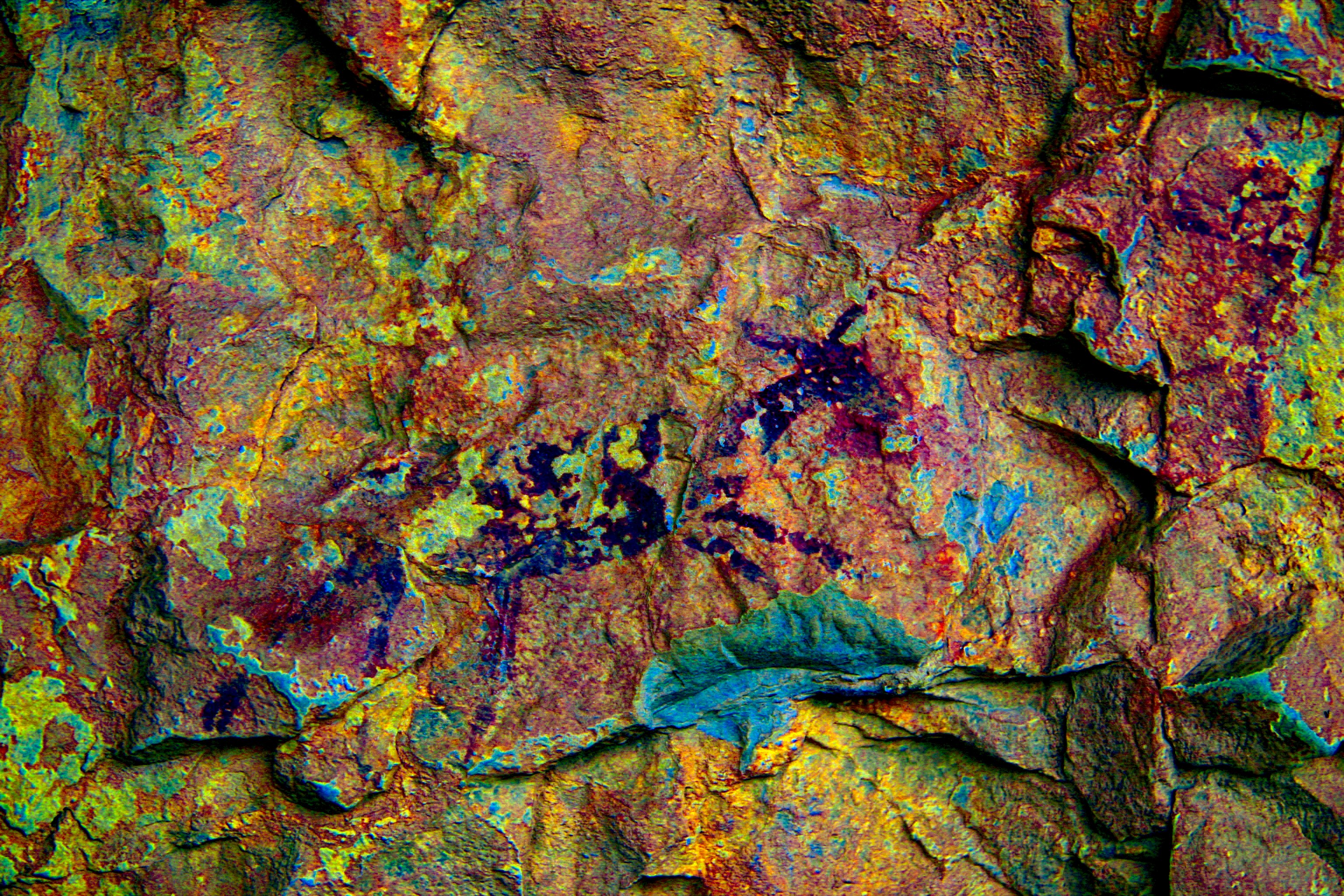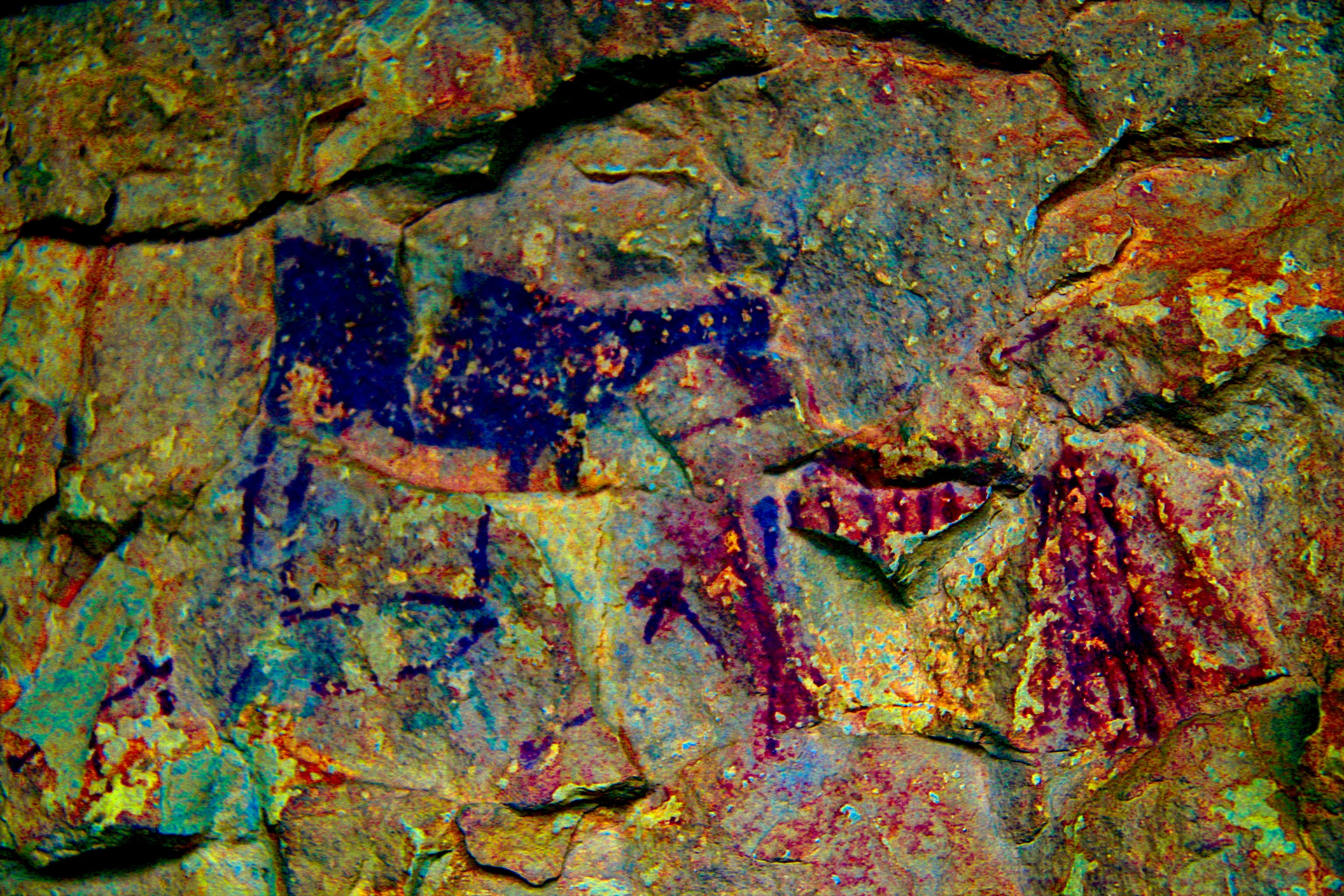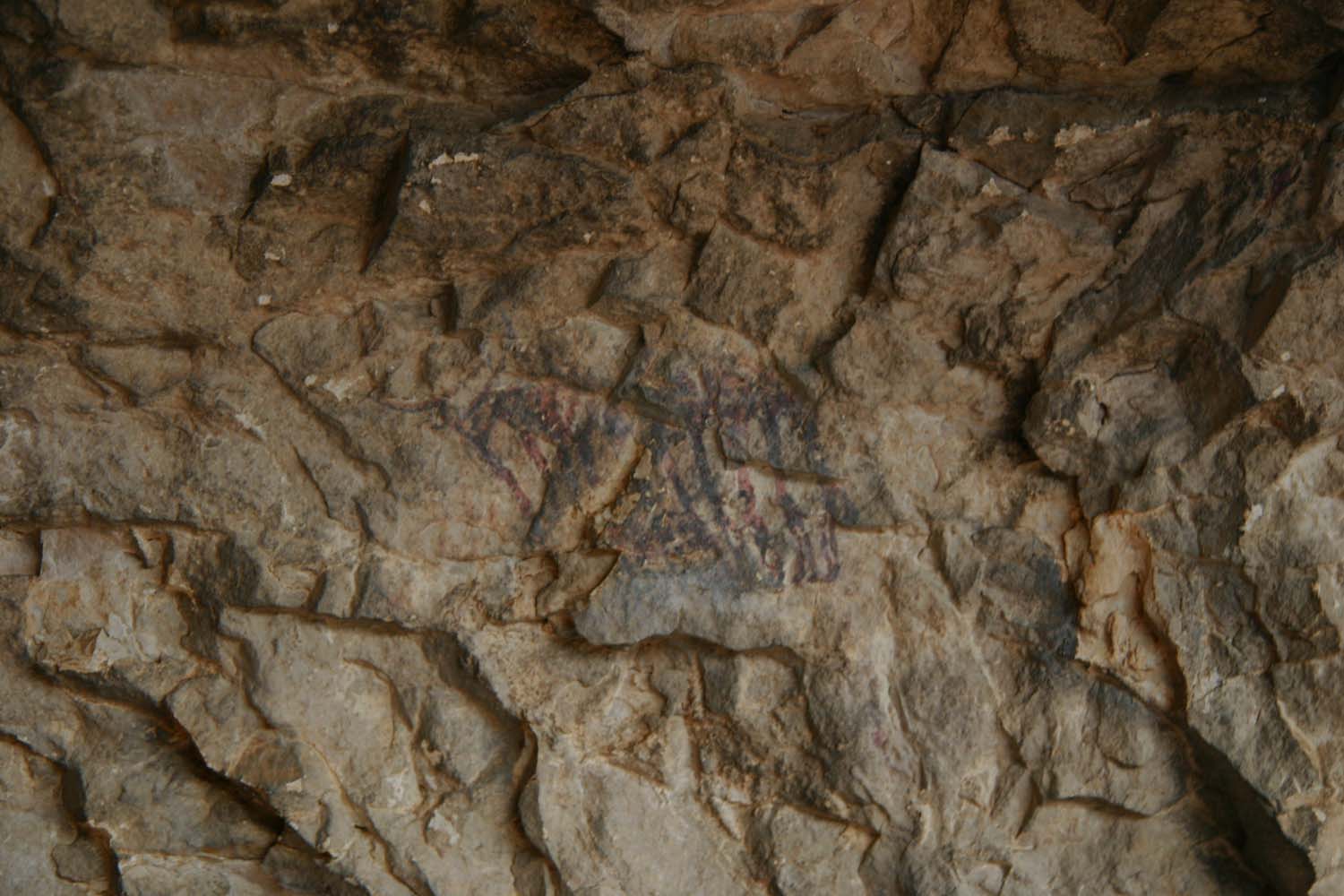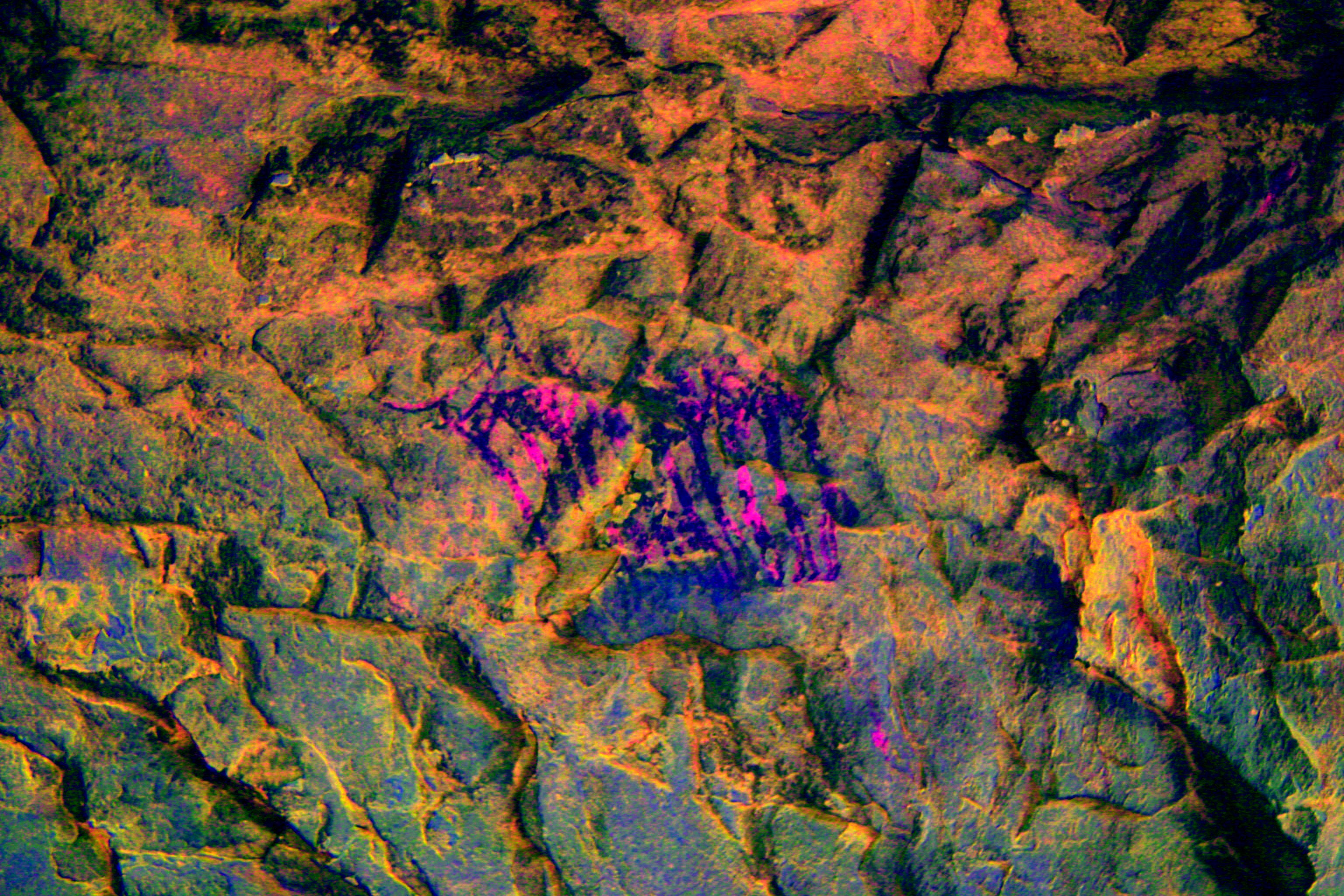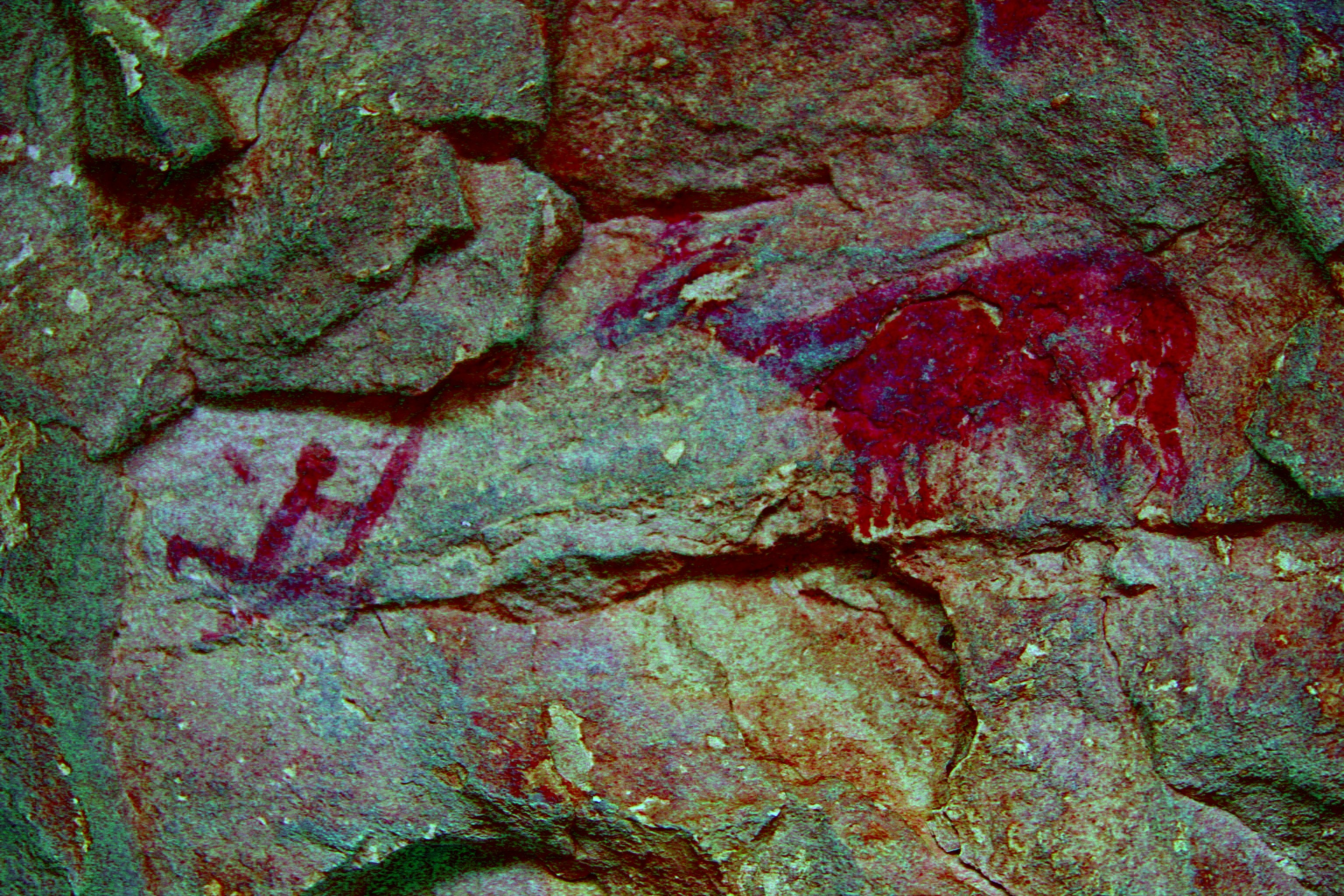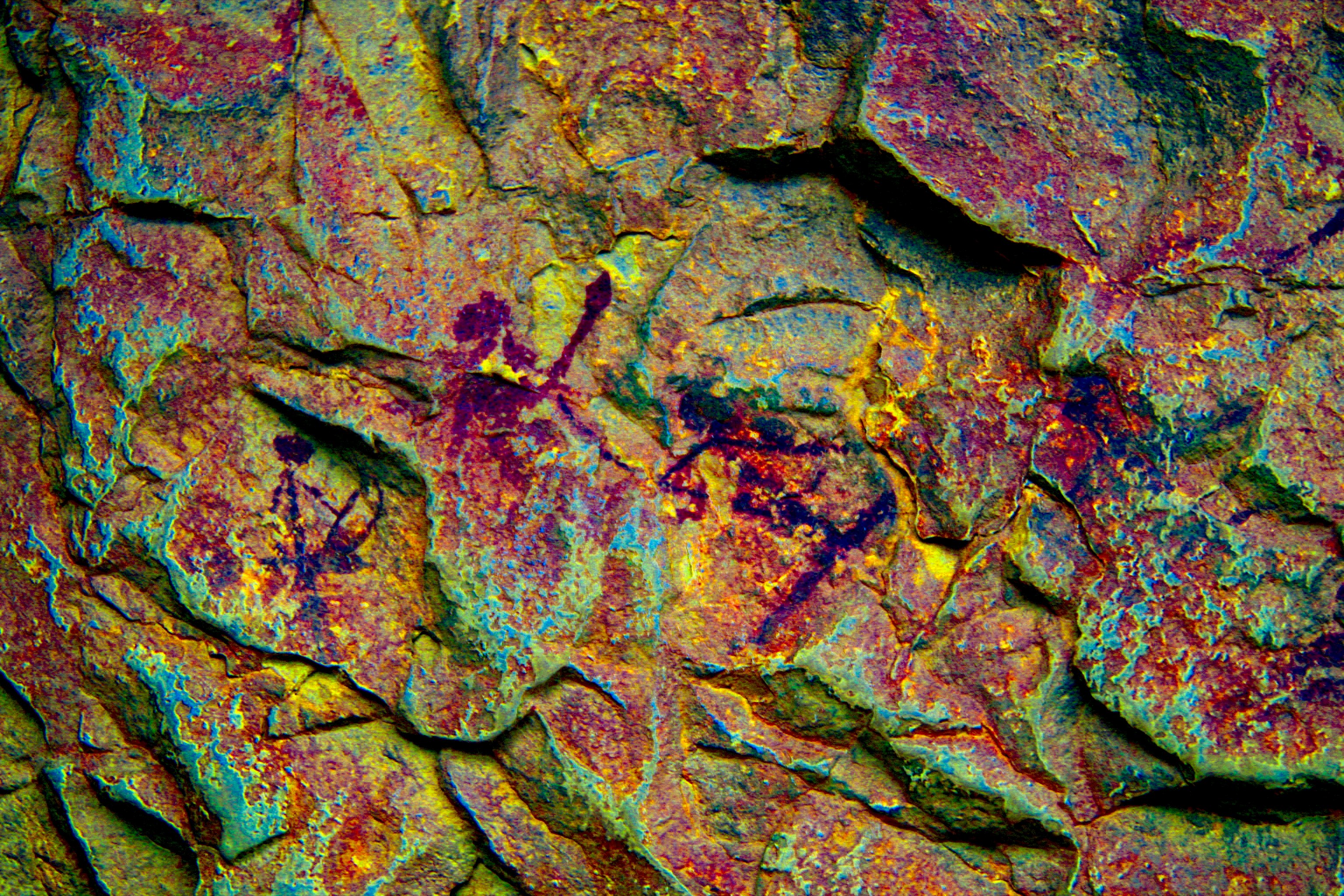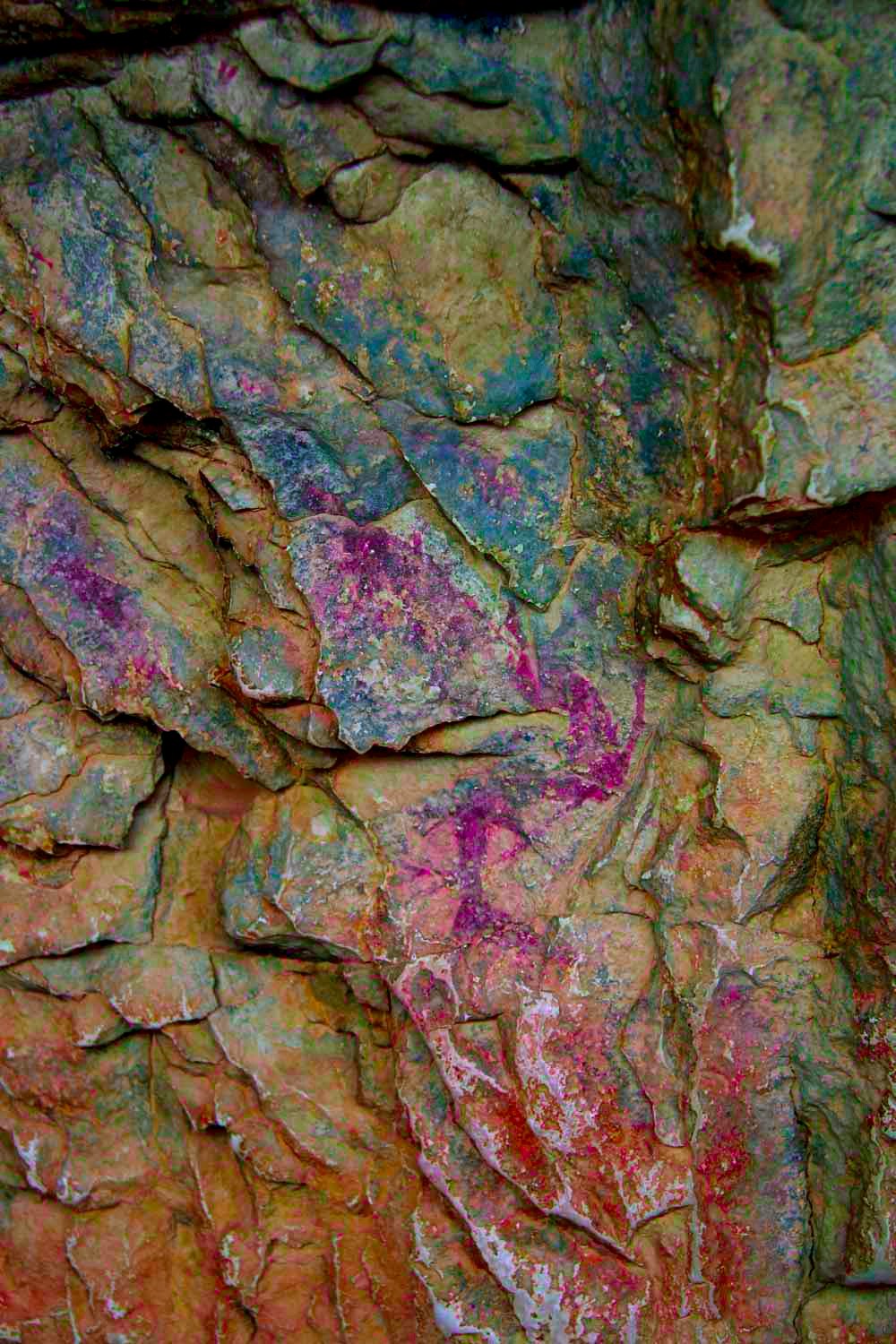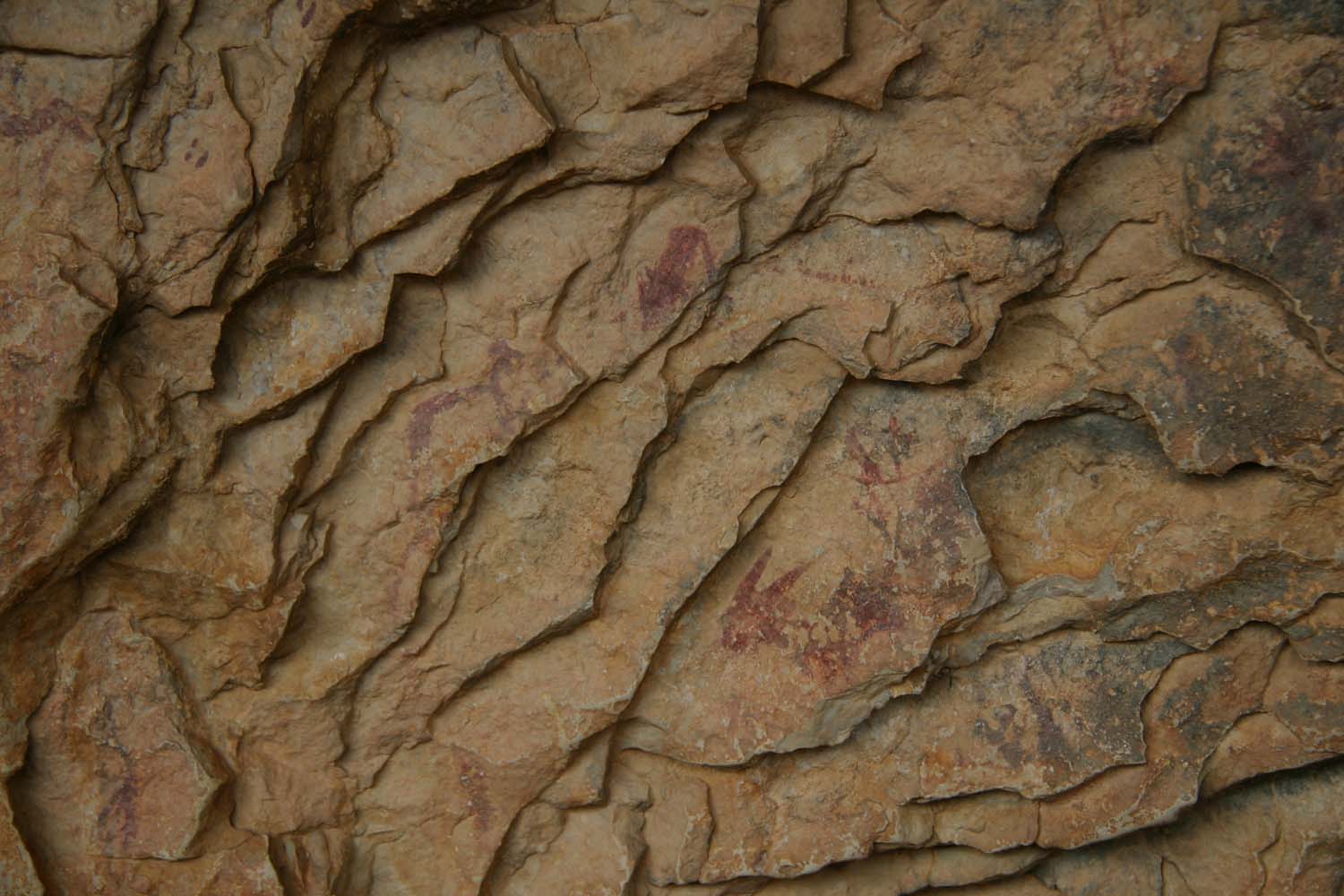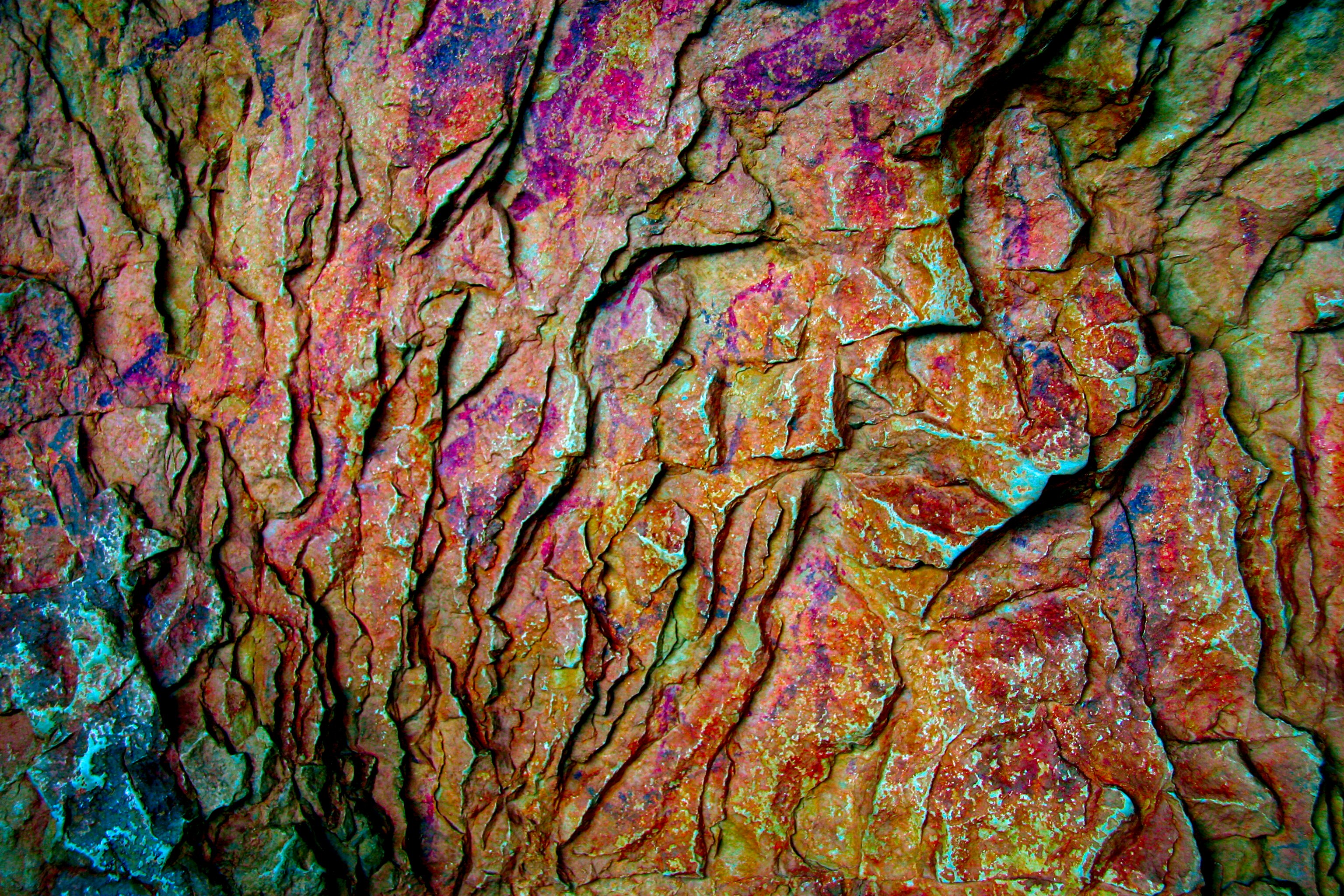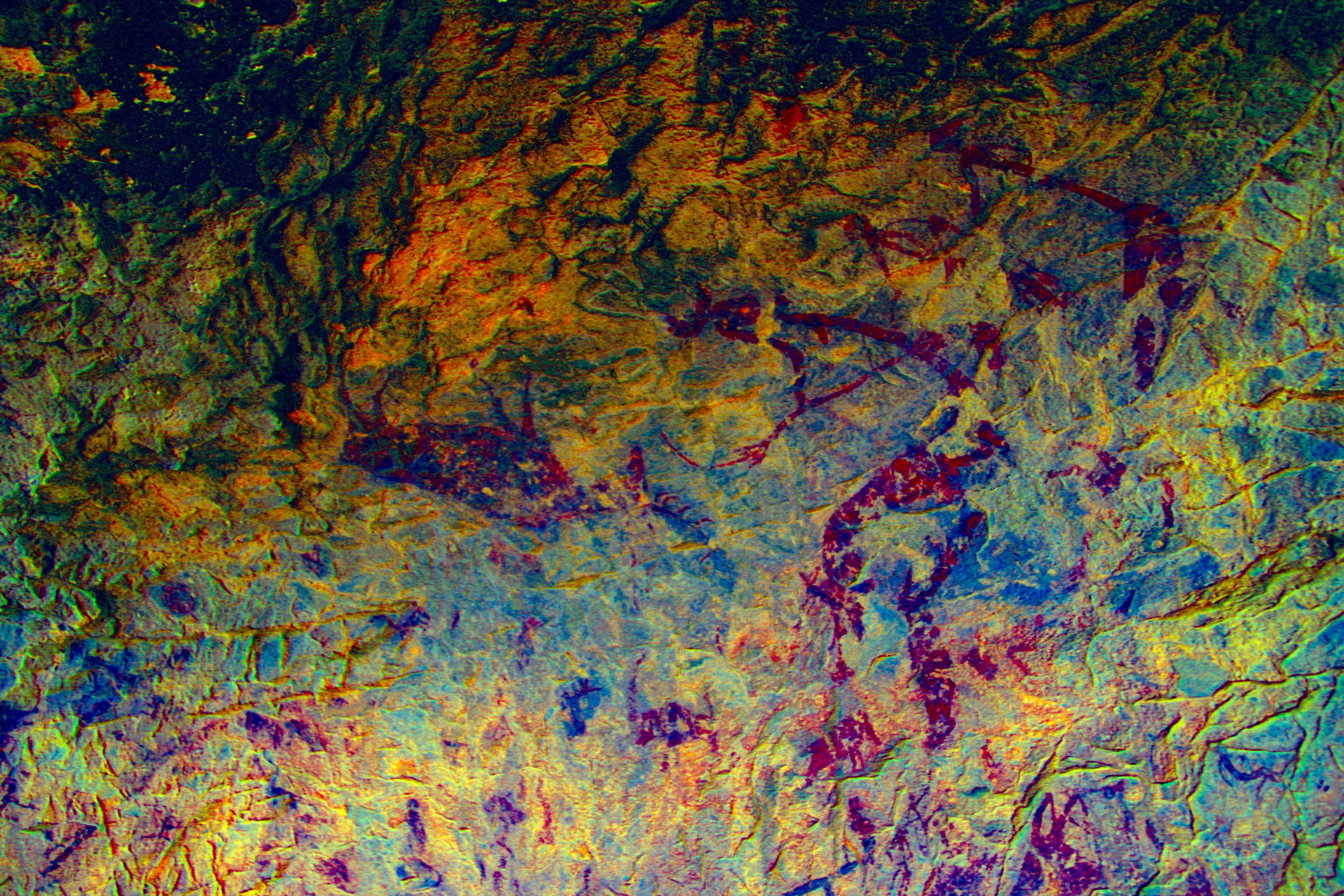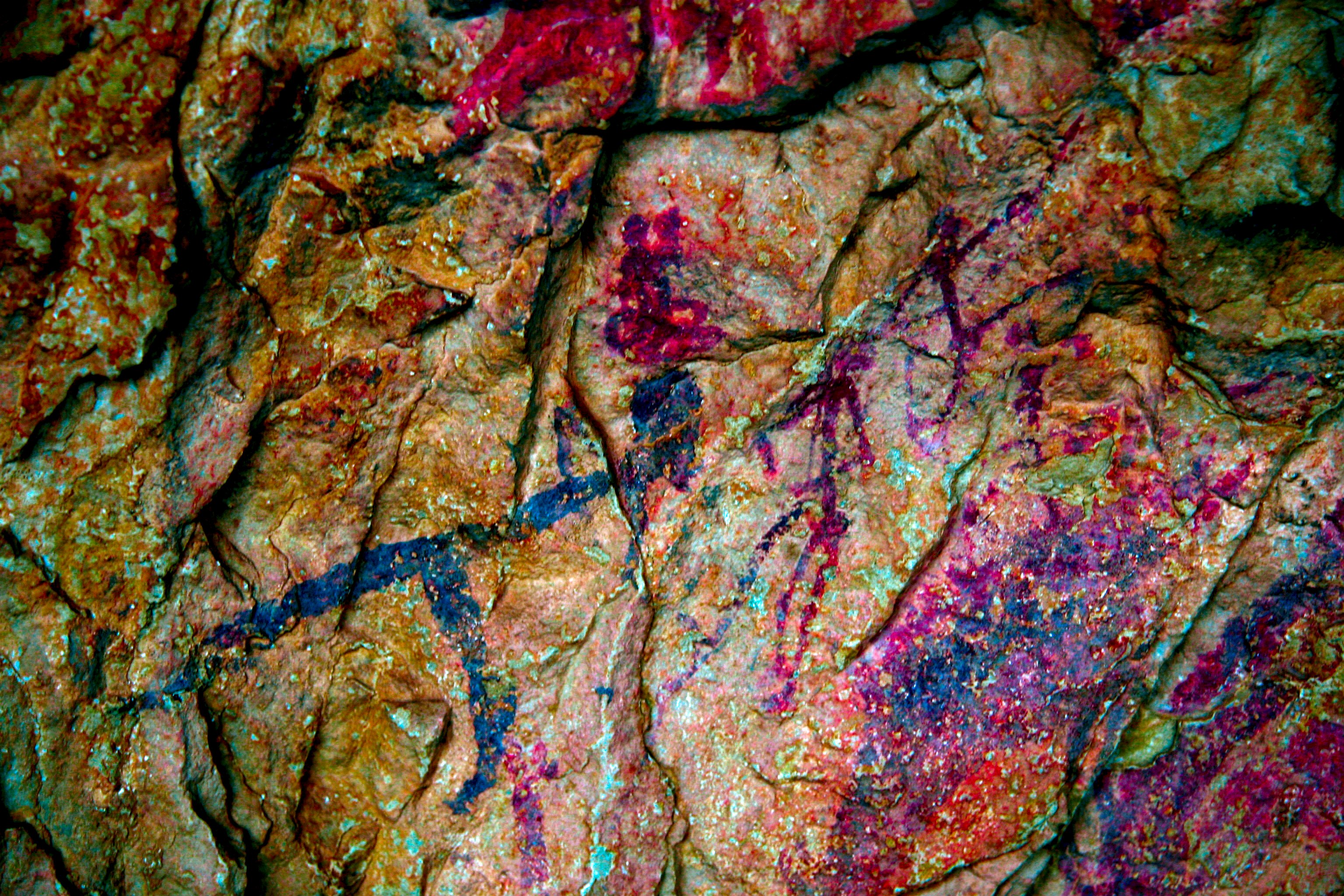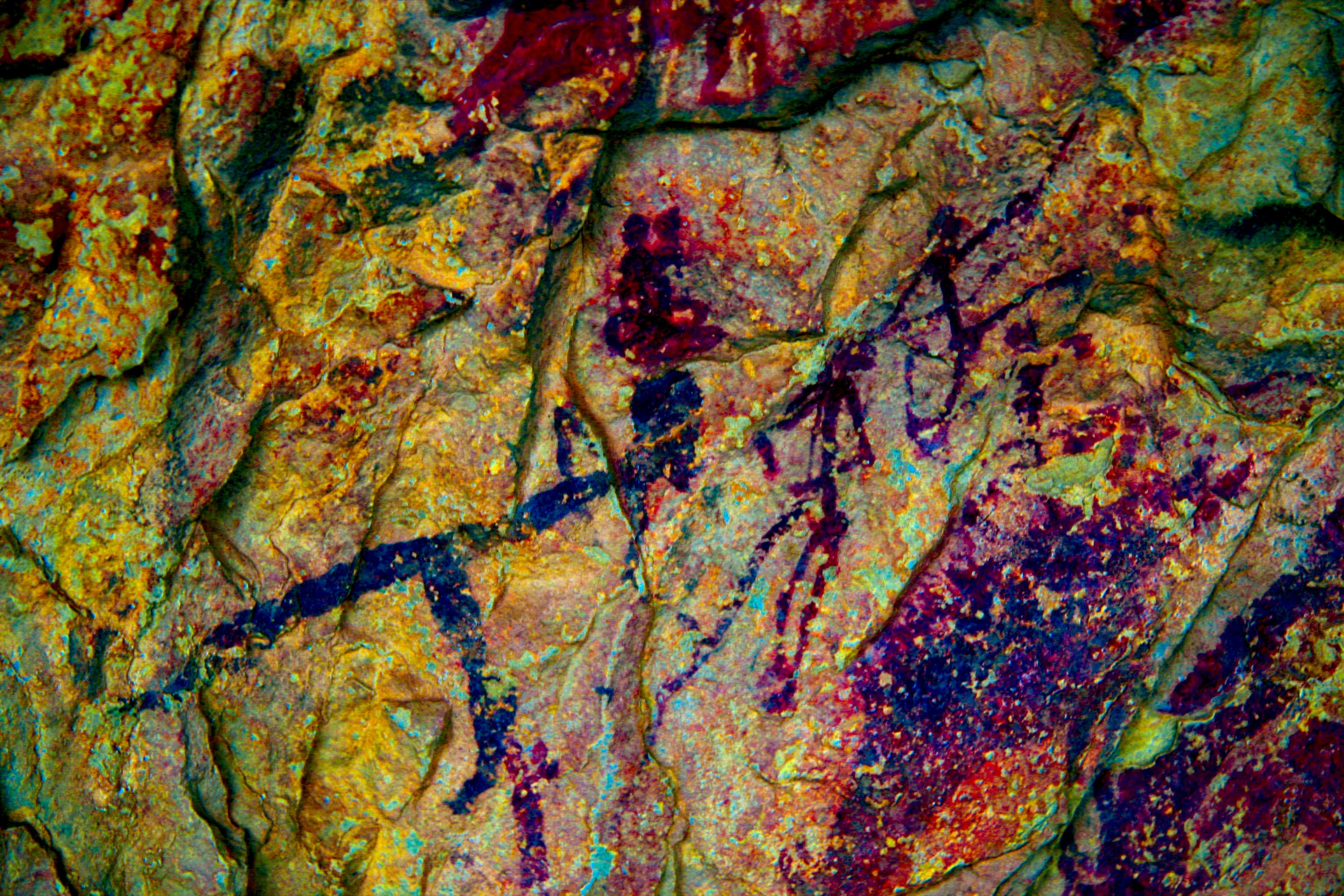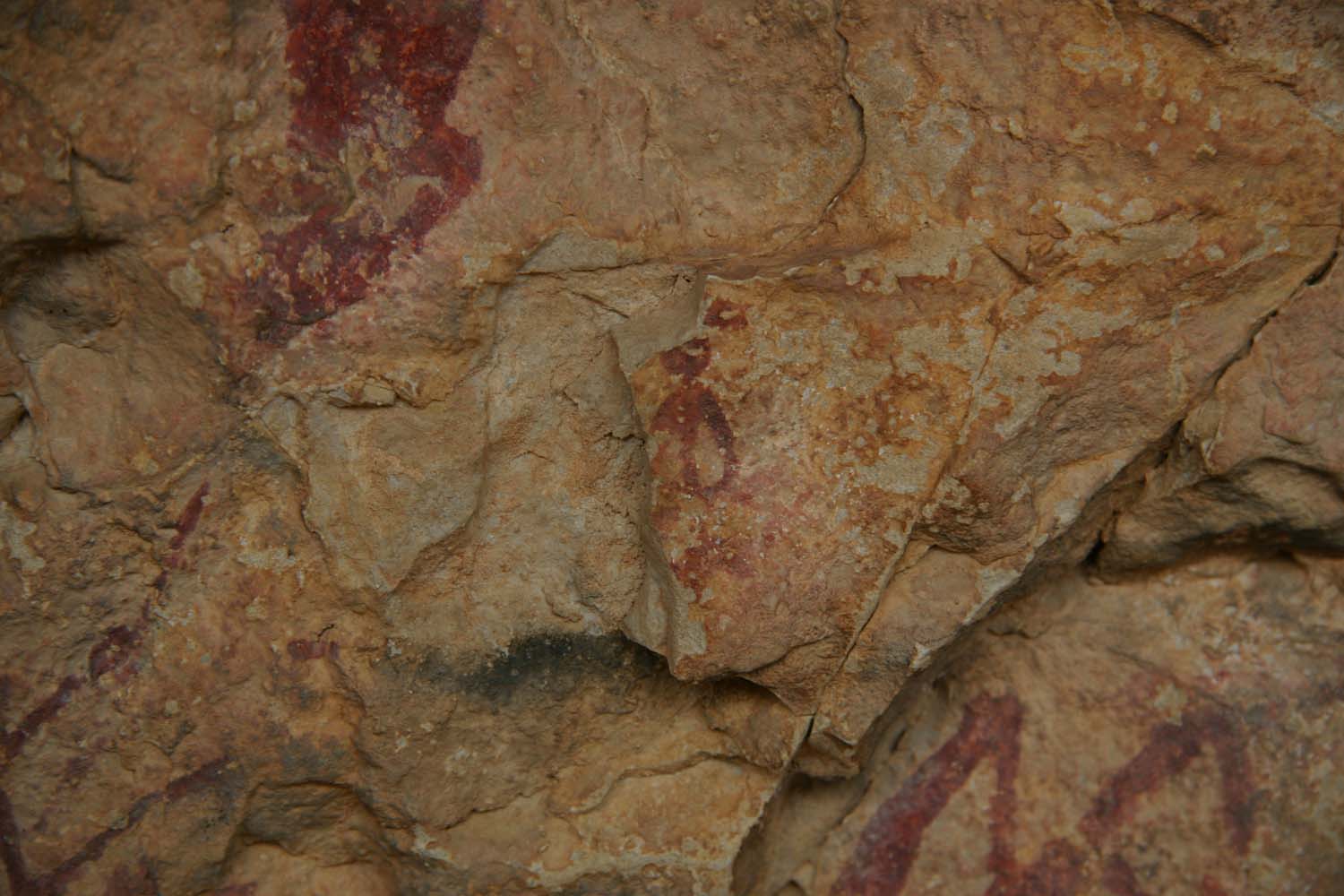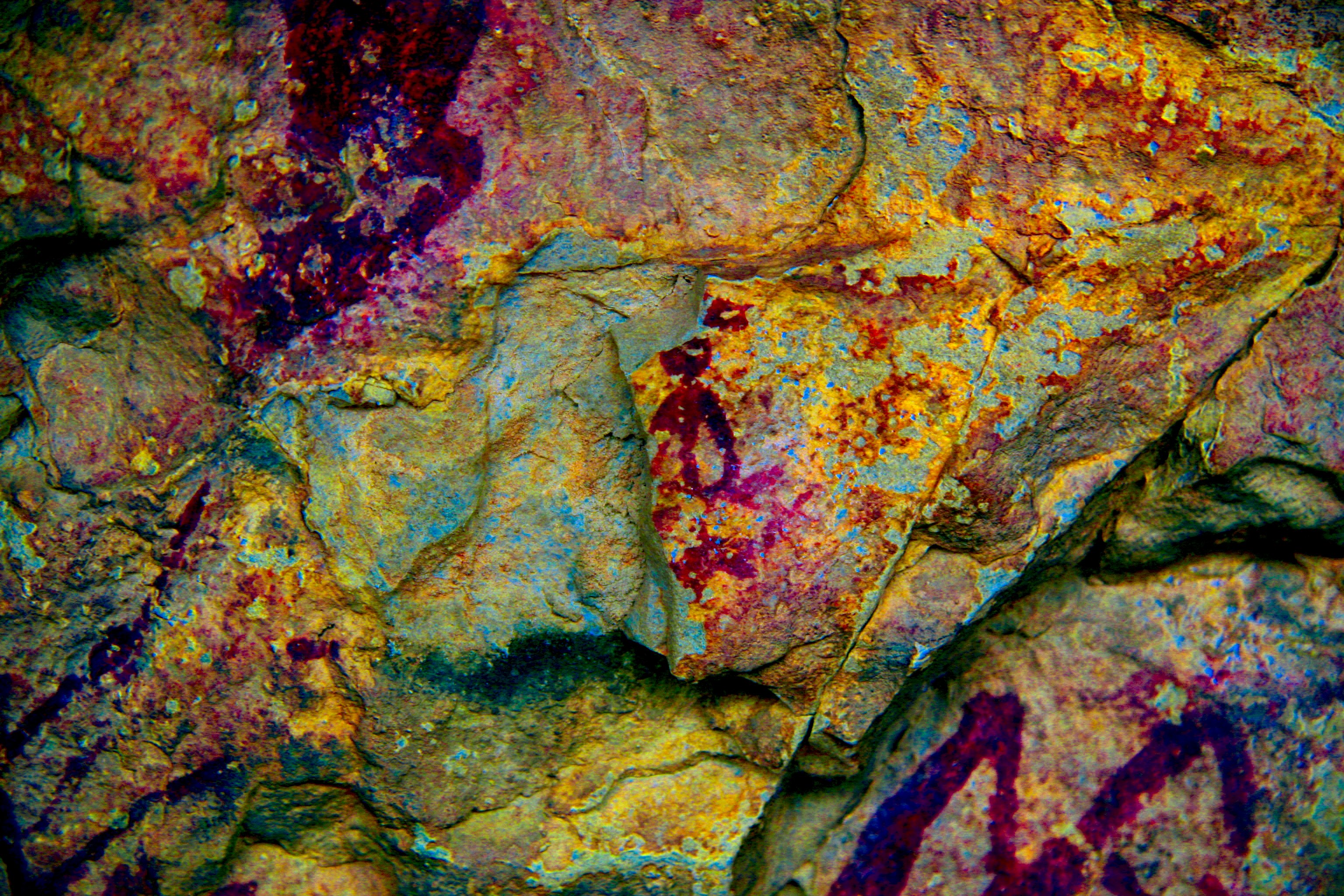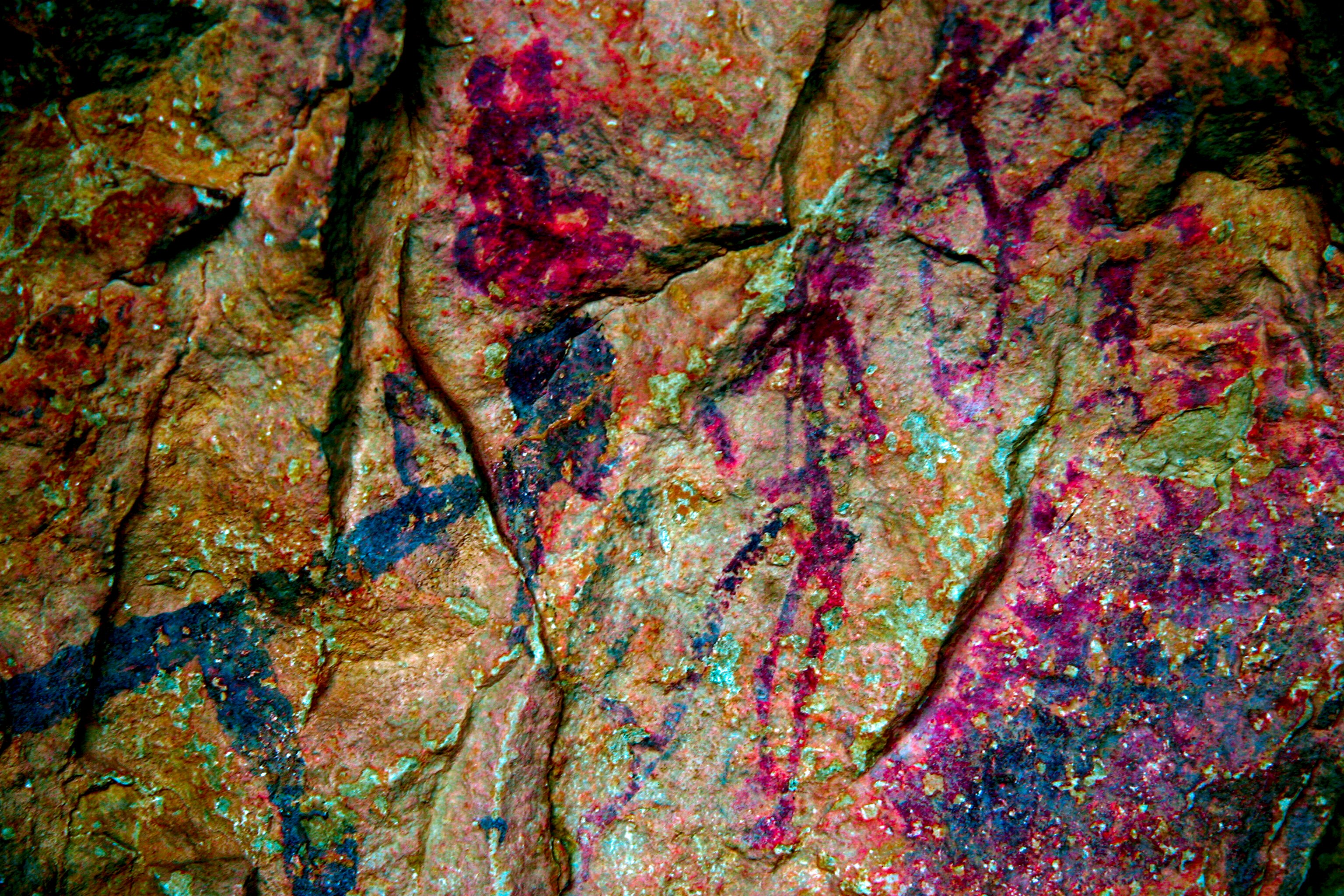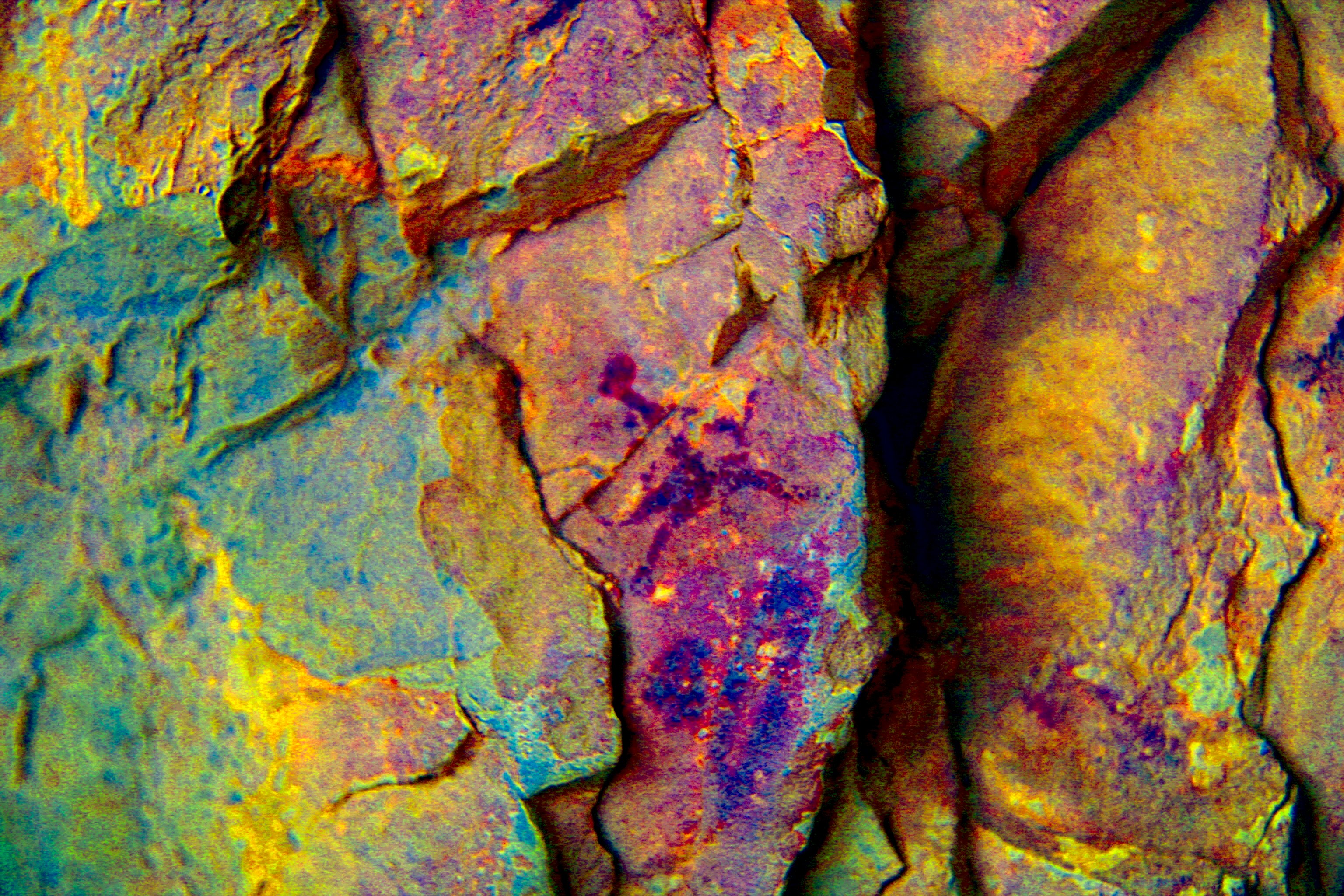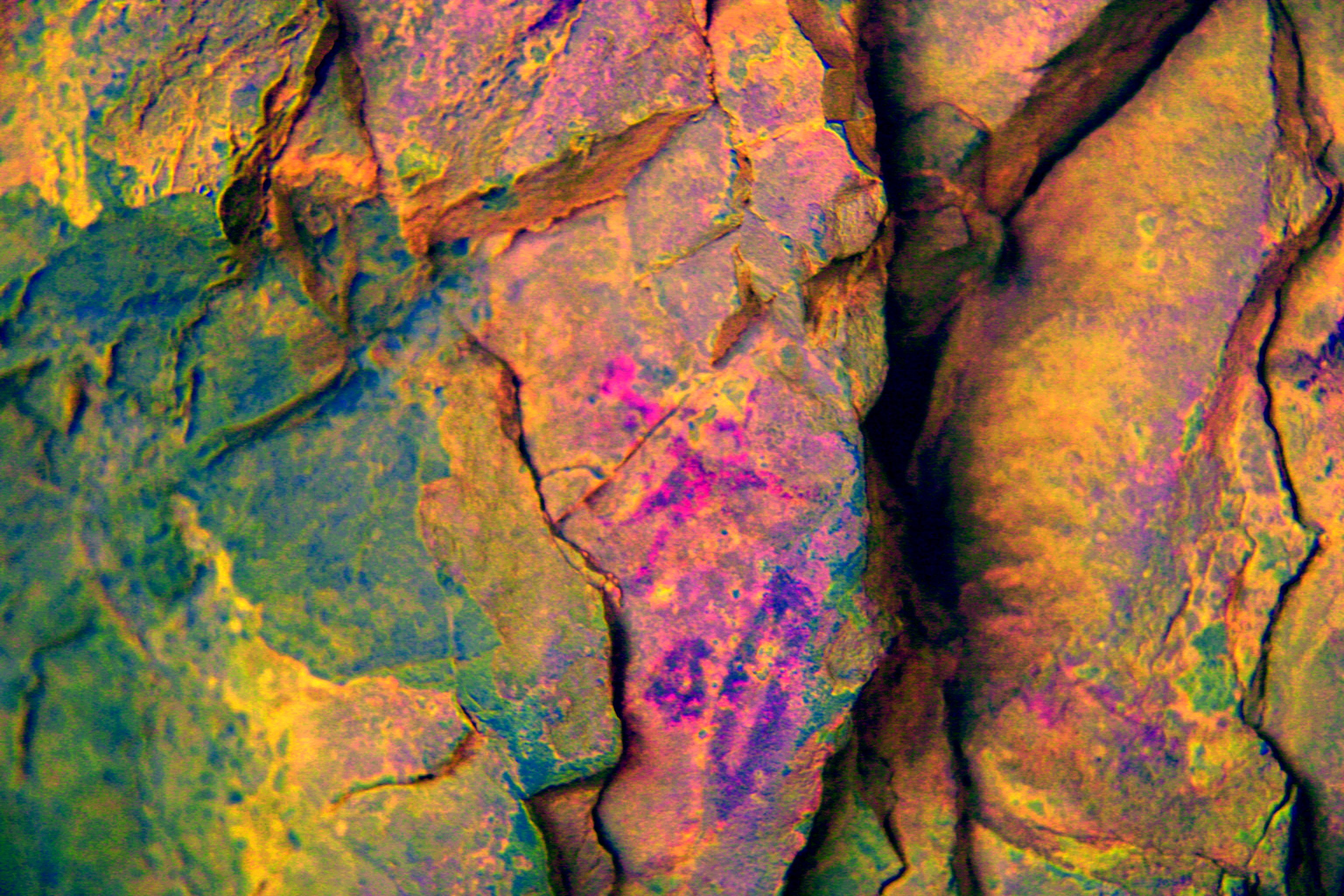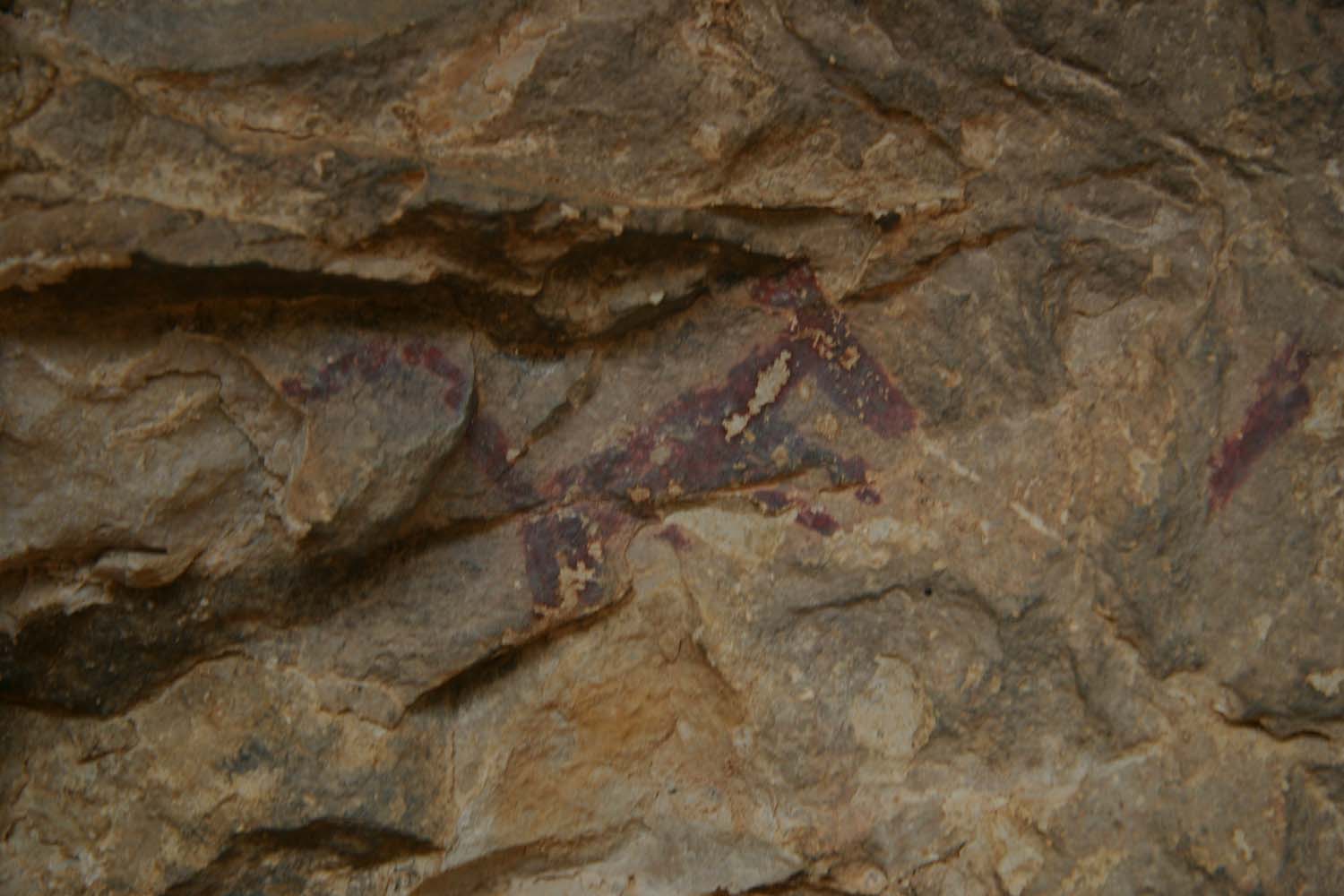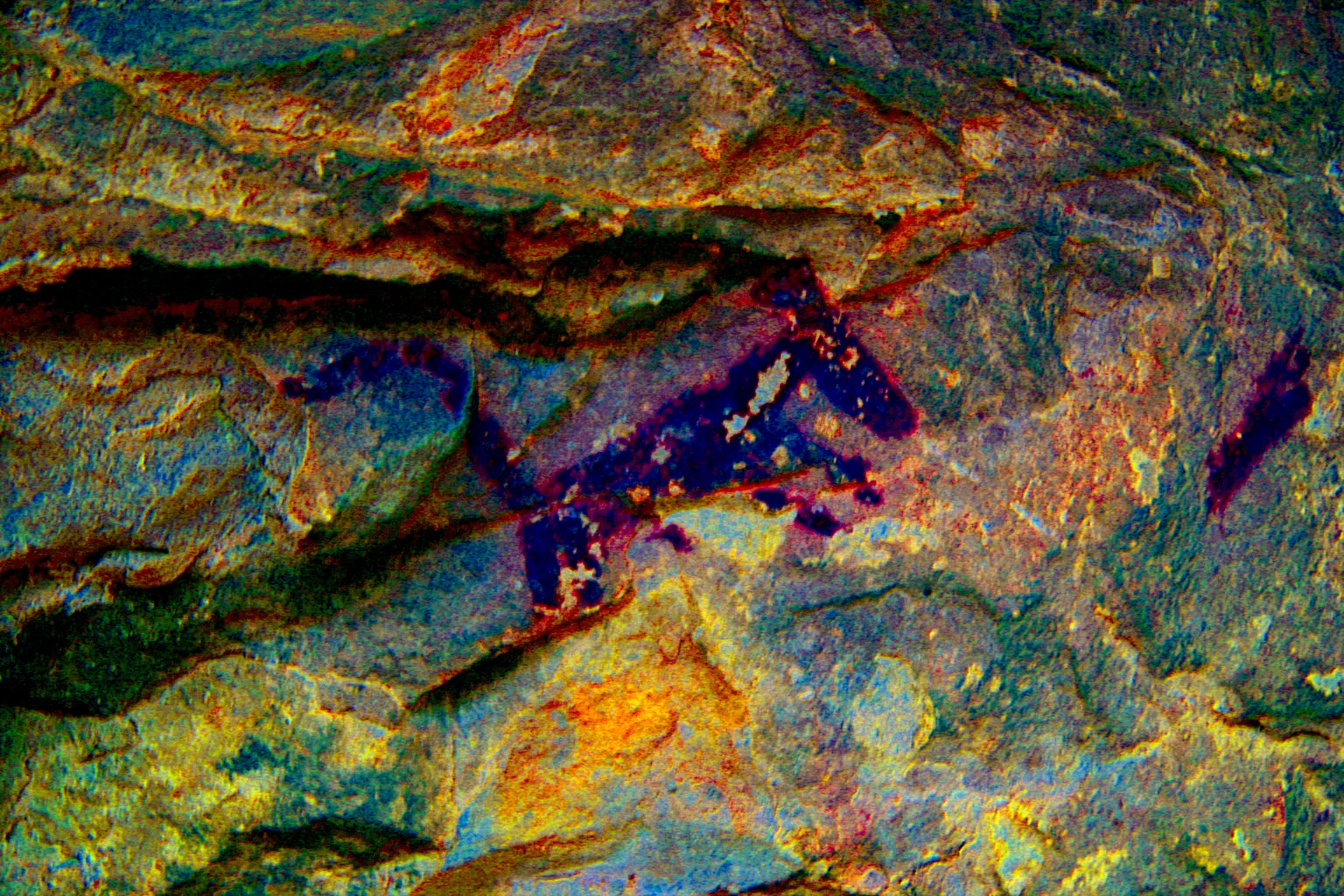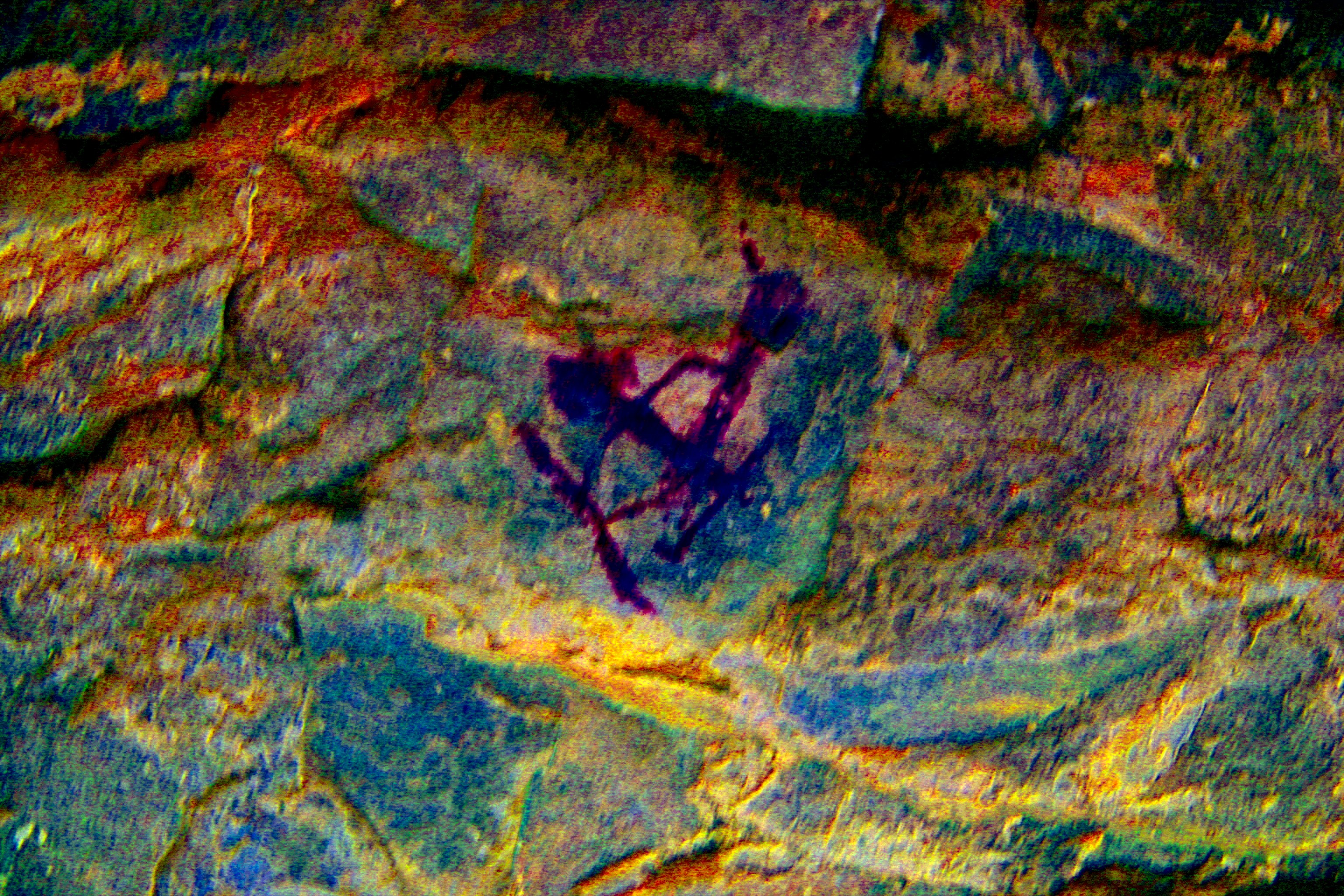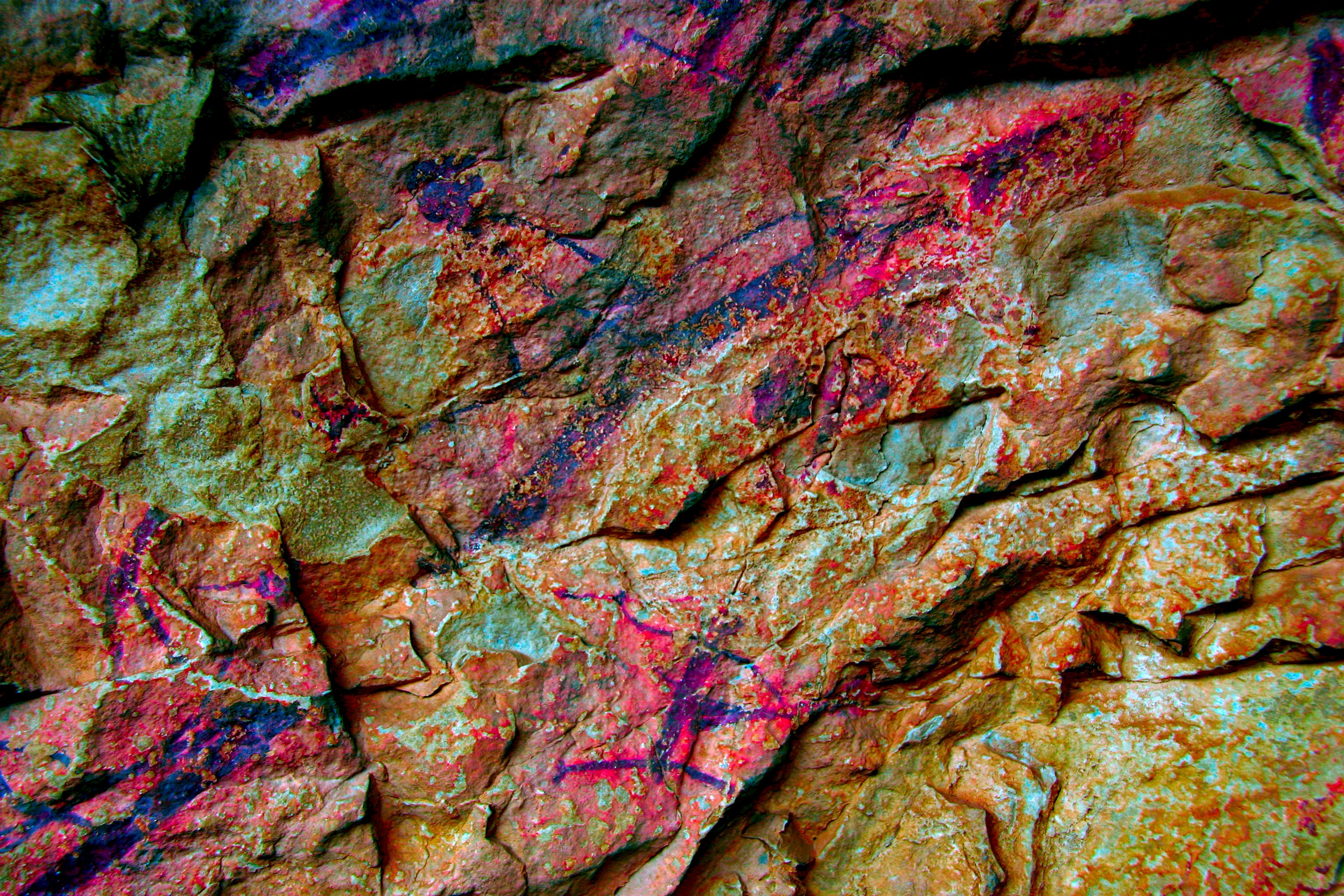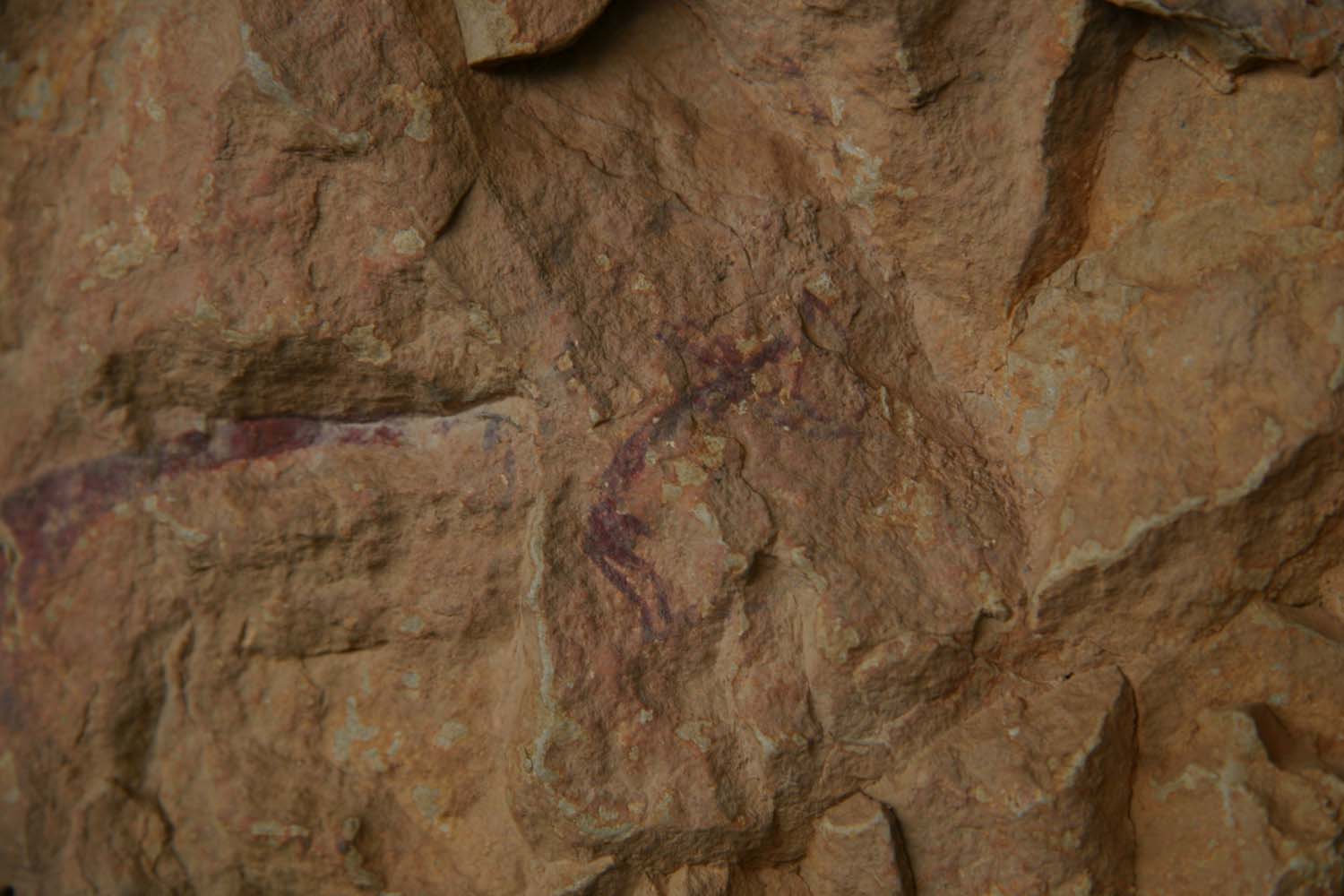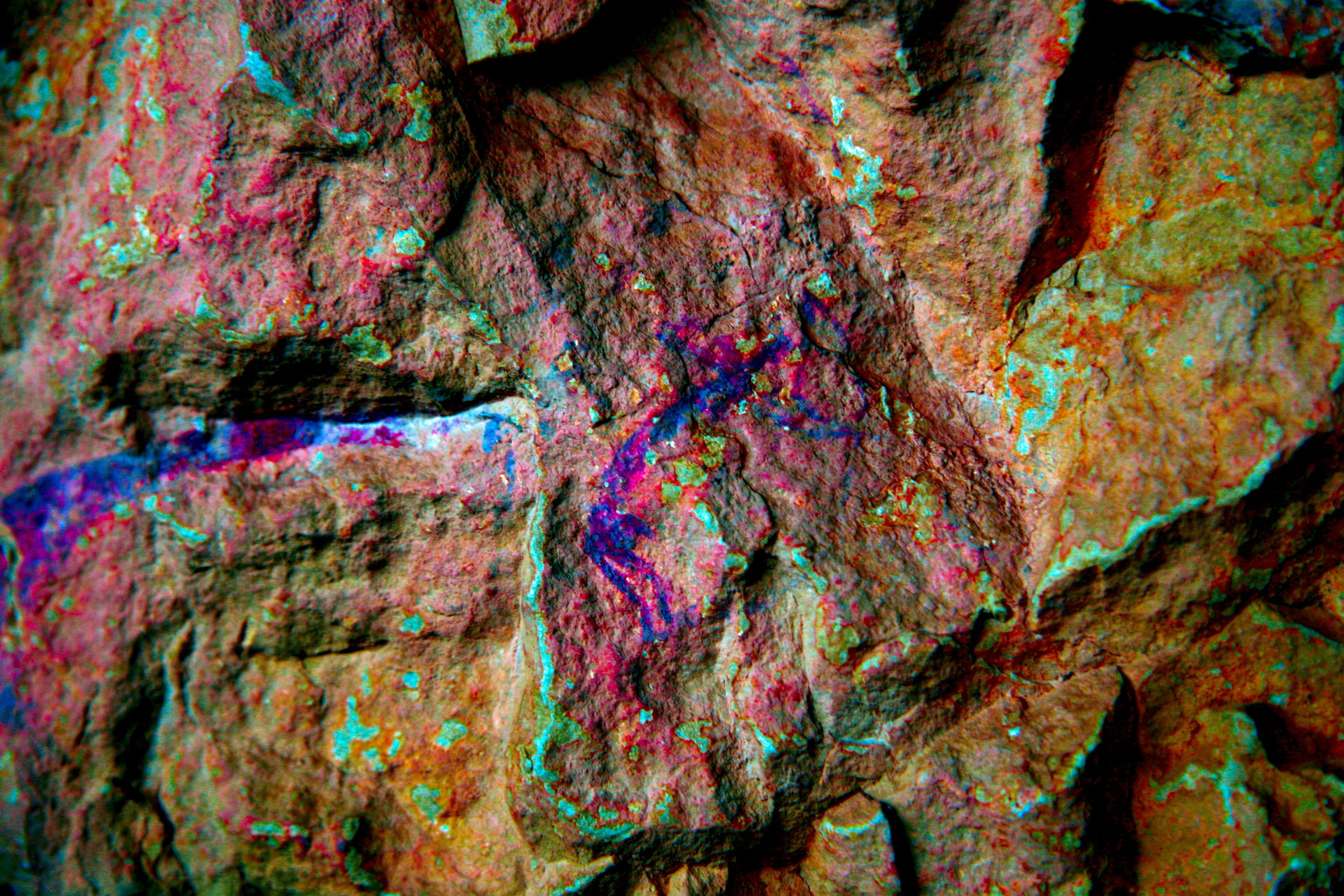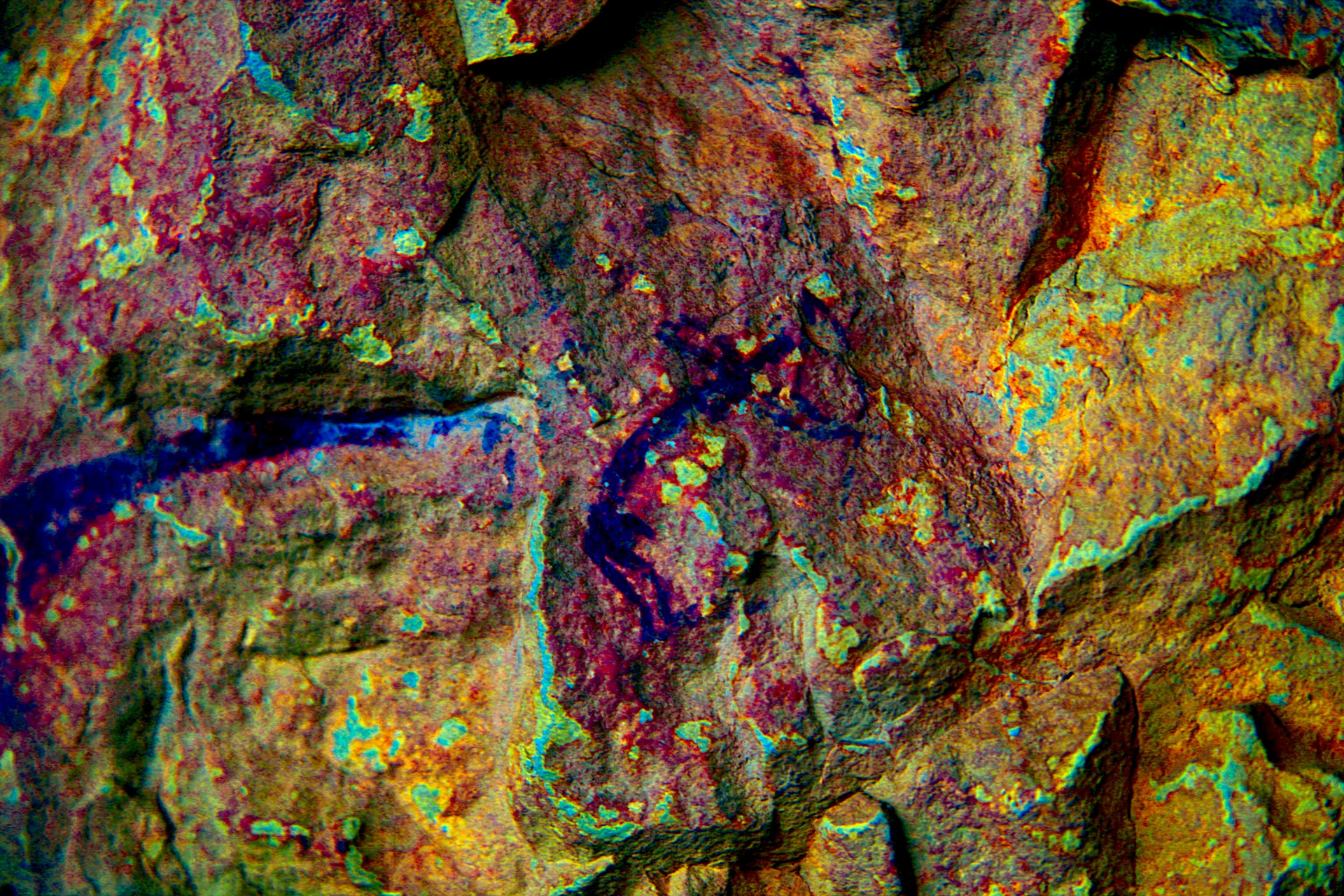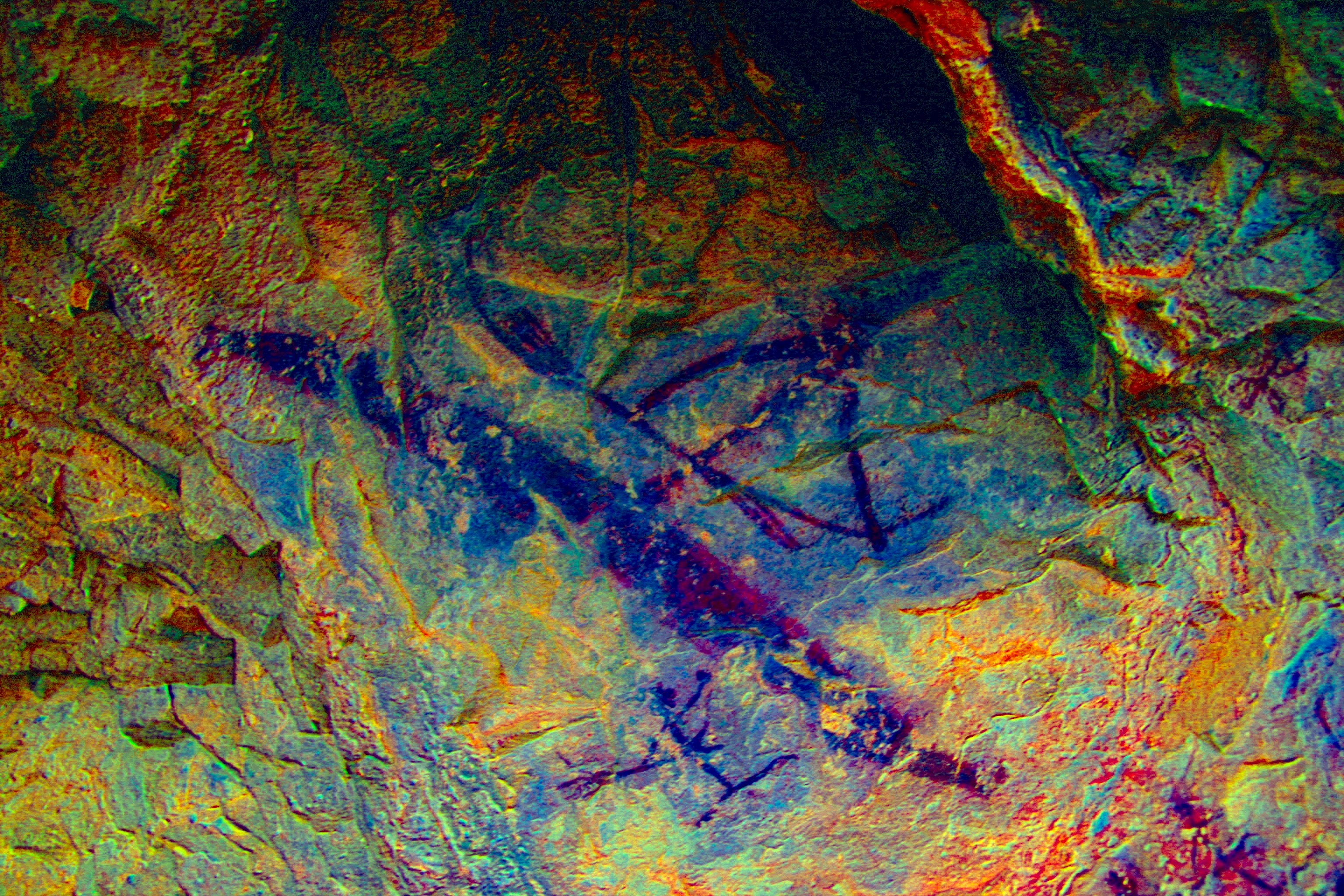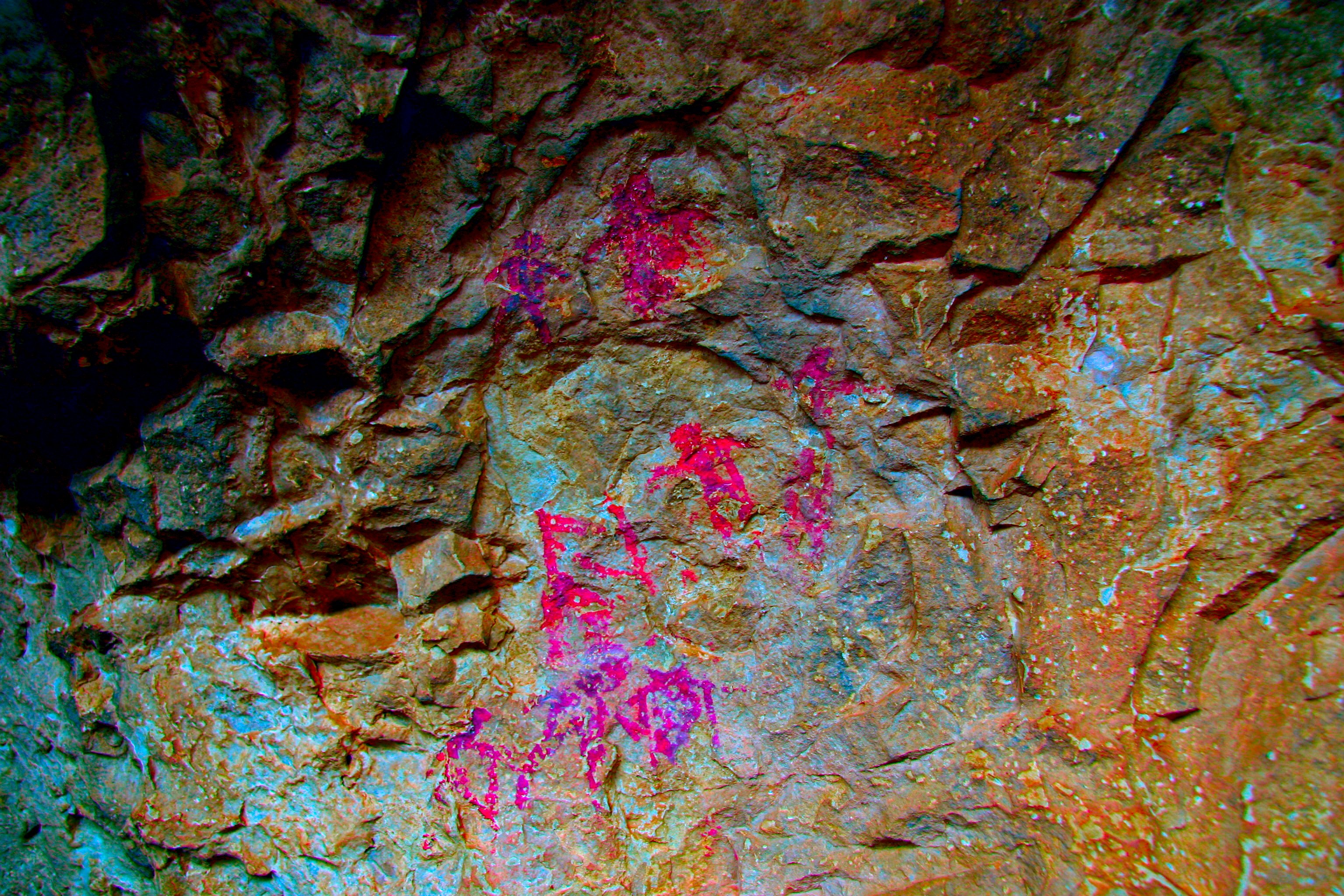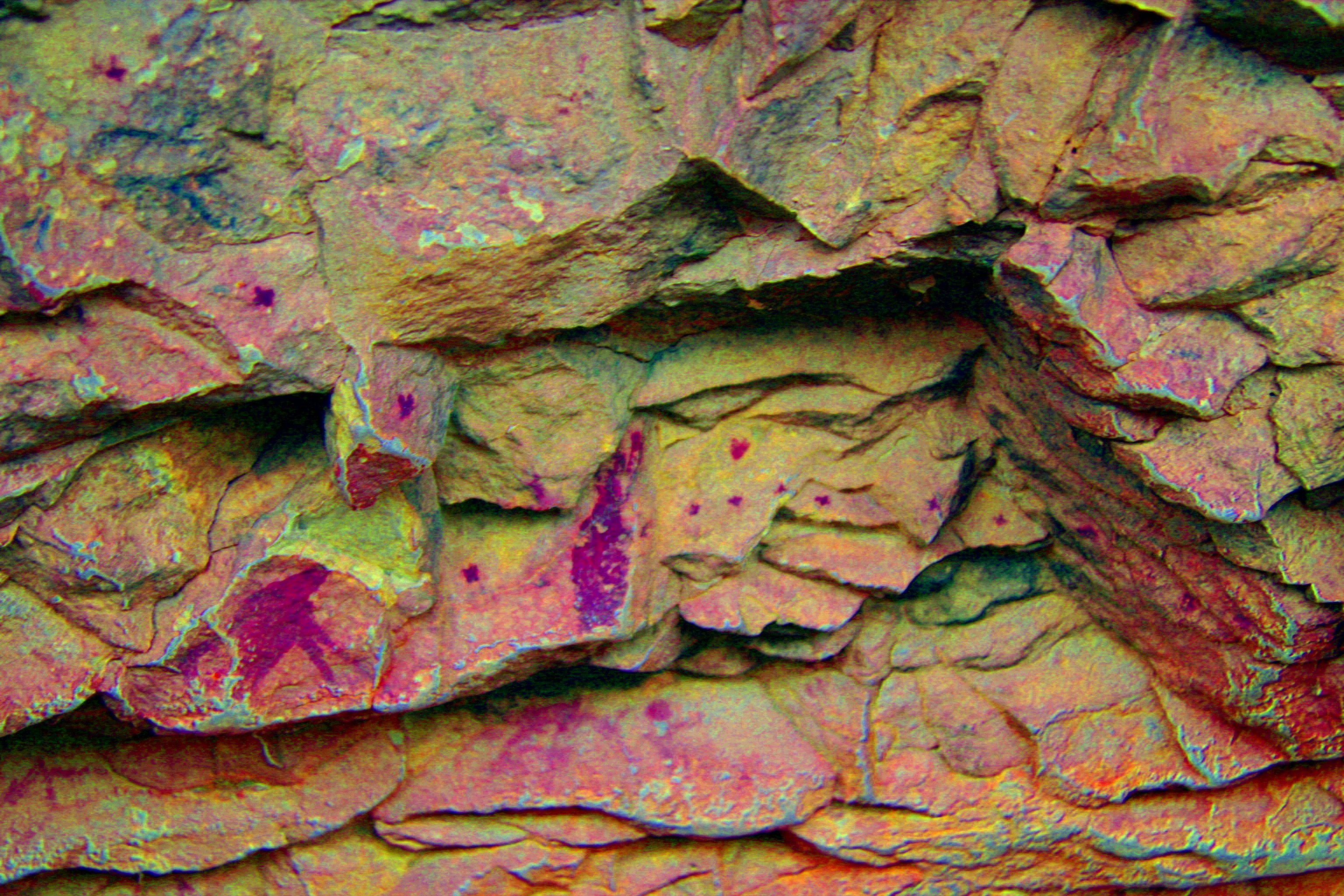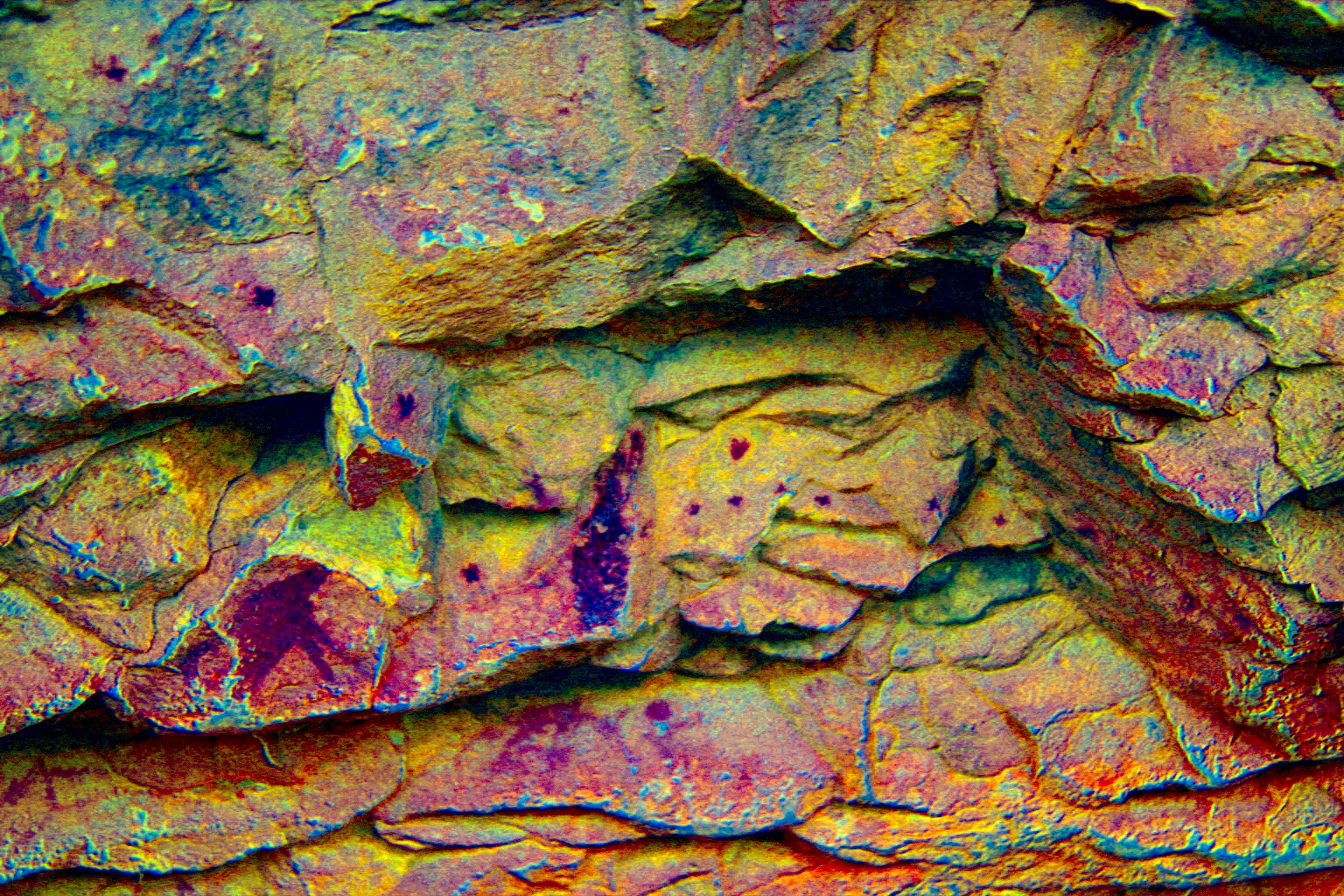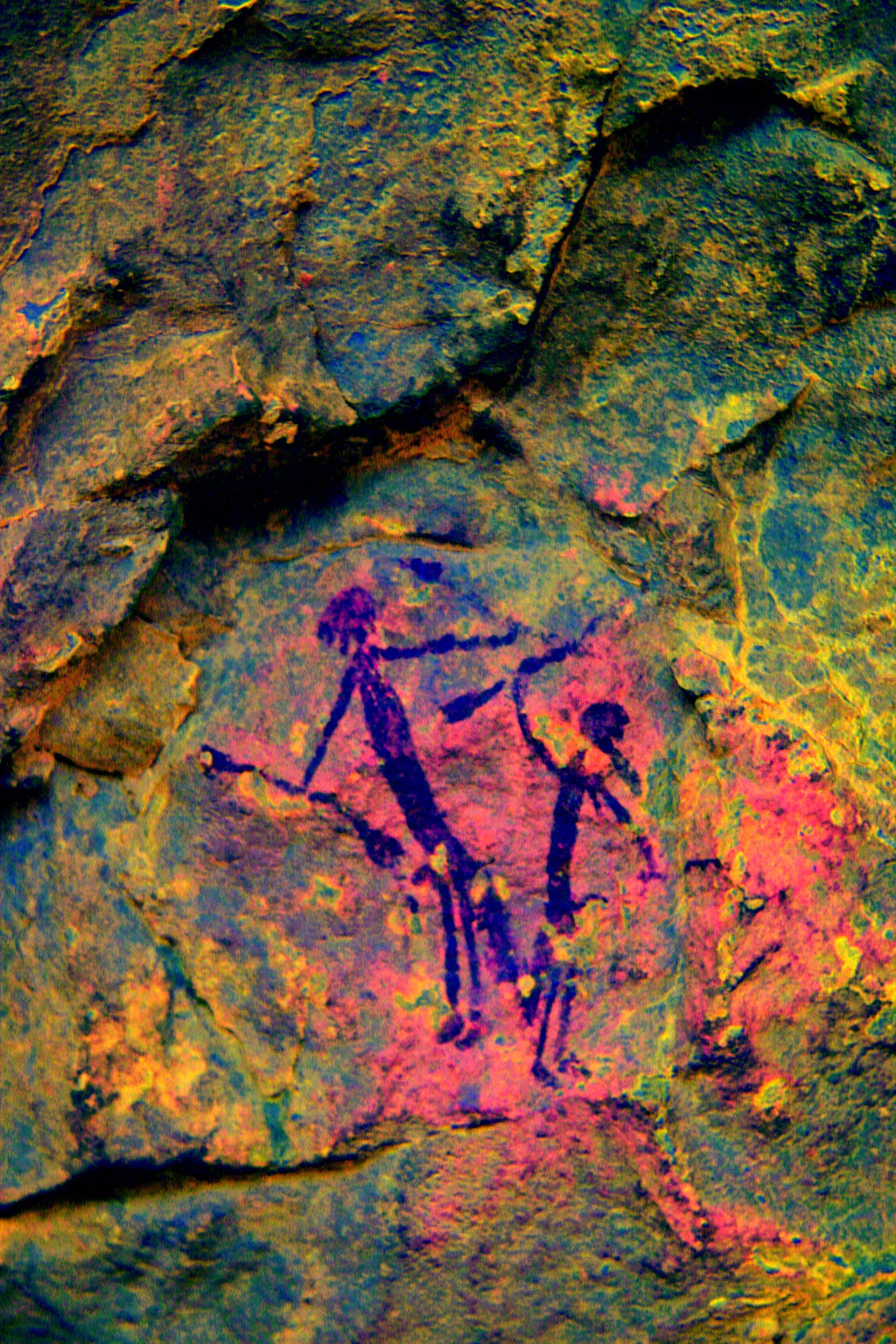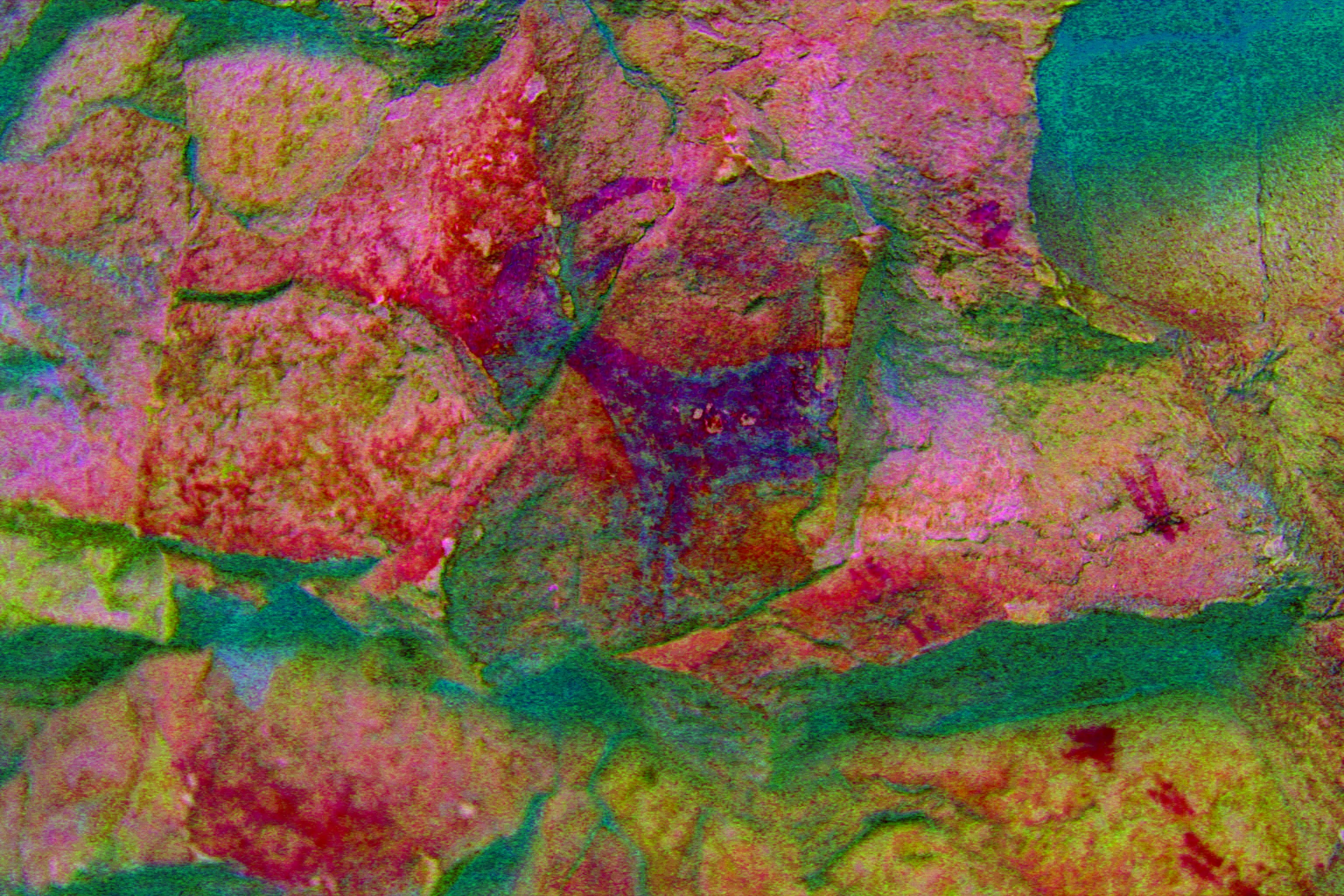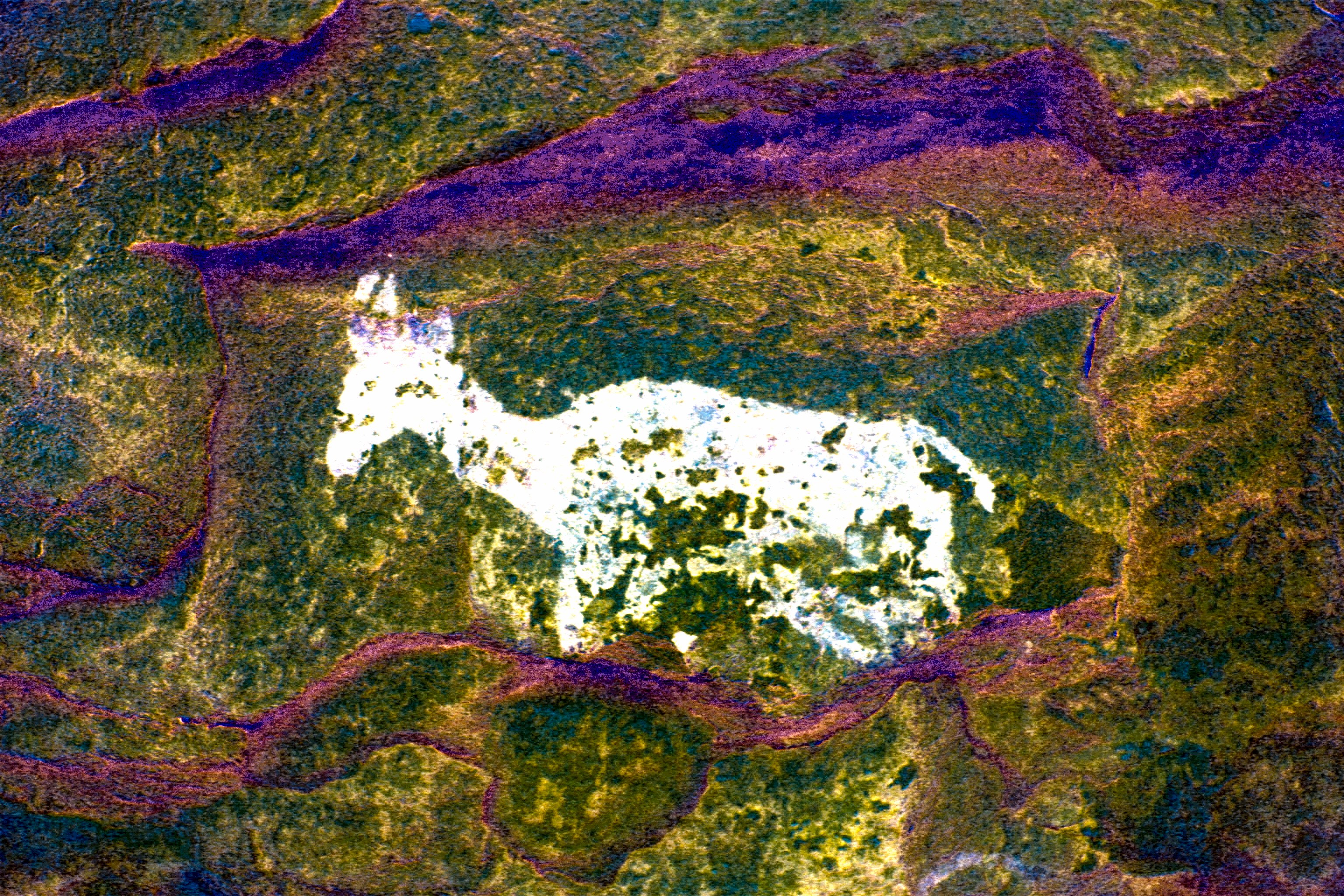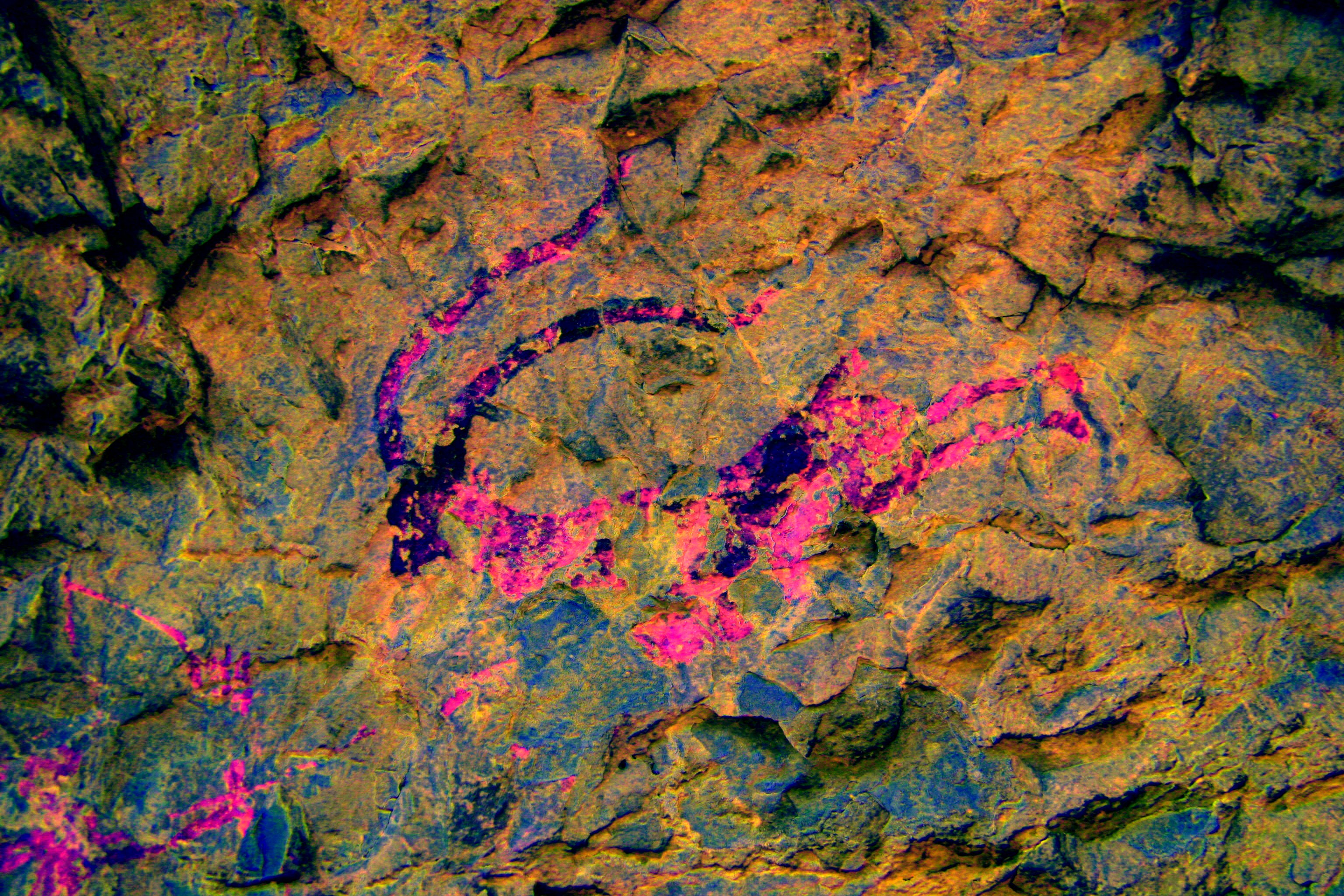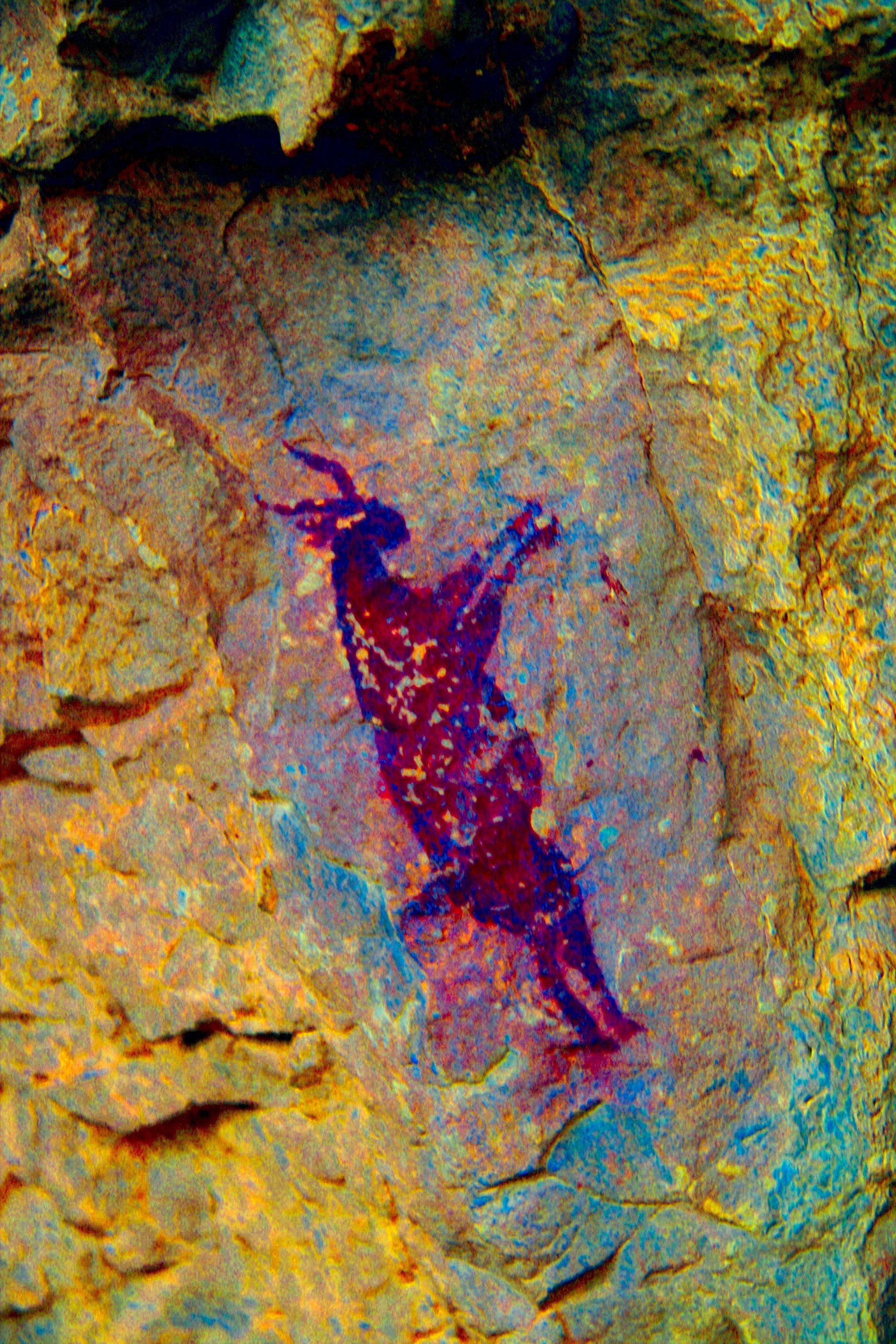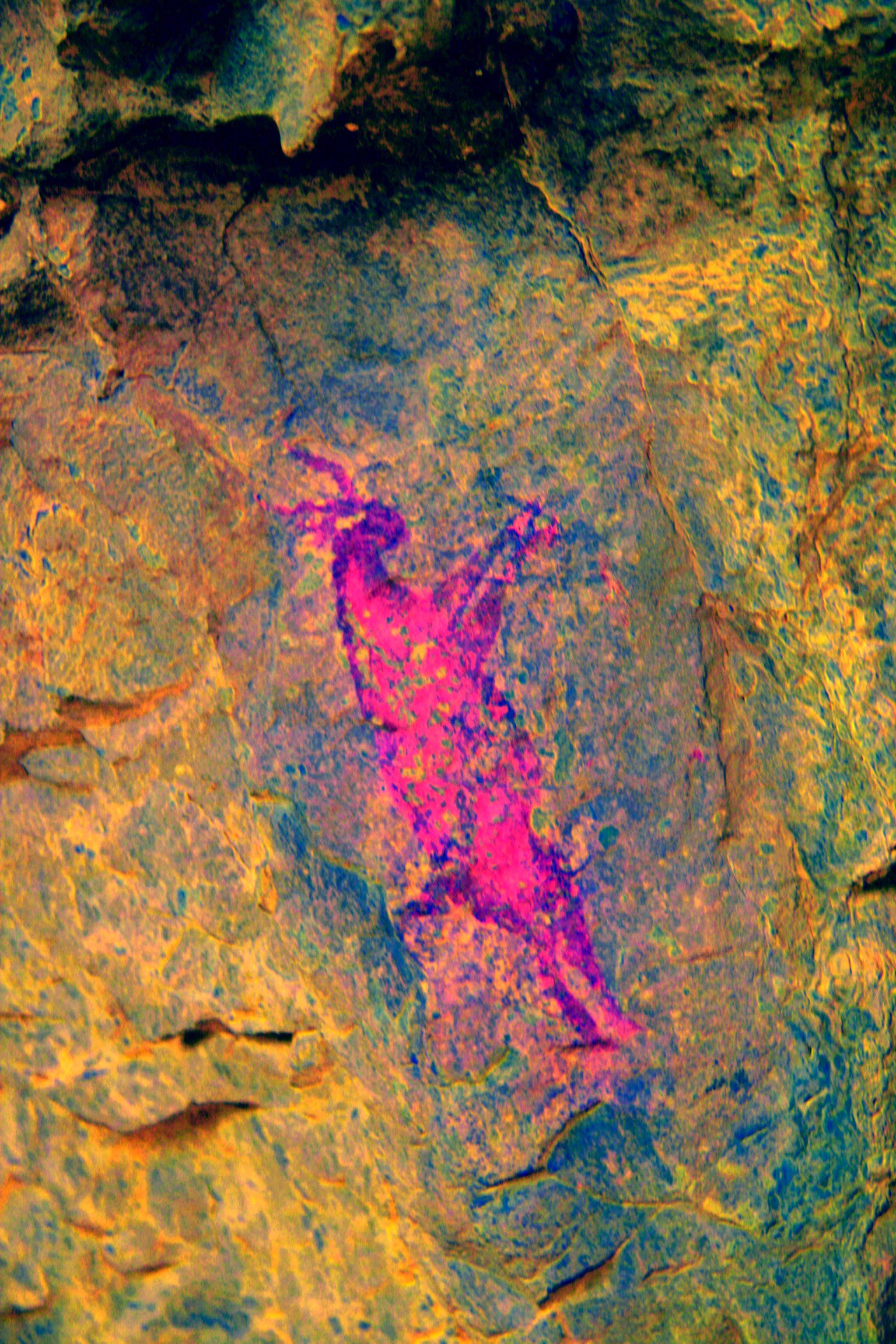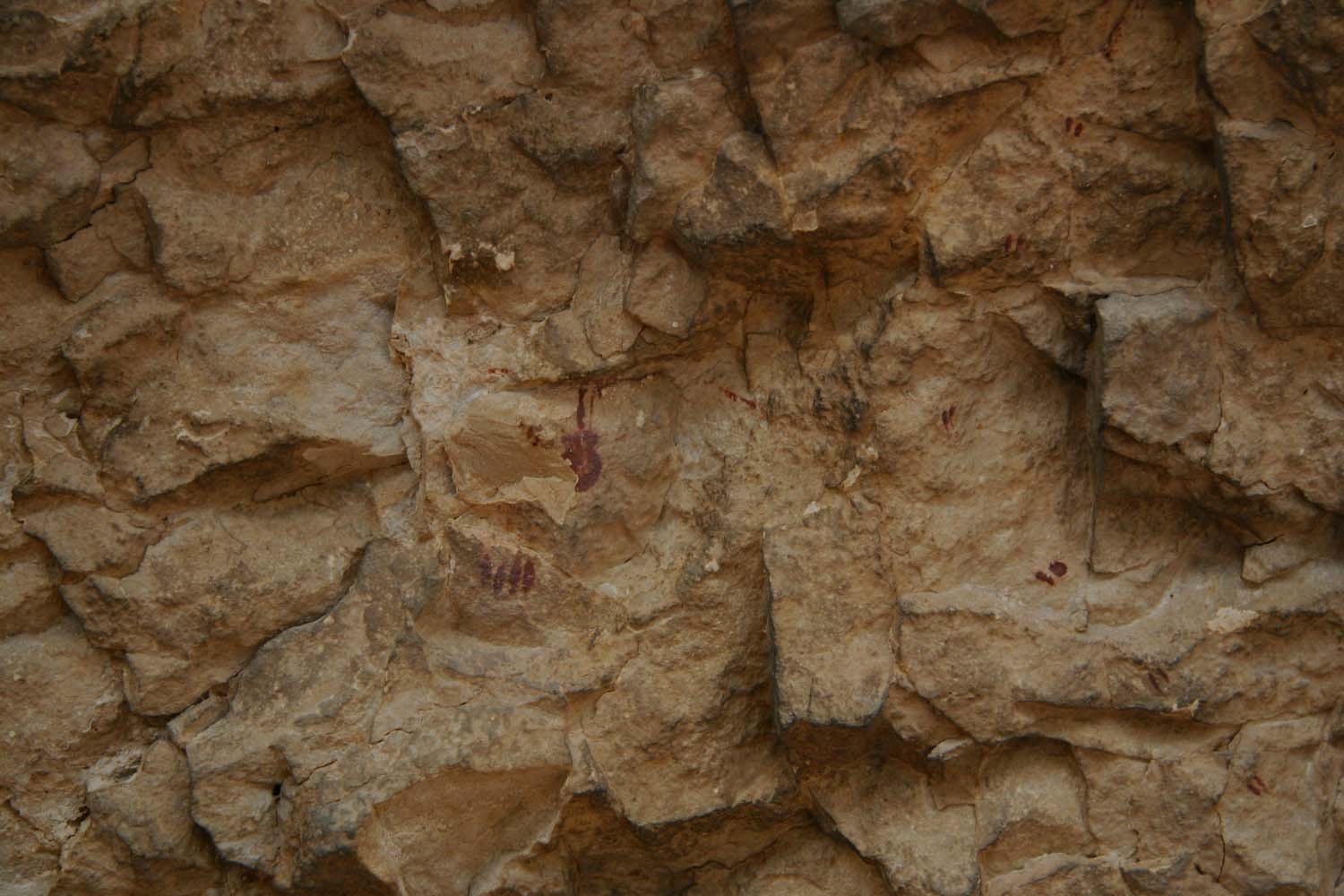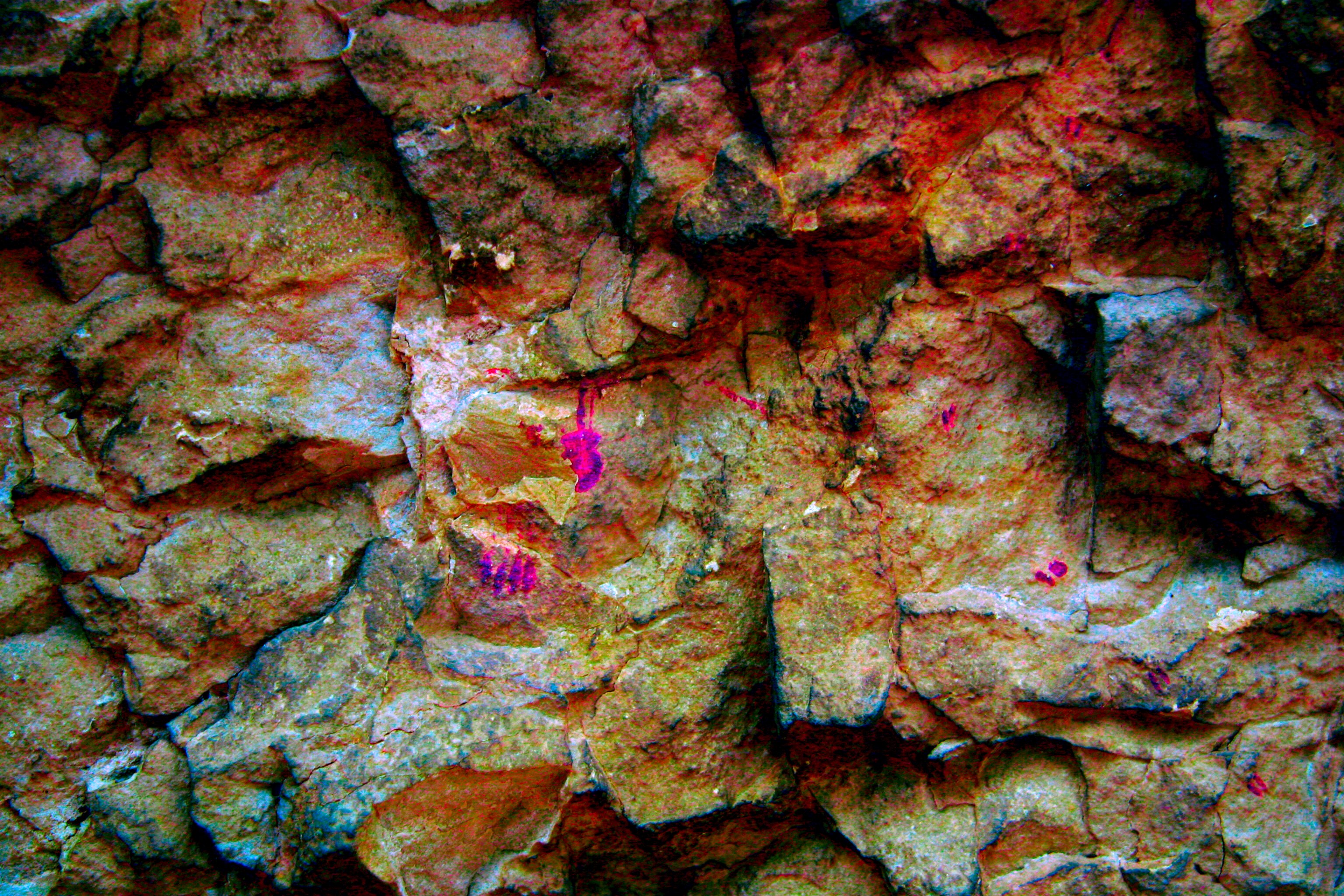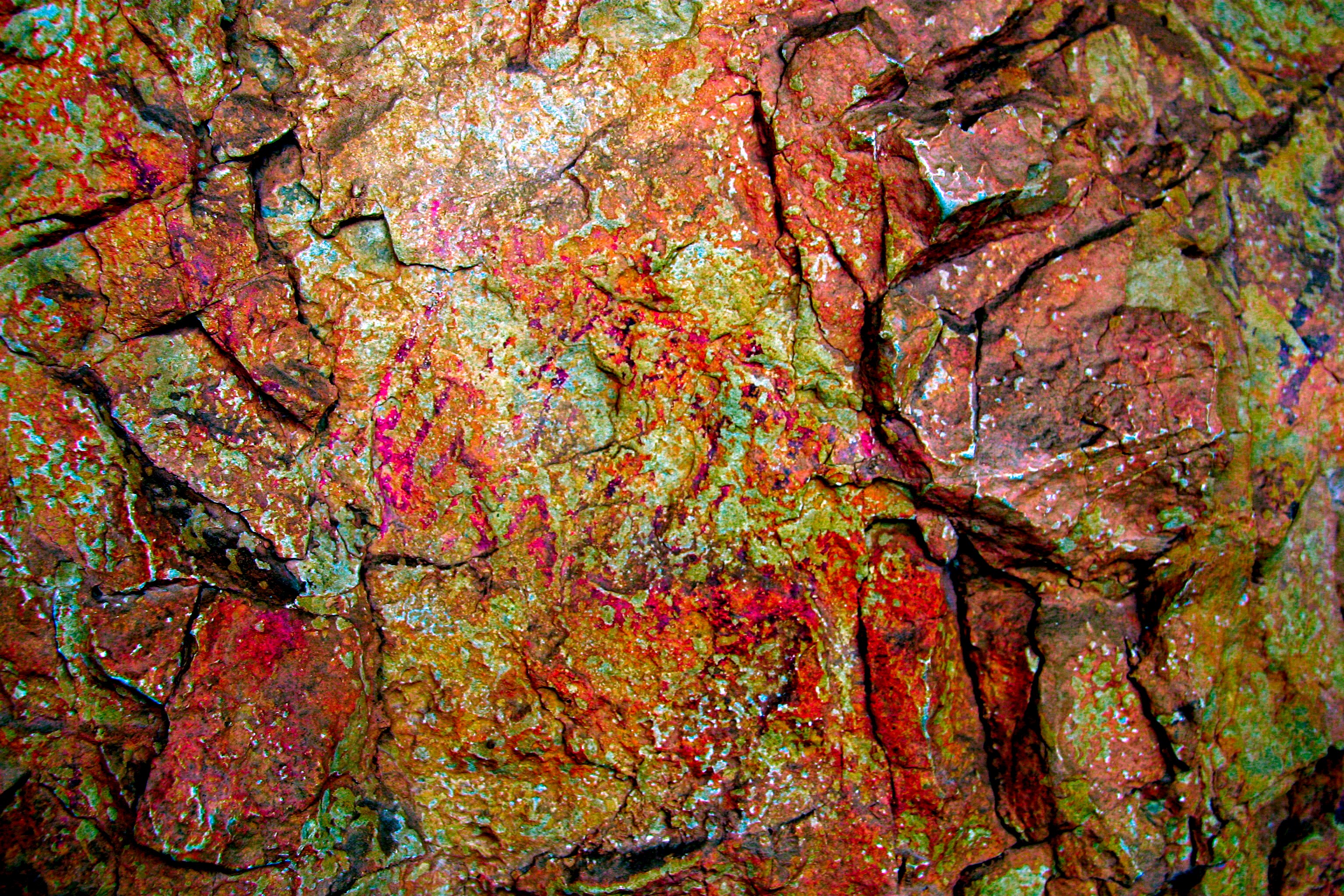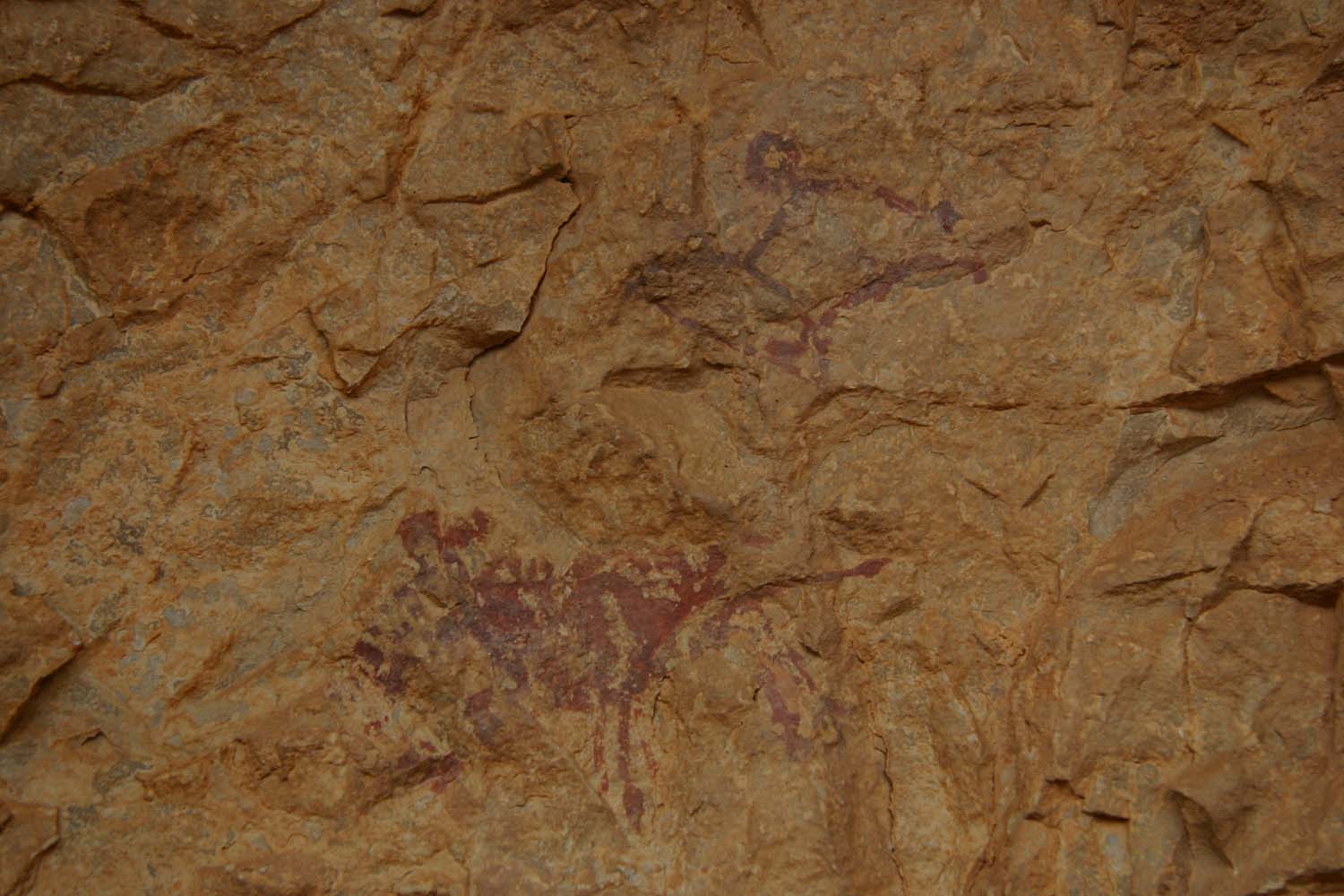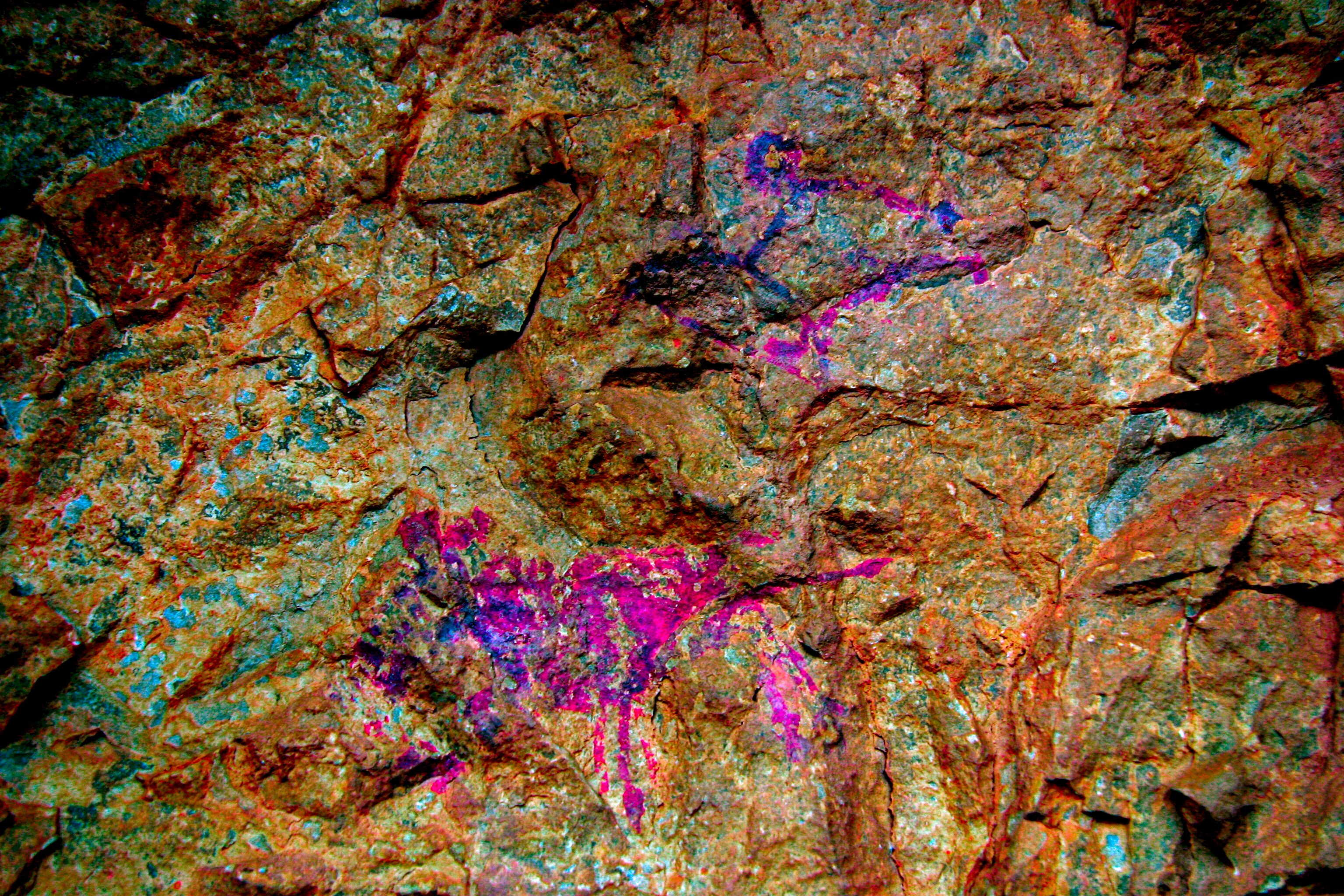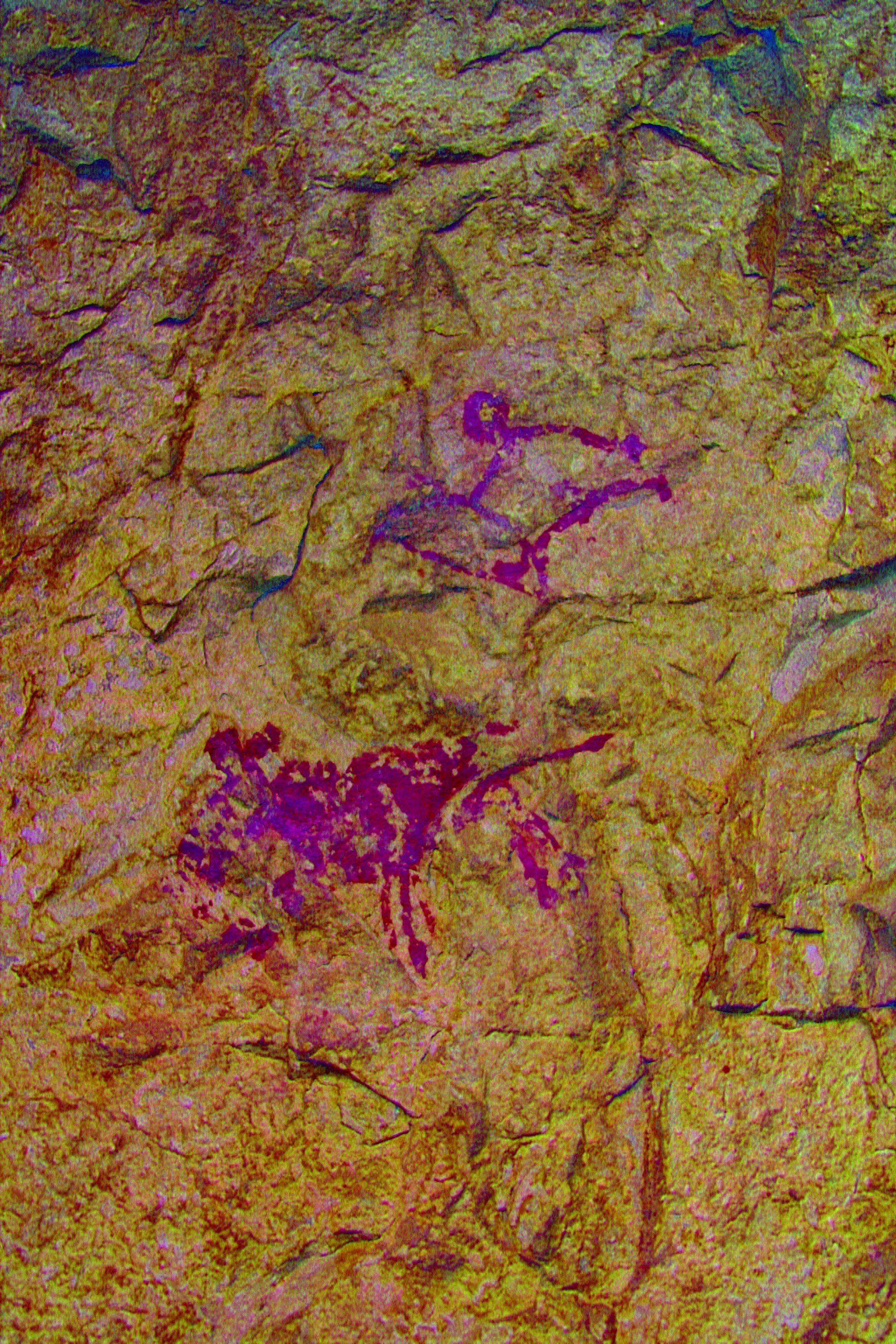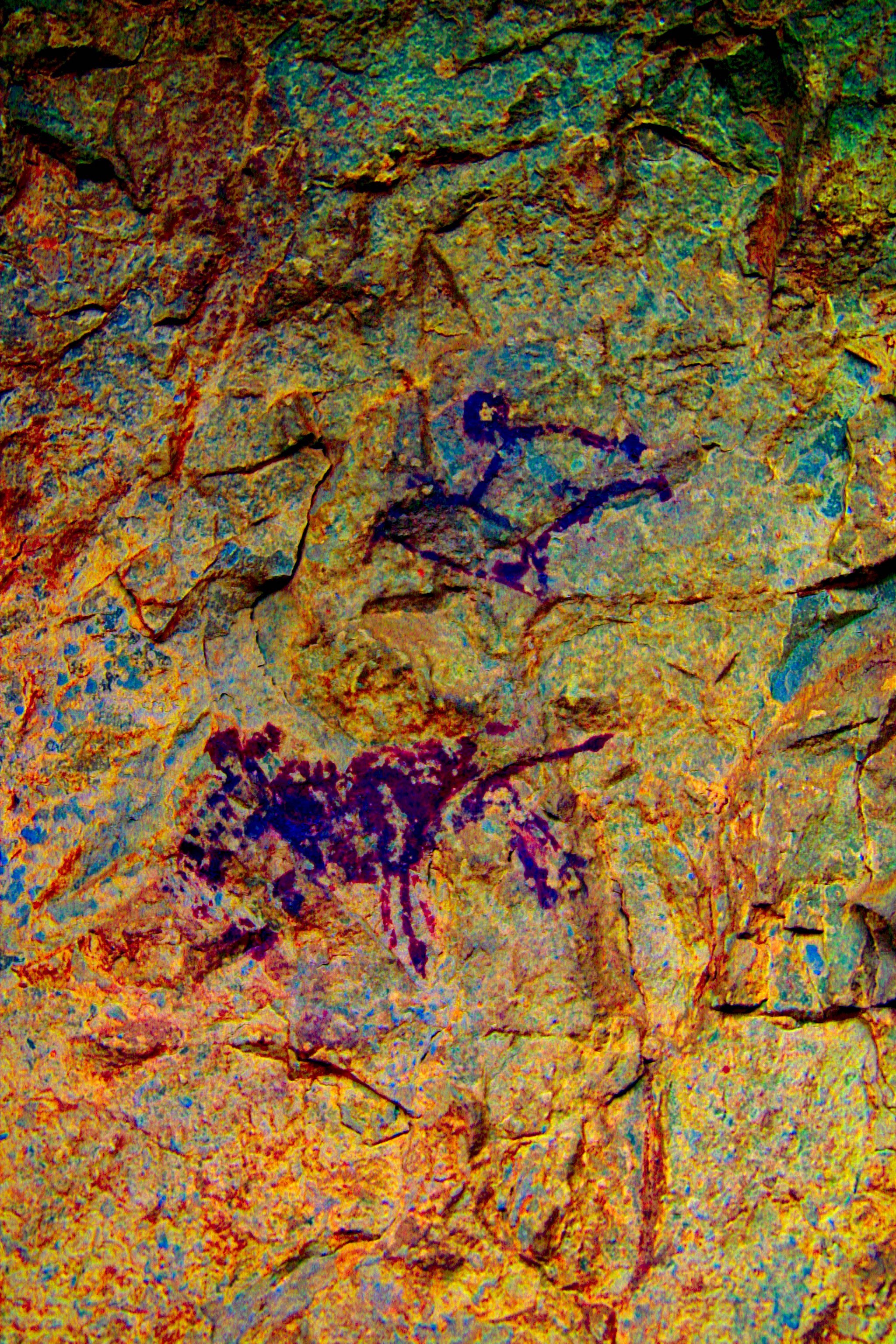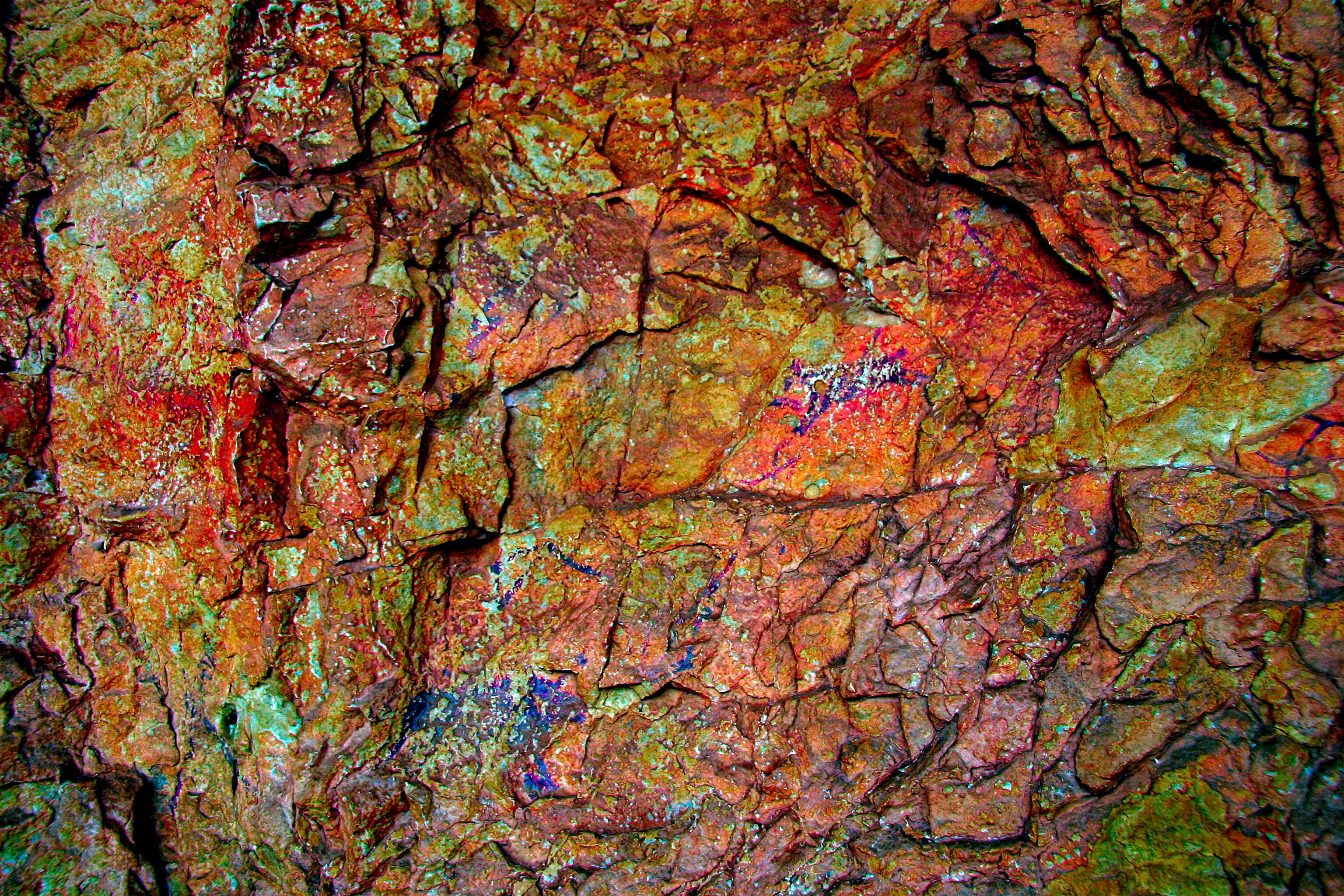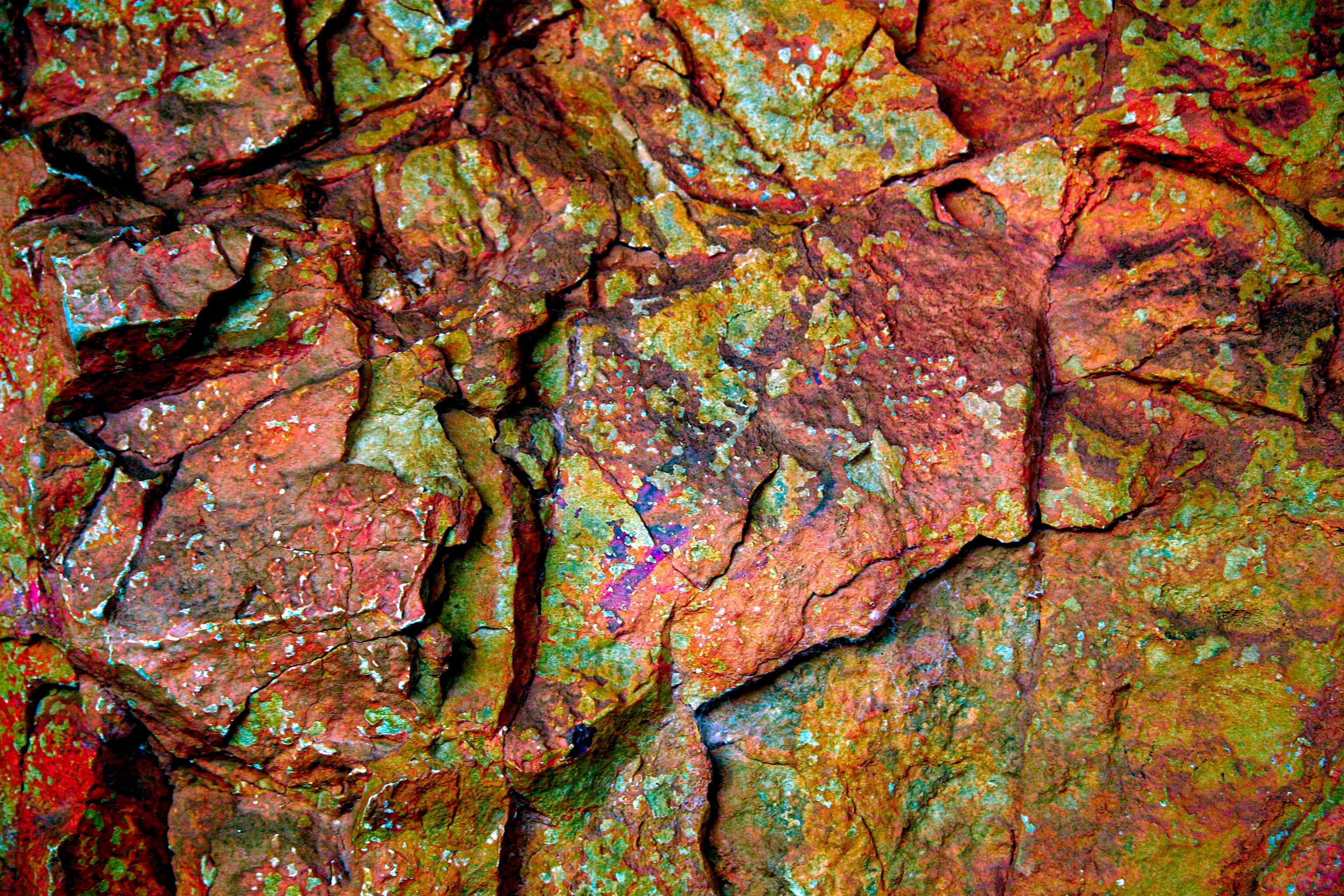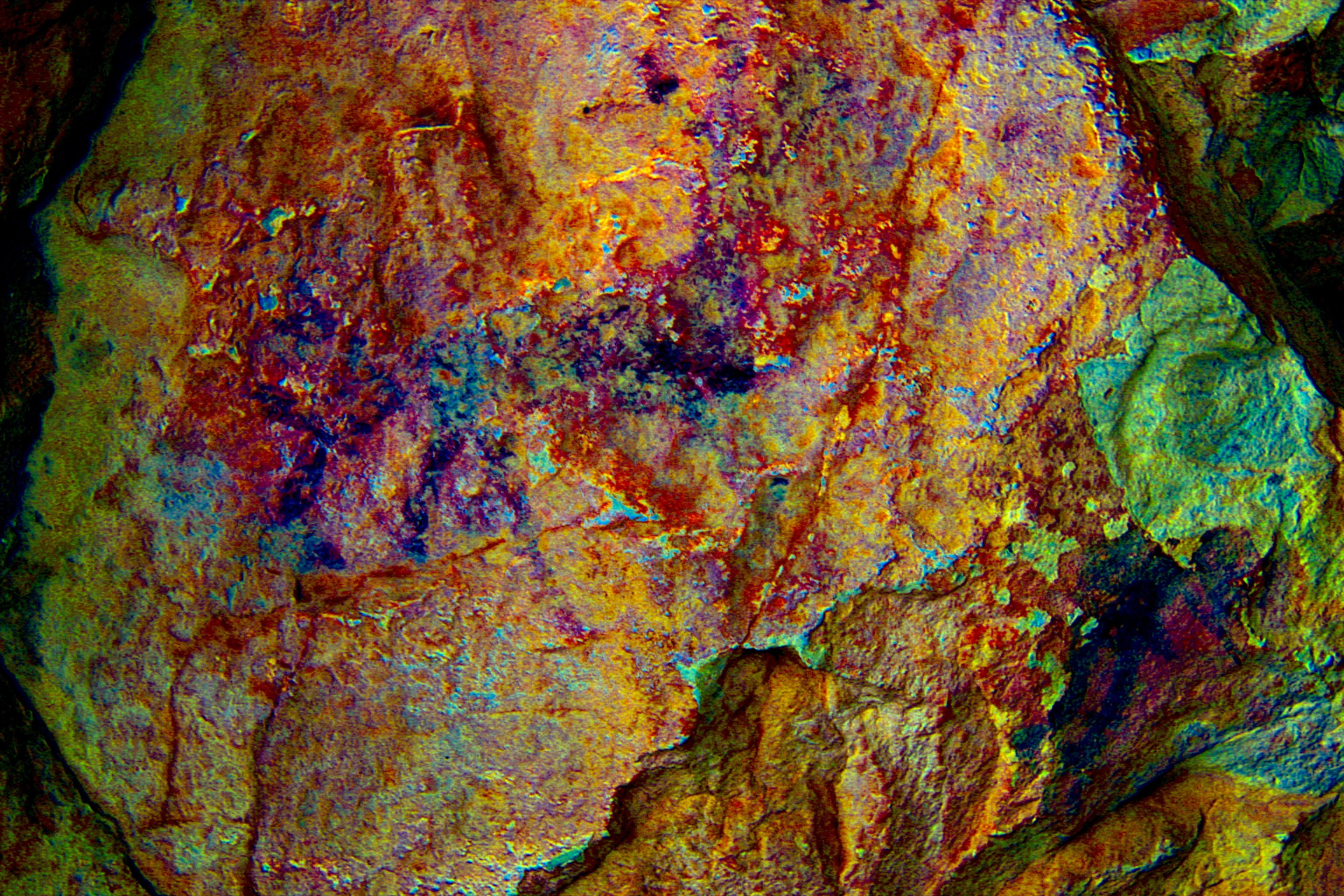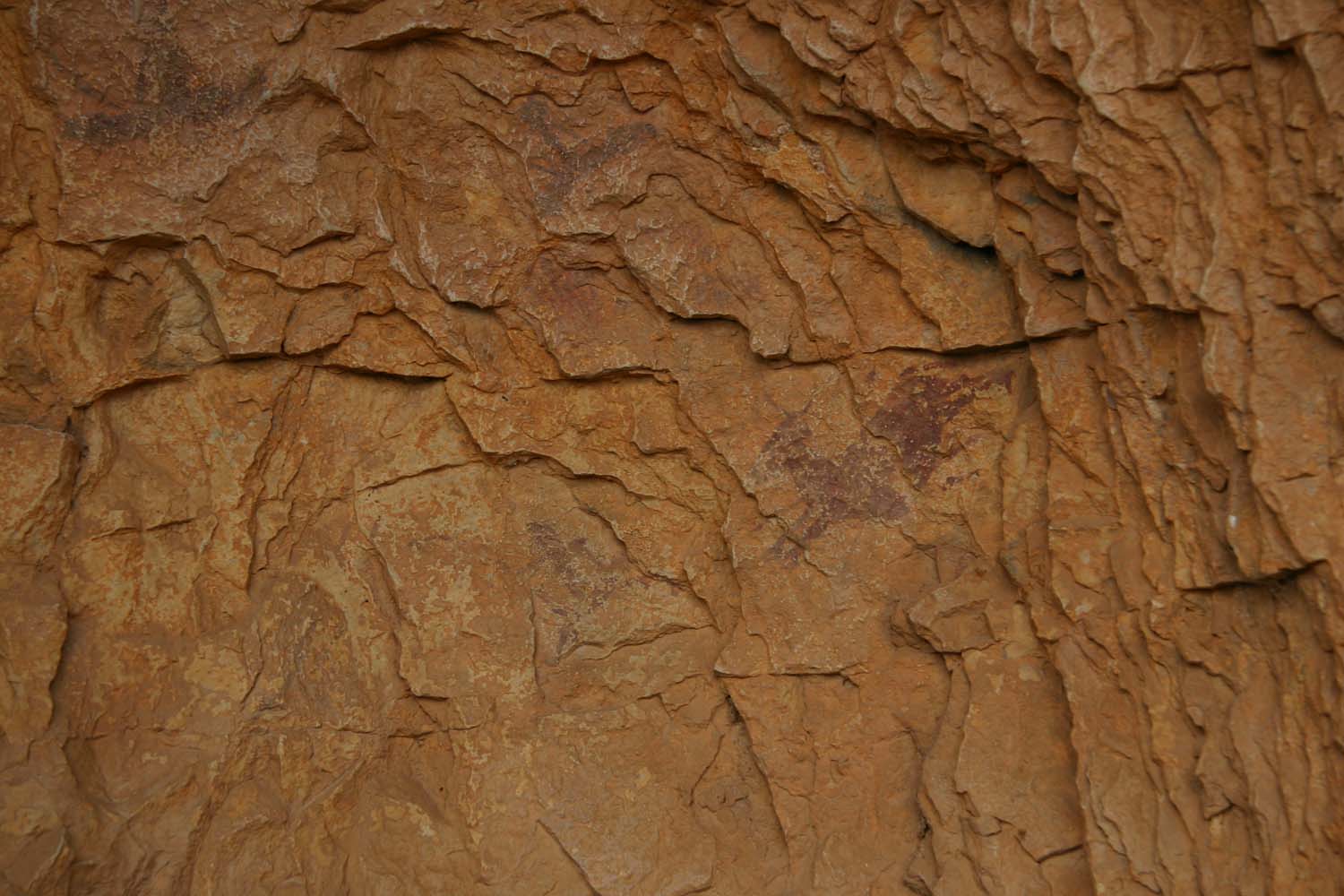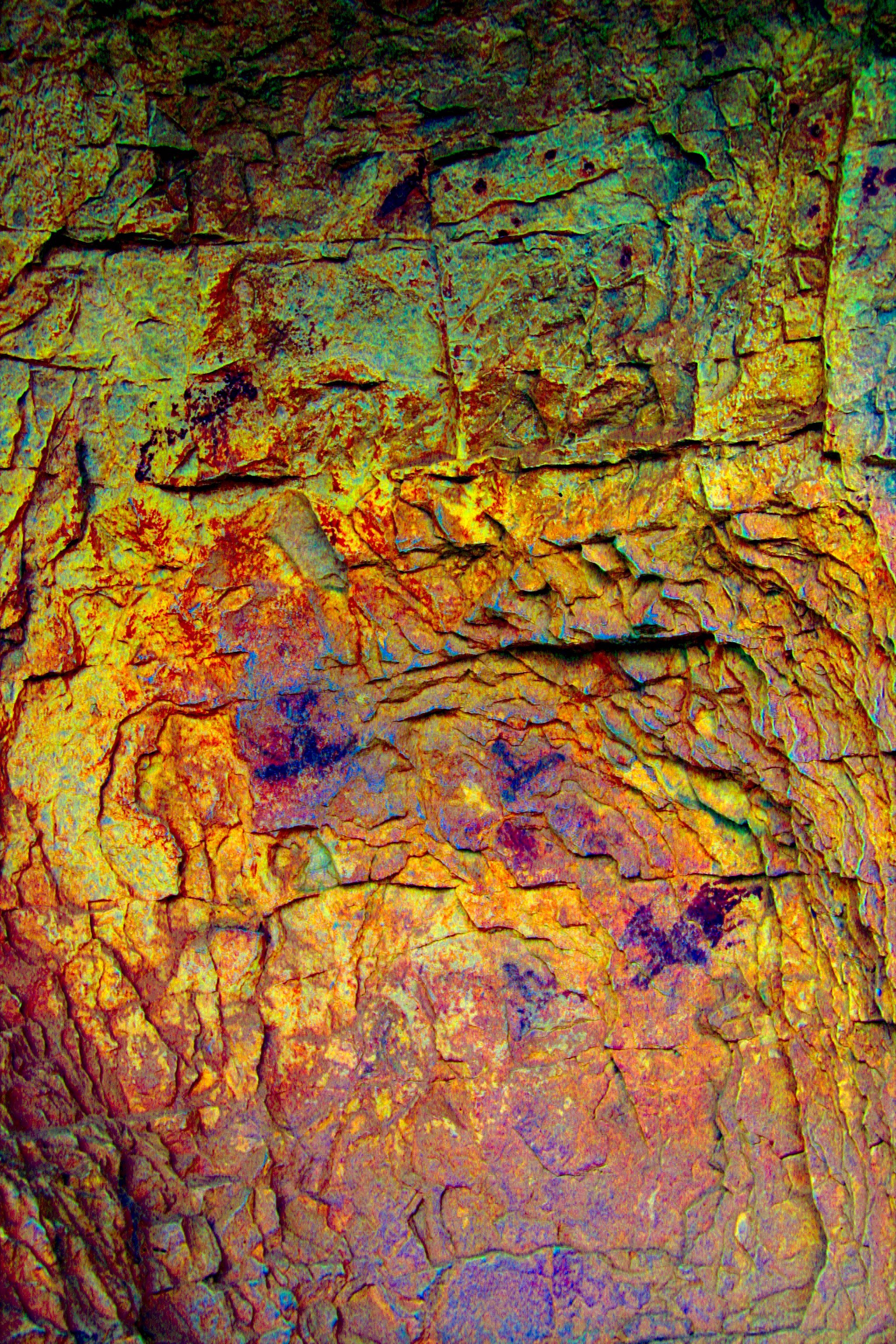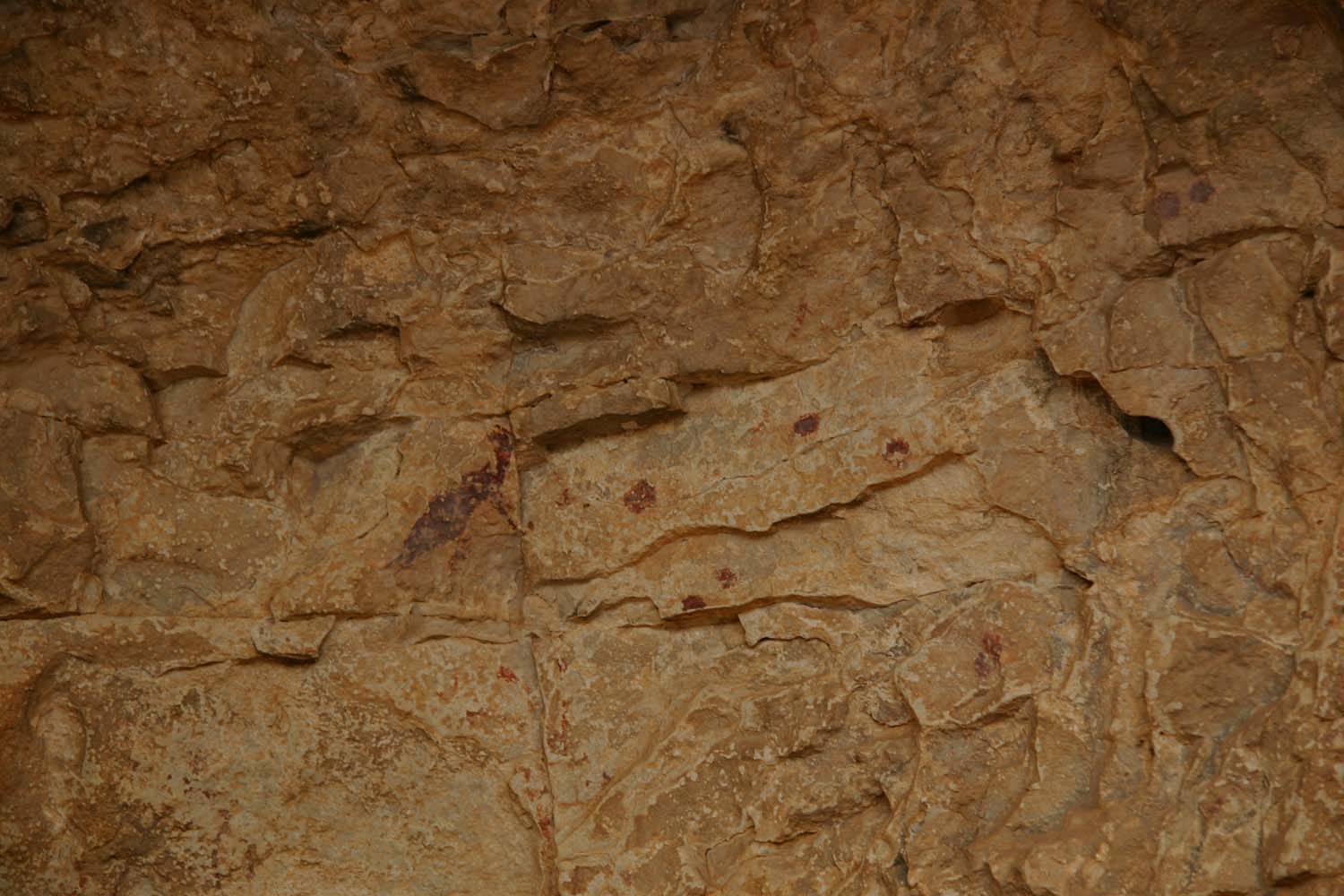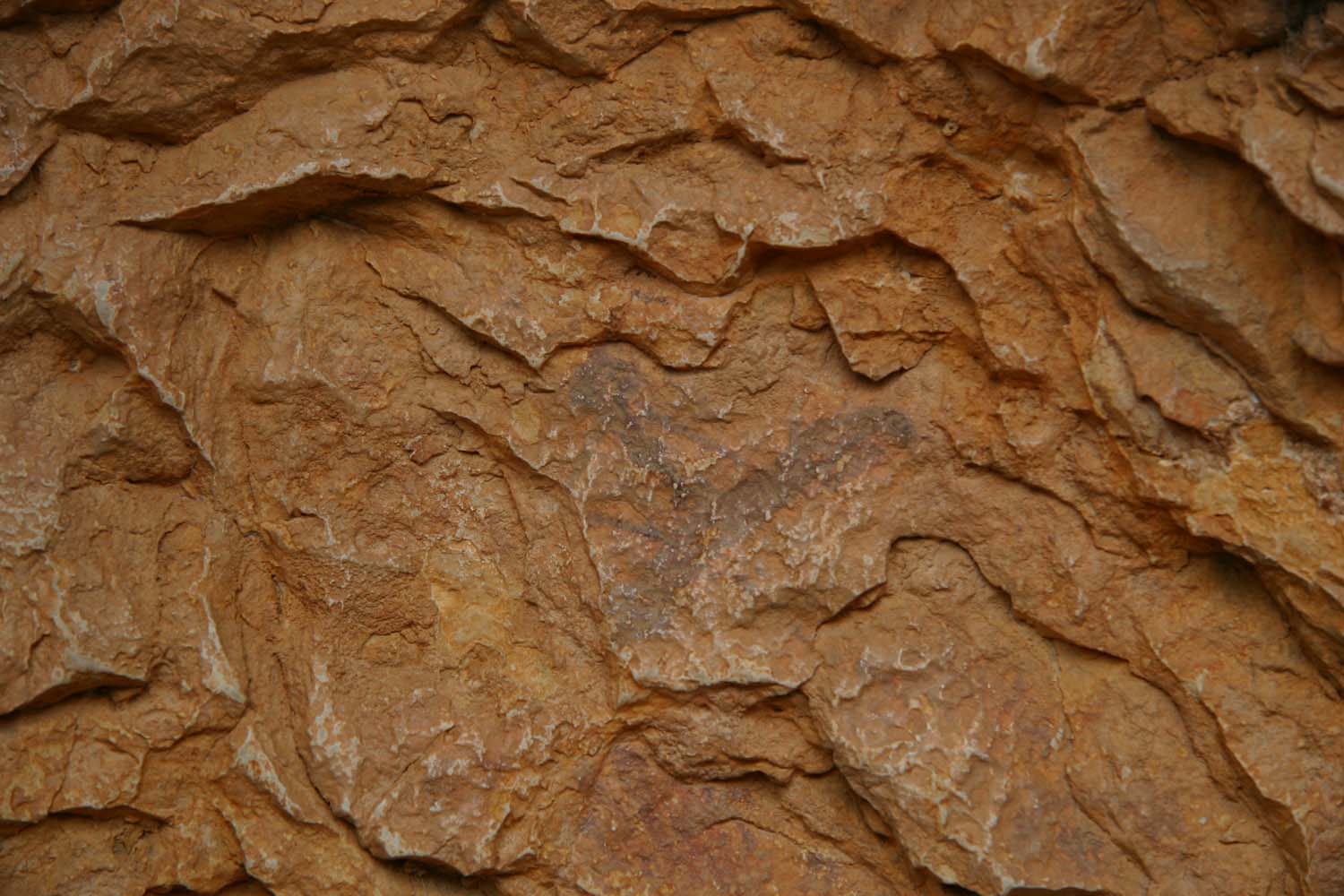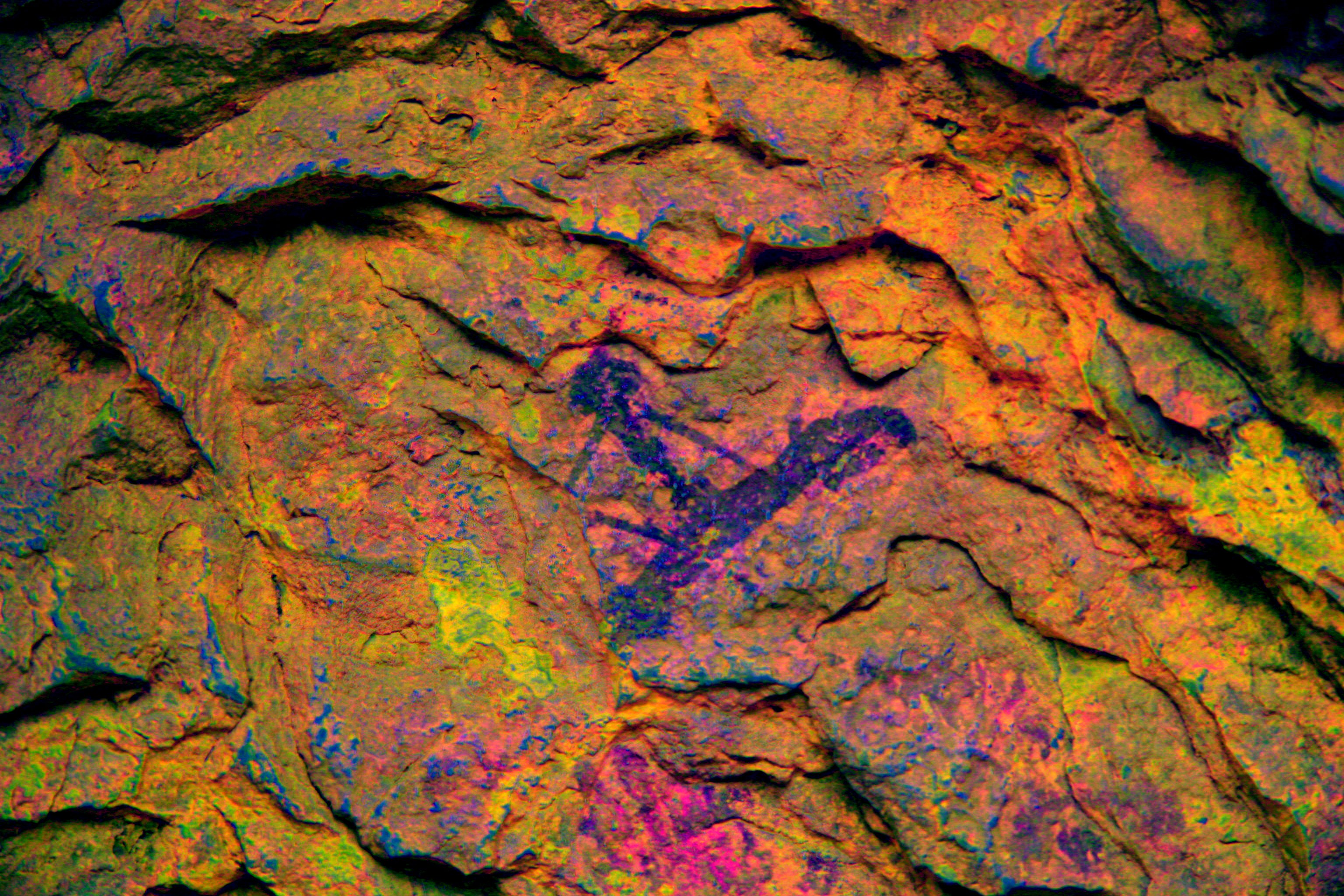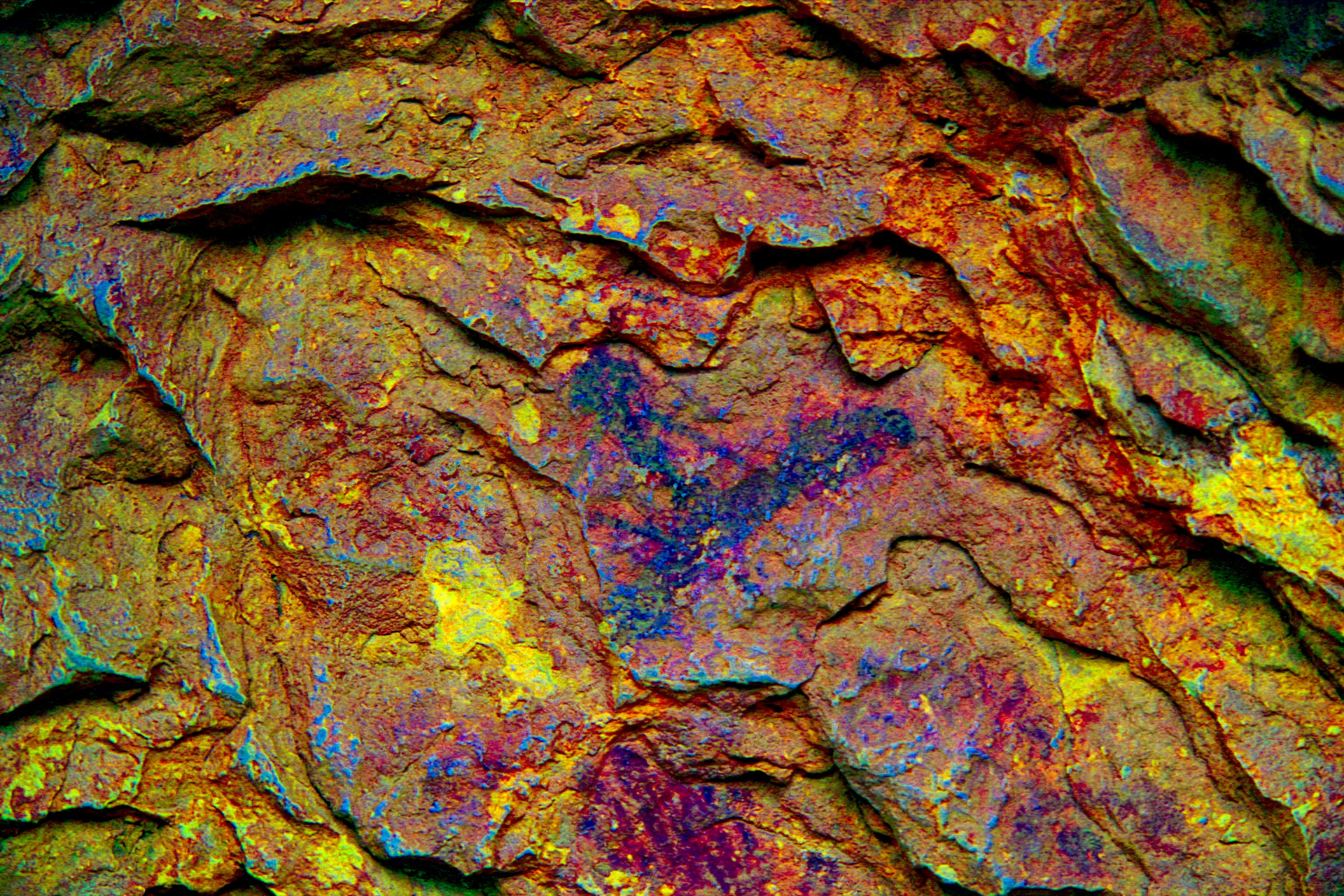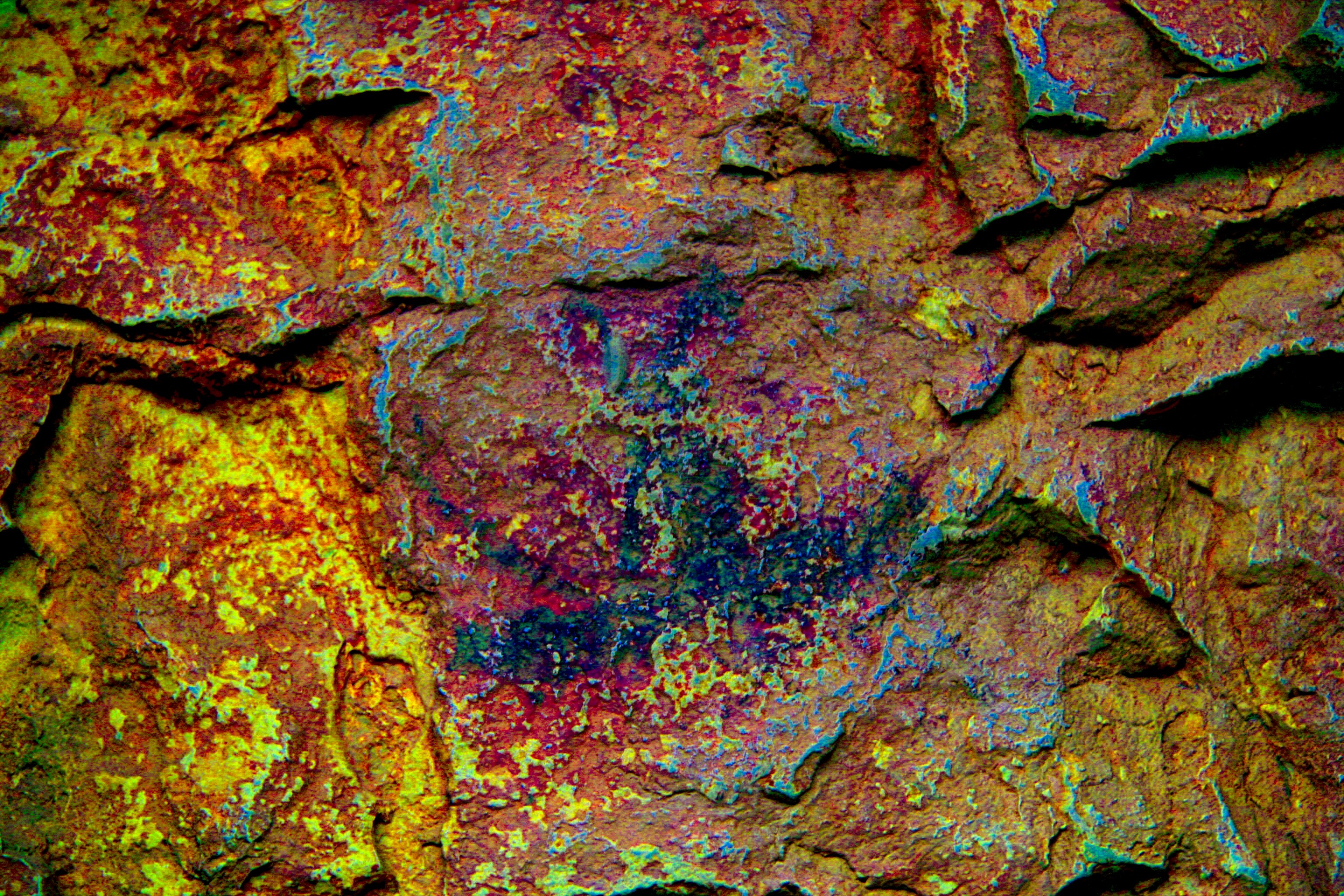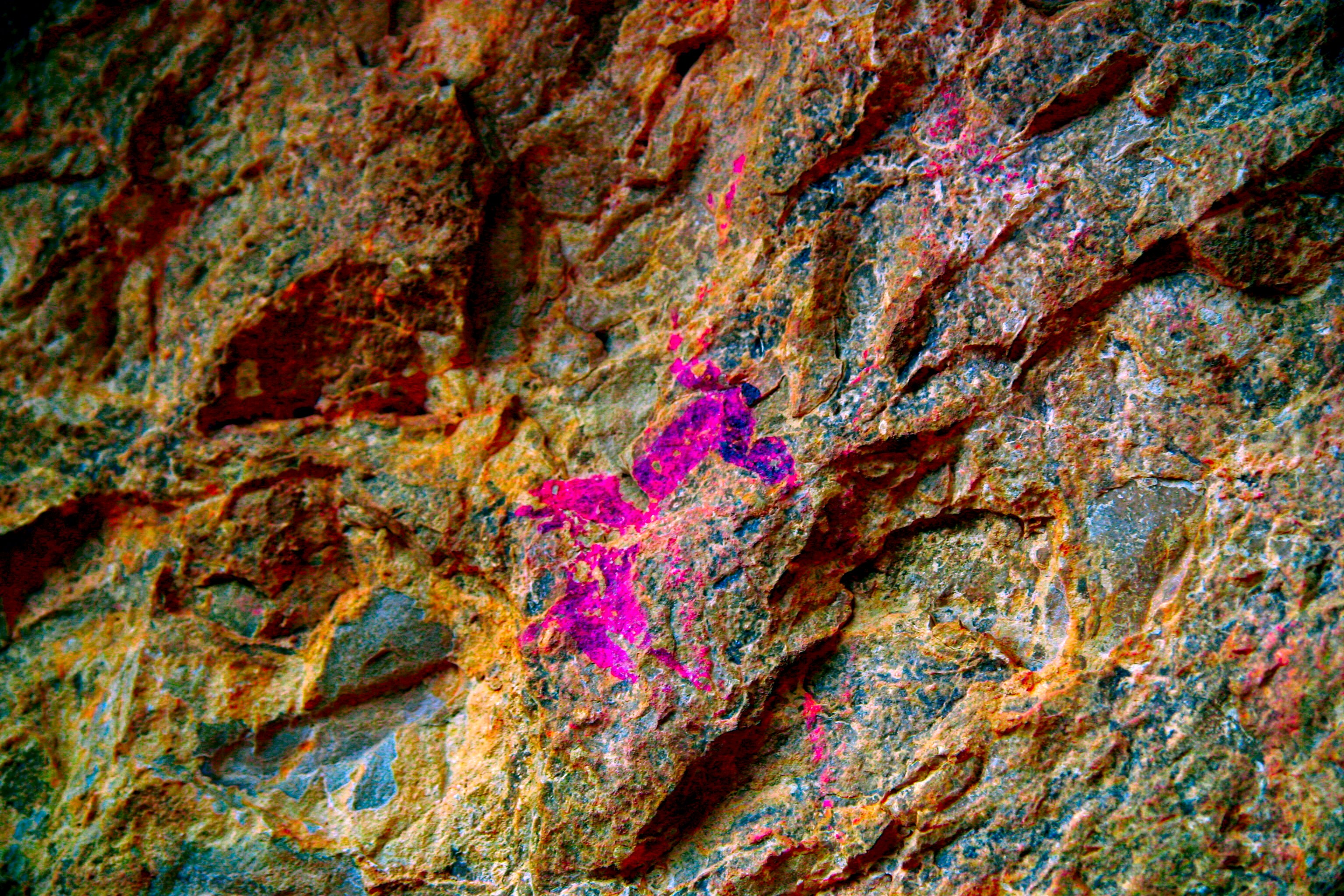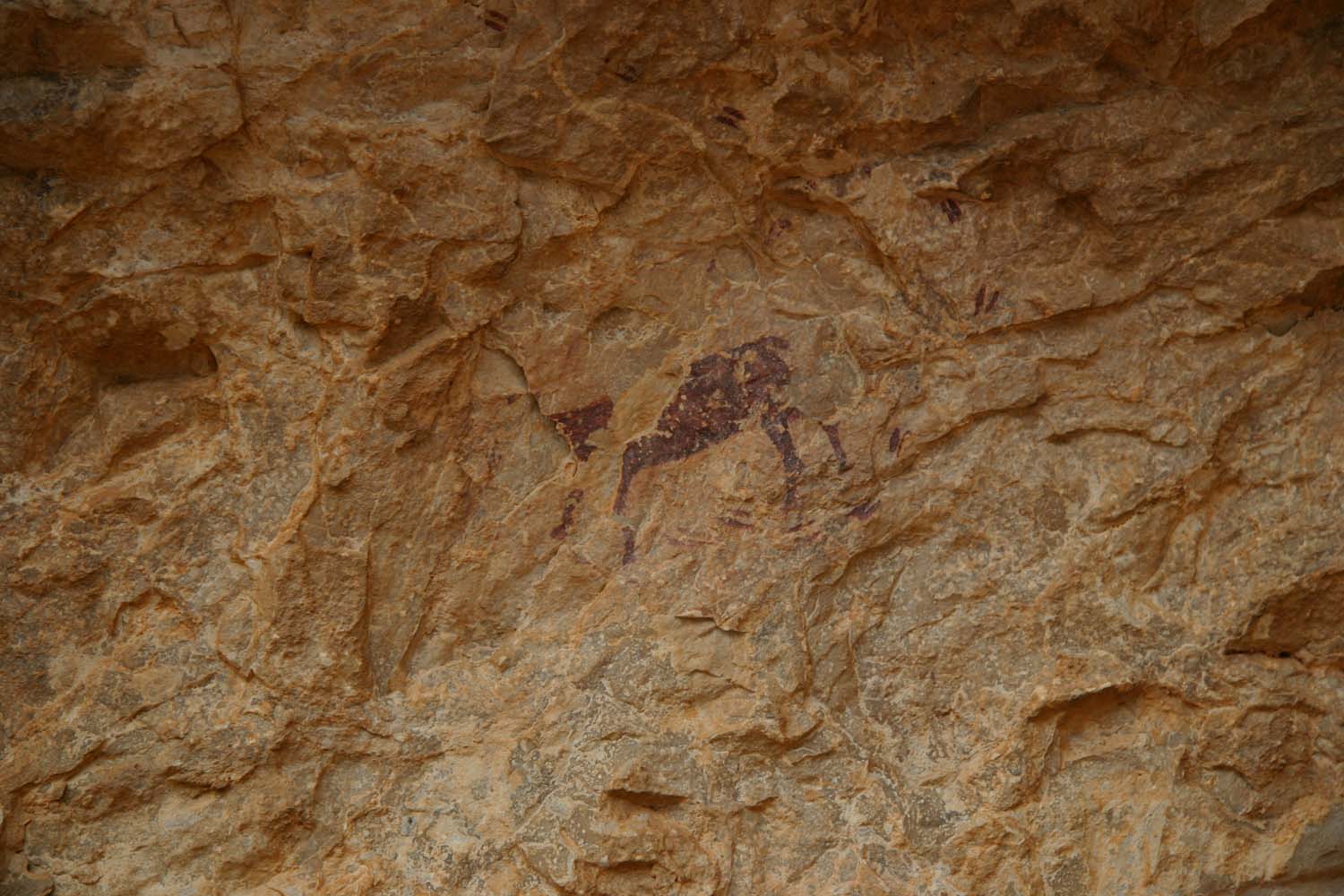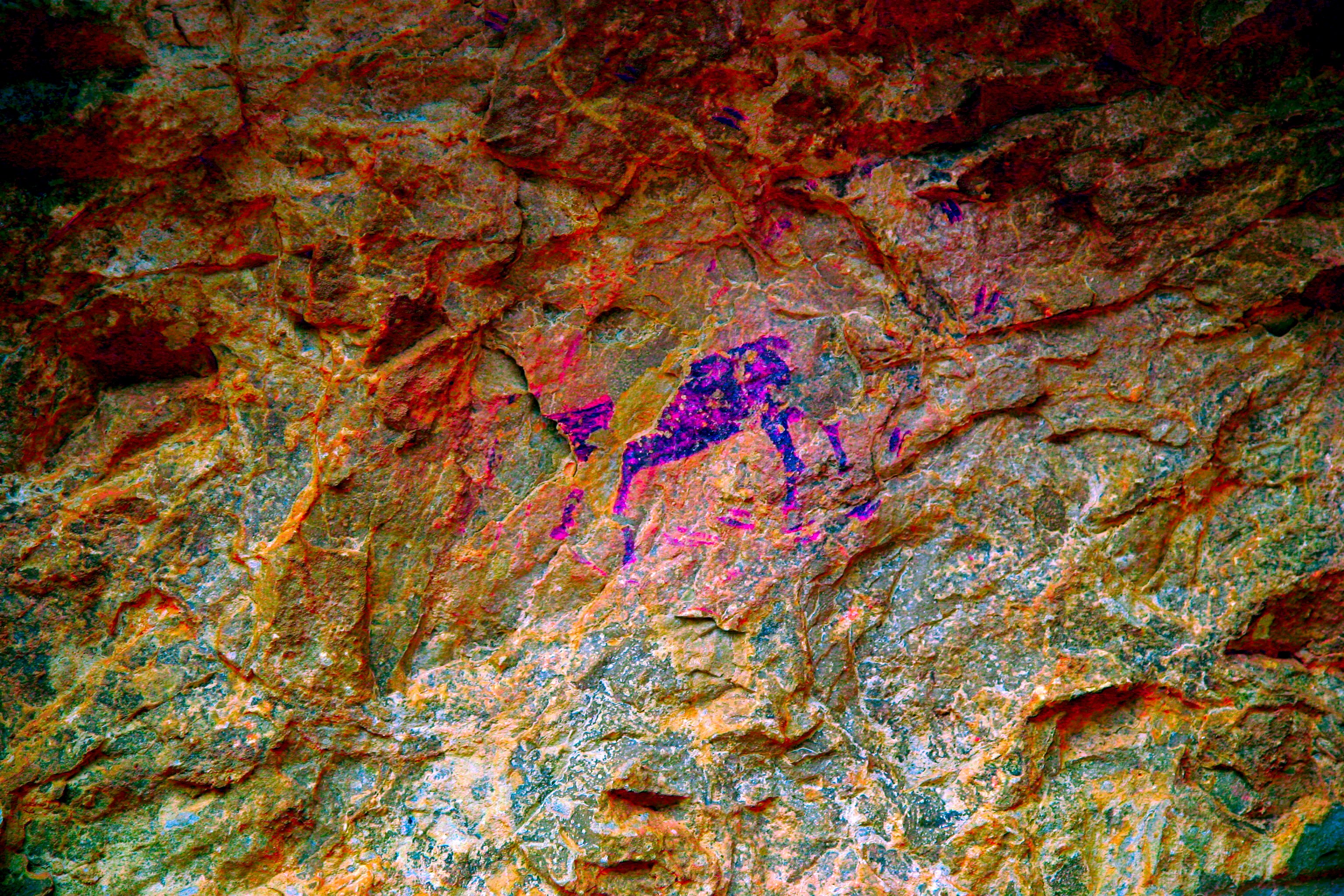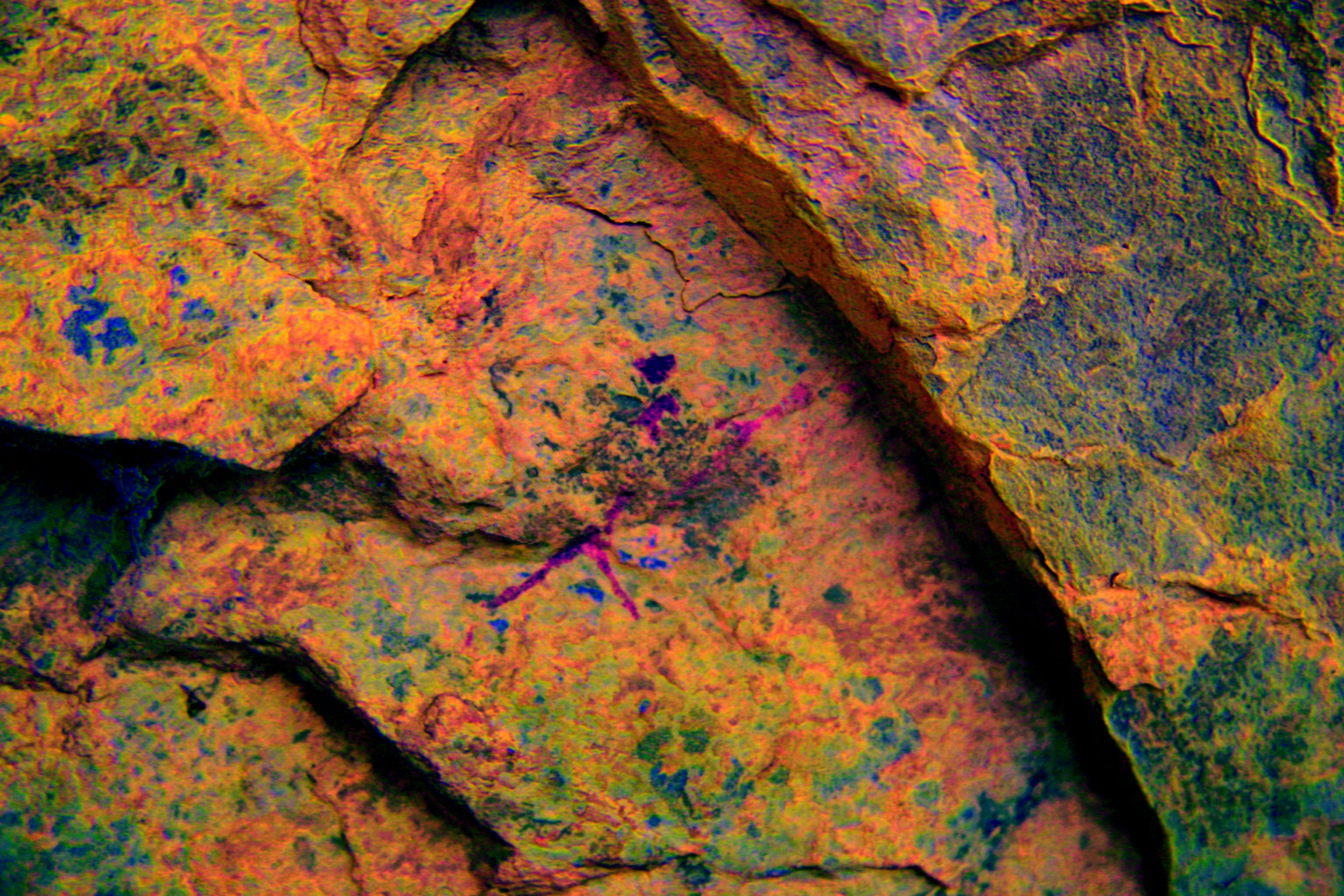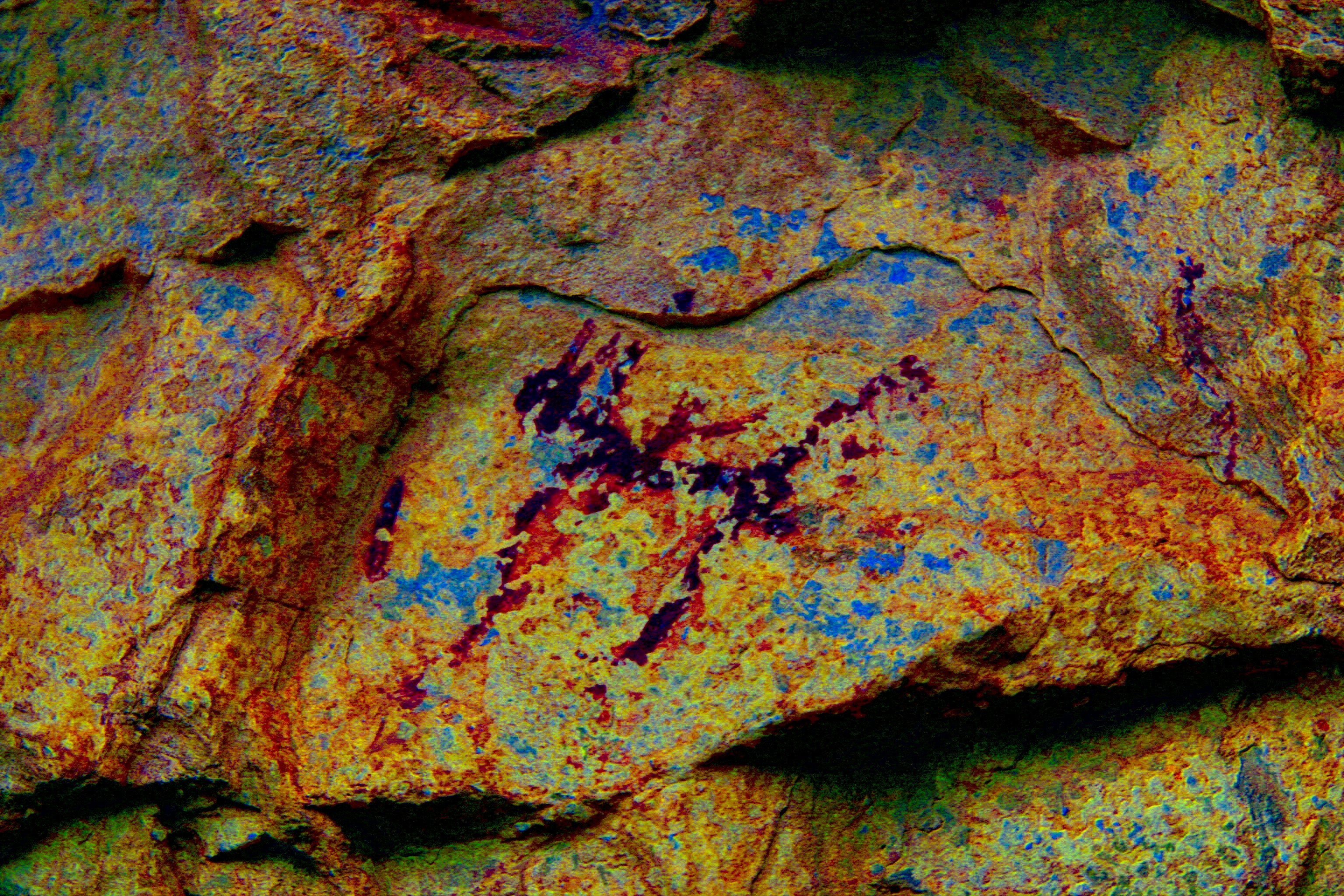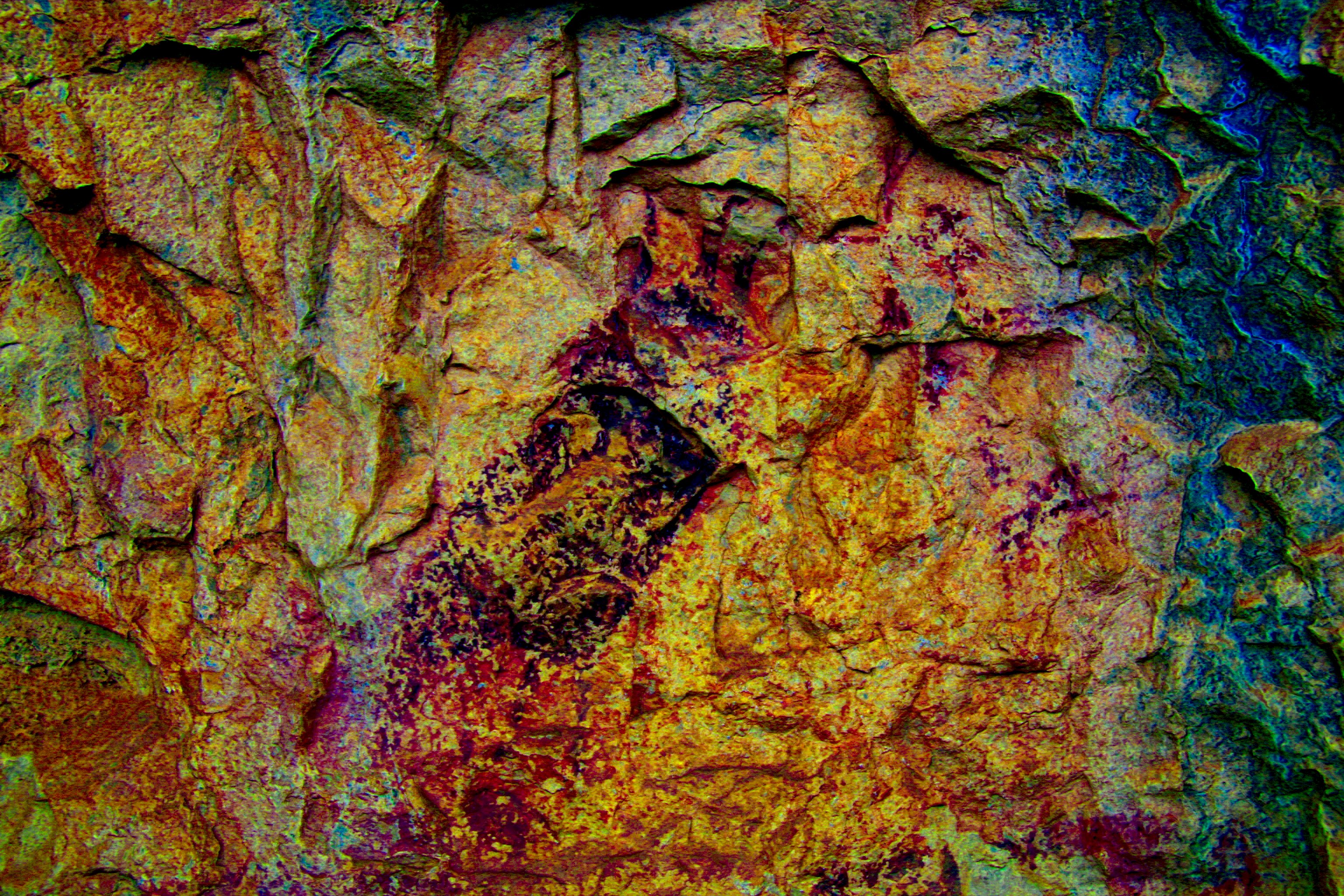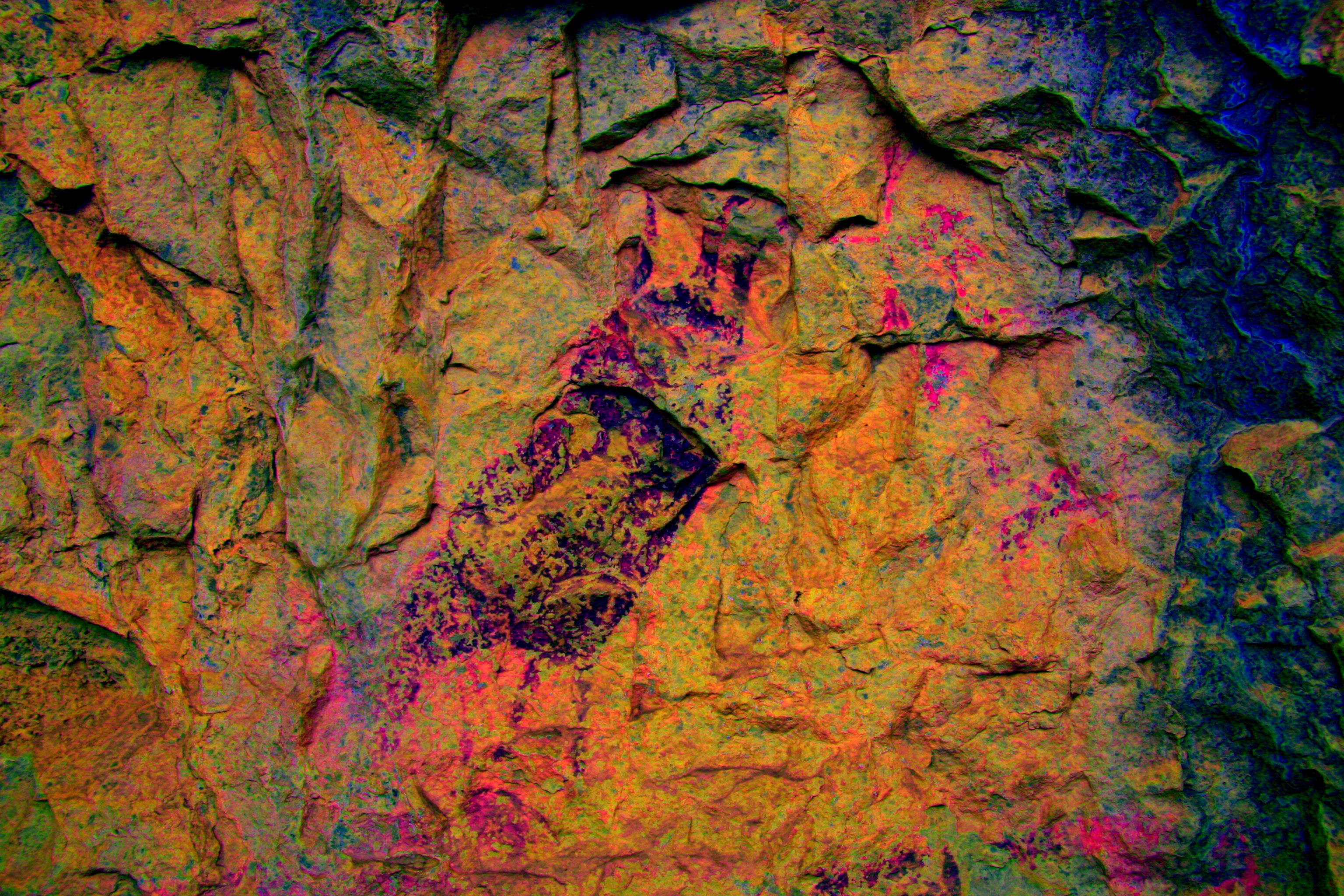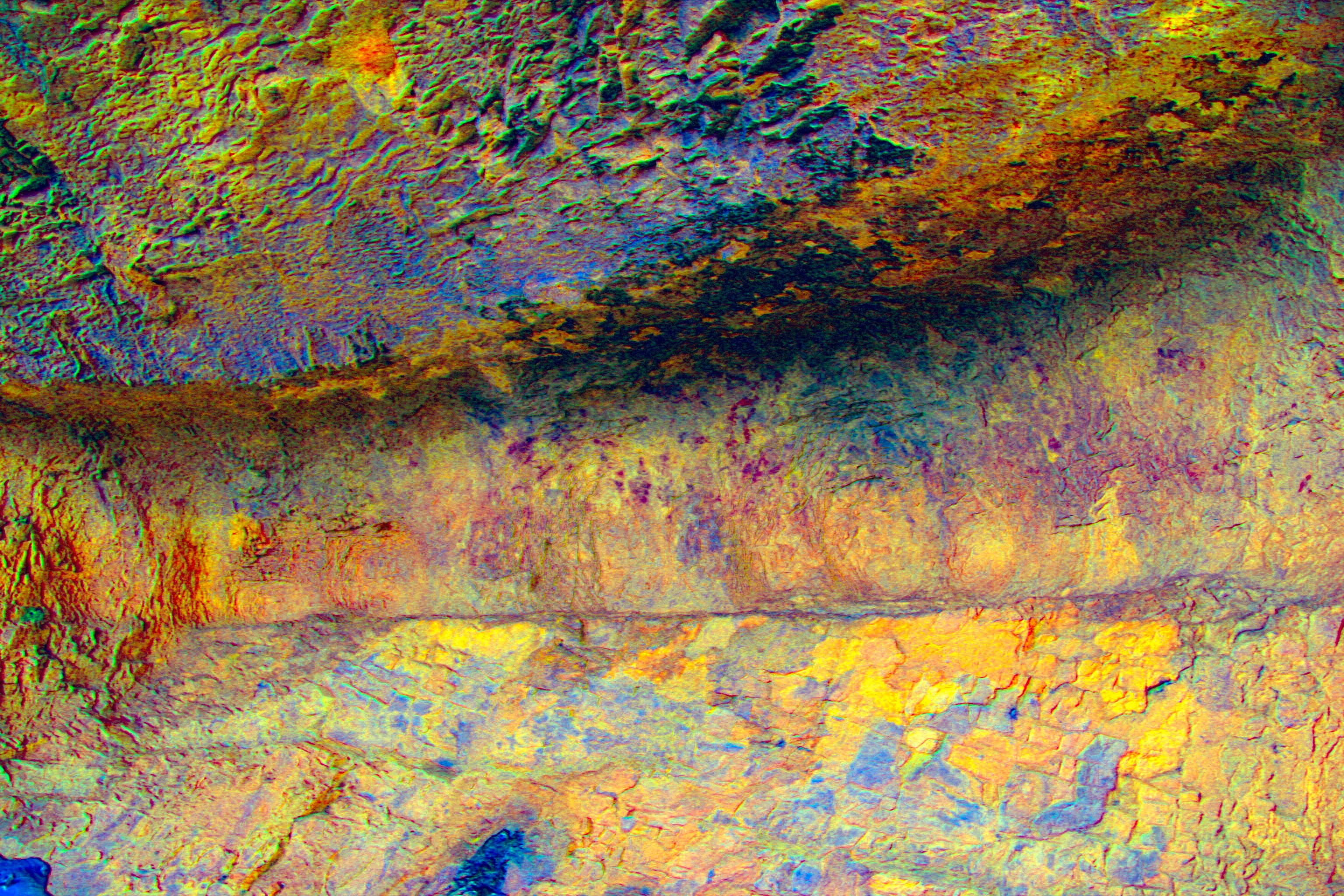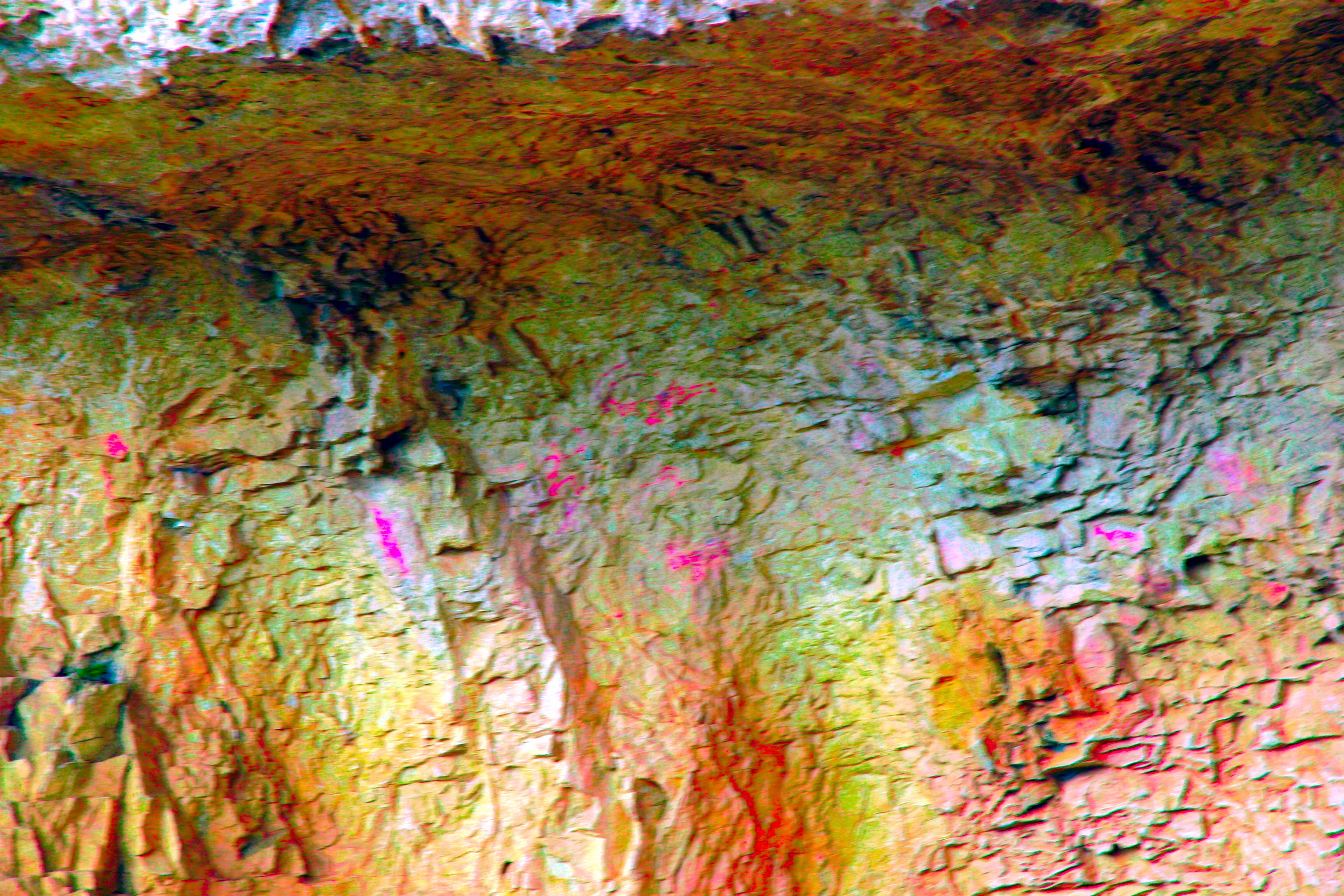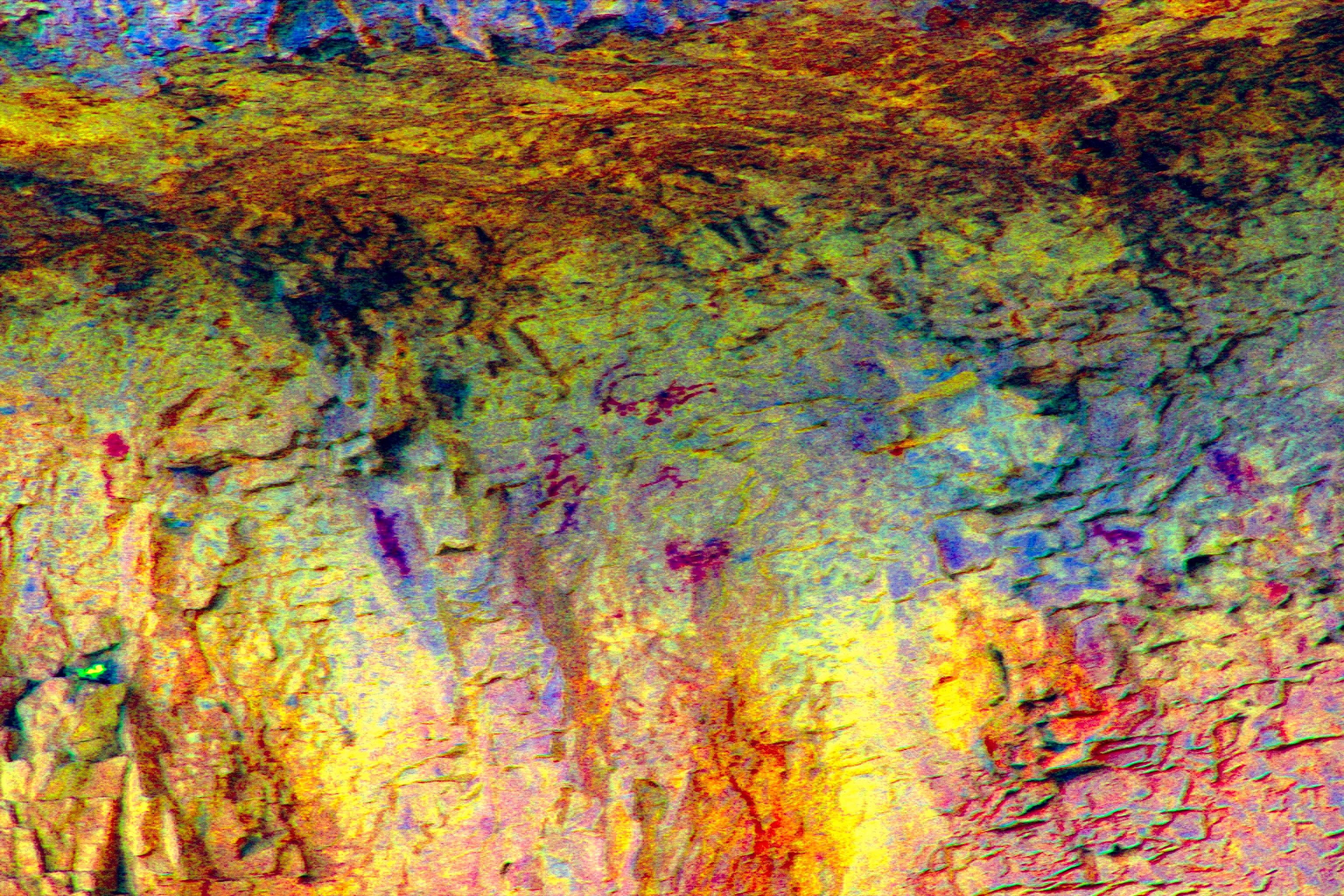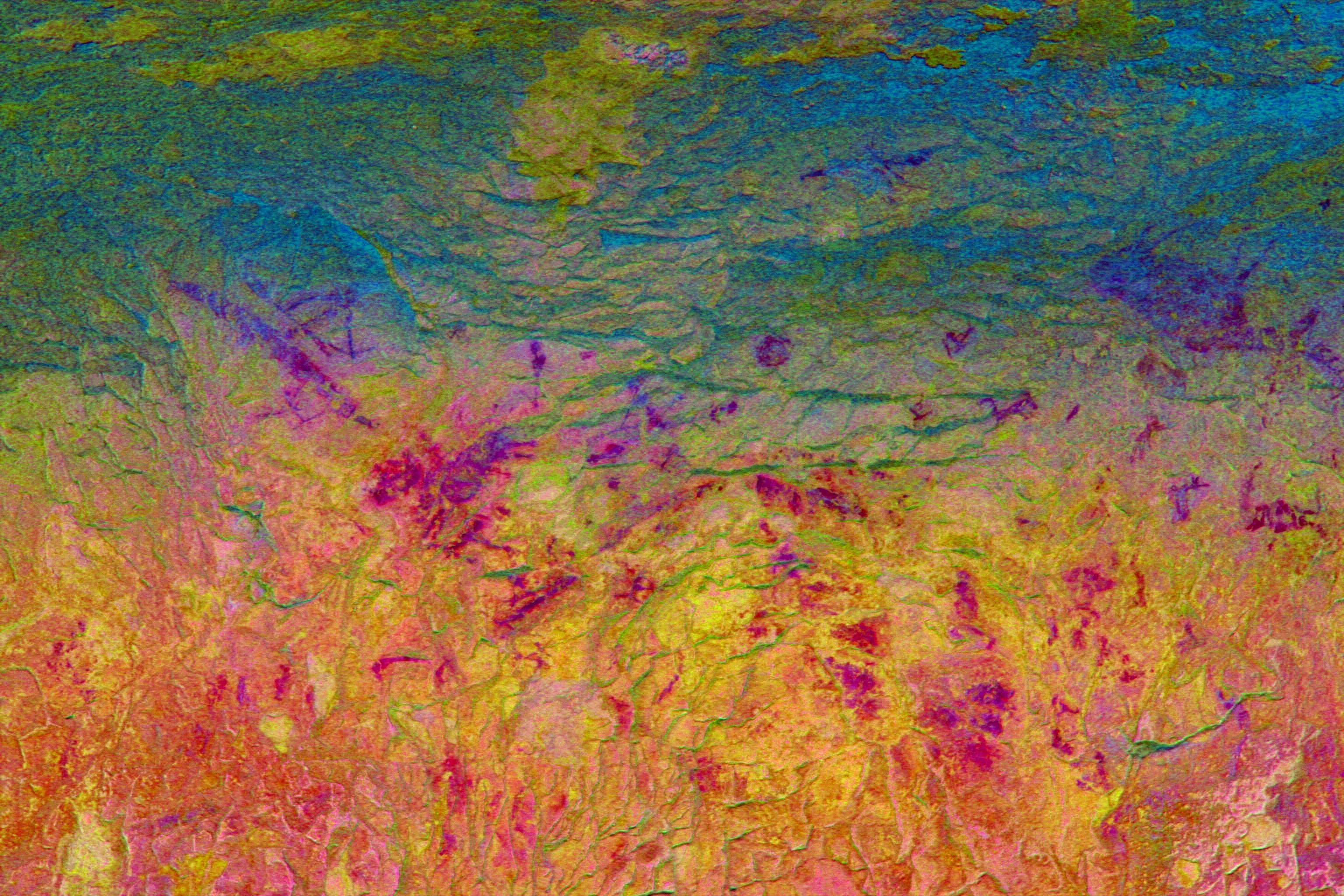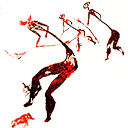Cova Remigia
Este conjunto rupestre, ubicado a unos 920 m de altura y orientado al SE, comprende una gran covacha de unos 20 m de longitud, 7 de altura y 9 de profundidad. Su espacio interior está dividido en 6 cavidades de distintas dimensiones (entre 2 y 5 m) en las que podemos admirar más de 750 unidades pictográficas, algunas de ellas de tamaño muy pequeño.
Su temática es muy diversa, aunque predominan las escenas de caza, en particular de cápridos, jabalíes, bóvidos y ciervos. Además, los pintores de estos frisos se esforzaron en dibujar numerosas huellas y rastros de animales heridos, así como animales aislados o en grupo, e incluso posibles colmenas con abejas; entre las figuras humanas pintaron arqueros, personajes singulares, hombres ejecutados por flechas disparadas por pelotones que agitan los arcos en alto, escenas de recolección, representaciones femeninas, una escena de acoplamiento y una ceremonia o rito de iniciación.
Si hacemos un repaso de sus composiciones, para resumir lo mas sobresaliente del conjunto, se encuentra en la primera cavidad la figura de un personaje central, de cuerpo delgado y gruesas pantorrillas, que corre en sentido descendente con diversas flechas clavadas en el cuerpo.
En el segundo abrigo destacan, de entre sus muchas pictografías, varios personajes estilizados y proporcionados, uno de ellos fálico, así como las miniaturas de una bolsa, una flecha y un arco aislados. Con frecuencia aparecen numerosas pisadas y rastros de animales. Son muy conocidas la cacería de una cabra con una flecha insertada en el bajo vientre y la escena de un toro herido que persigue a un arquero. En esta cavidad, H. Breuil creyó observar un alce, figura que actualmente se considera un cuadrúpedo particular, muy degradado, y con aspecto de bóvido, posiblemente repintado. Junto a estas figuras comparecen otros arqueros, uno de ellos con el típico atavío de dos apéndices en la cabeza, y en posición de carrera, con las piernas completamente abiertas.
En el tercer resguardo se pintaron diversas escenas de cacería de bóvido, de ciervo, y de un posible jabalí. Lo que parece una cierva va dejando tras de sí las huellas de sus pezuñas bisulcas. Los arqueros que persiguen y acosan a estas presas son proporcionados y de trazo lineal. Entre ellos se hallan un par de figuras humanas heridas con flechas y un pelotón de ejecución; una de las figuras ejecutadas presenta rasgos realistas y yace en el suelo, posiblemente muerta.
En la zona izquierda de la cuarta cavidad hallamos algunas de las composiciones más significativas del conjunto. La primera de ellas es la caza de un macho cabrío de gran cornamenta que se abalanza saltando sobre los arqueros que lo asaetean, en una escena de dinamismo intenso. Toda esta área tiene una temática centrada en las cabras, que aparecen en descanso, trepando, o descendiendo a la carrera, e incluso un personaje o ser particular, con cabeza y patas de cabra. La segunda escena destacada se sitúa en el centro y en ella aparecen dos personajes con co- las de animales, participando en un ritual. En un nivel inferior y a su derecha se distinguen varias colmenas con abejas, y en el lado opuesto varios grupos de figuras humanas.
En la quinta cavidad, la más espaciosa y compleja del conjunto, se agrupa el mayor número de pinturas. Son cuantiosas las escenas entrelazadas, en las que toman parte unas 350 figuras. Se trata de la zona central y más profunda de Cova Remígia, y en ella se pintaron las pictografías más grandes y emblemáticas: arqueros de cuerpo estilizado, rasgos realistas, y piernas gruesas con pantorrillas remarcadas, así como el ejemplar de ciervo de mayor tamaño y más realista conjunto, aparentemente despeñado o muerto. Además, sobresalen las cacerías de jabalíes, animales despeñados, grupos faunísticos y, por último, los pelotones de ejecución con personajes sacrificados, todos ellos realizados con trazo lineal y gran simplicidad.
El friso finaliza con una pared, conocida como sexta cavidad. En este espacio se conservan pocas representaciones, destacando uno de los bóvidos de mayor tamaño, que parece andar en sentido descendente, algunos arqueros, y una posible figura femenina sentada en actitud estática. Entre estas pinturas se sitúa una de las más pequeñas de todo el conjunto, de apenas unos pocos centímetros.
VALENCIÀ.
Este conjunt rupestre, ubicat a uns 920 m d’altura i orientat al SE, comprén una gran coveta d’uns 20 m de longitud, 7 d’altura i 9 de profunditat. El seu espai interior està dividit en 6 cavitats de vàries dimensions (entre 2 i 5 m) en les que podem admirar més de 750 unitats pictogràfiques, algunes d’elles de mida molt xicoteta.
La seua temàtica és molt diversa, encara que predominen les escenes de caça, en particular de càprids, porcs senglars, bòvids i cervos. A més, els pintors d’estos frisos es van esforçar a dibuixar nombroses empremtes i rastres d’animals ferits, així com animals aïllats o en grup, i inclús possibles ruscos amb abelles; entre les figures humanes van pintar arquers, personatges singulars, hòmens executats per fletxes disparades per grups que agiten els arcs enlaire, escenes de recol·lecció, representacions femenines, una escena d’acoplament i una cerimònia o ritu d’iniciació.
Fent un repàs de les seues composicions, per a resumir el mes excel·lent del conjunt, es troba en la primera cavitat la figura d’un personatge central, de cos prim i grossos panxells, que corre en sentit descendent amb diverses fletxes clavades en el cos.
En el segon abric destaquen, d’entre les seues moltes pictografies, diversos personatges estilitzats i proporcionats, un d’ells fàl·lic, així com les miniatures d’una bossa, una fletxa i un arc aïllats. Amb frequència apareixen nombroses xafades i rastres d’animals. Són molt conegudes la cacera d’una cabra amb una fletxa clavada en el baix ventre i l’escena d’un bou ferit que perseguix un arquer. En esta cavitat, H. Breuil va creure observar un ant, figura que actualment es considera un quadrúpede particular, molt degradat, i amb aspecte de bòvid, possiblement repintat. Junt amb estes figures compareixen altres arquers, un d’ells amb el típic abillament de dos apèndixs en el cap, i en posició de carrera, amb les cames completament obertes.
En el tercer resguard es van pintar diverses escenes de cacera de bòvid, de cervo, i d’un possible porc senglar. El que sembla un acerva va deixant detràs de si les empremtes de les seves peüngles bisulcades. Els arquers que perseguixen i acacen a estes preses són proporcionats i de traç lineal. Entre ells es troben un parell de figures humanes ferides amb fletxes i un gran grup d’execució; una de les figures executades presenta trets realistes i jau en el sòl, possiblement morta.
En la zona esquerra de la quarta cavitat trobem algunes de les composicions més significatives del conjunt. La primera d’elles és la caça d’un mascle de cabra de gran cornamenta que s’abalança saltant sobre els arquers que l’assageten, en una escena de dinamisme intens. Tota esta àrea té una temàtica centrada en les cabres, que apareixen en descans, enfilant-se, o descendint a la carrera, i inclús un personatge o ser particular, amb cap i potes de cabra. La segona escena destacada se situa en el centre i en ella apareixen dos personatges amb cues d’animals, participant en un ritual. En un nivell inferior i a la seua dreta es distingixen diversos ruscs amb abelles, i al costat oposat uns grups de figures humanes.
En la cinquena cavitat, la més espaiosa i complexa del conjunt, s’agrupa el nombre més gran de pintures. Són quantioses les escenes entrellaçades, en les que prenen part unes 350 figures. Es tracta de la zona central i més profunda de Cova Remígia, i en ella es van pintar les pictografies més grans i emblemàtiques: arquers de cos estilitzat, trets realistes, i cames grosses amb panxells remarcats, així com l’exemplar de cervo més gran i més realista del conjunt, aparentment despenyat o mort. A més, sobreïxen les caceres de porcs senglars, animals despenyats, grups faunístics i, finalment, els grans grups d’execució amb personatges sacrificats, tots ells realitzats amb traç lineal i gran simplicitat.
El fris finalitza amb una paret, coneguda com a sexta cavitat. En este espai es conserven poques representacions, destacant un dels bòvids més grans, que pareix caminar en sentit descendent, alguns arquers, i una possible figura femenina assentada en actitud estàtica. Entre estes pintures se situa una de les més xicotetes de tot el conjunt, de molt pocs centímetres.
ENGLISH.
This shelter located at a height of approximately 920 m and facing south-east, is comprised of a large cave some 20 m in length, 7 m in height and 9 m deep. The space inside is divided into 6 hollows of various sizes (between 2 and 5 metres) in which we can marvel at over 750 pictographic units, some of which are quite small in size.
Their subject matter is extremely diverse, although hunting scenes predominate, mostly of caprids, boars, bovids and deer. In addition, the artists of these friezes took the trouble to depict numerous spoor and traces of wounded animals as well as single animals or in groups, and even possibly beehives; among the human figures they painted archers, single figures, men executed with arrows by squads waving their bows on high, gathering scenes, female representations, a scene of coupling and a ceremony or rite of initiation.
But to review the compositions, in order to summarise the most outstanding features of the site: in the first hollow can be found the painting of a central figure, with stylised body and heavy calves, running in a downwards direction with various arrows piercing his body.
In the second shelter, of particular note among its many pictographs, are various stylised and proportionate figures, one of them phallic, as well as the miniatures of a bag, an arrow and a bow set apart. There are numerous spoor and animal prints. Particularly well-known scenes are the hunting of a goat with an arrow emerging from the lower part of its belly, and that of a wounded bull giving chase to an archer. In this hollow, H. Breuil thought that he saw an elk; this figure is now considered to be a peculiar quadruped, very deteriorated, and with the appearance of a bovid, possibly repainted. Next to these figures are depicted other archers, one of whom has the typical attire of two appendages attached to the head, and is in running posture with legs wide open.
In the third hollow diverse hunting scenes were painted of bovids, stags, and possibly a boar. What is probably a doe leaves the trail of her cloven hooves behind her. The archers who pursue and harry this prey are proportionate and depicted in outline. Amongst them can be seen a pair of human figures wounded with arrows and an execution squad; one of the executed figures has realistic features and is shown lying on the ground, possibly dead.
In the left-hand area of the fourth hollow we find some of the most significant compositions in the shelter. The first of these is the hunt of a charging he-goat with large horns which leaps upon the archers who are shooting arrows at it, in a vividly dynamic scene. The subject matter of this entire area centres on goats, which are shown in repose, climbing, or running downhill, and even a peculiar person or being with a goat’s head and hooves. The second scene of great note can be found in the centre; it shows two figures with animal tails taking part in a ritual. At a lower level and to the right of it, various hives with bees can be made out, and on the opposite side different groups of human figures.
The fifth hollow, the most spacious and complex of the group, contains the greatest number of paintings. It has numerous interlaced scenes, in which some 350 figures take part. This is the central and deepest part of Cova Remígia, and here the largest and most emblematic pictographs were painted: archers with stylised bodies, realistic features, and thick legs with well-defined calf-muscles, as well as the image of the largest and most realistic stag in the group, which appears to be falling off a cliff or dead. In addition, there are outstanding scenes of boar hunts, animals falling from high places, groups of fauna and, finally, execution squads with sacrificed figures, all of them done in linear strokes with great simplicity.
The frieze ends in a wall known as the sixth hollow. In this space few paintings have been conserved, although one of the most notable is a larger-sized bovid, which seems to be walking downhill, a few archers, and a possible female figure seated in static posture. Among these figures can be found one of the smallest figures in the entire complex, measuring only a few centimetres in height.




